
Activities and Sustainability

Francesco Maffei
The Archangel Michael Overthrowing Lucifer Oil on stone, 80 x 75 cm Thyssen-Bornemisza Collection, on loan at the Museu Nacional d’Art de Catalunya (MNAC)




Francesco Maffei
The Archangel Michael Overthrowing Lucifer Oil on stone, 80 x 75 cm Thyssen-Bornemisza Collection, on loan at the Museu Nacional d’Art de Catalunya (MNAC)


4 Letter from the Directors
6 Welcome to the Museum by everyone and for everyone
12 Transparency and good governance
Paseo del Arte: An icon of Madrid p. 8
Our positive impact p. 10
Our Board of Trustees p. 14
Principles of ethics and good governance p. 18
Museum management p. 24
Strategic planning for the Museo Nacional Thyssen-Bornemisza p. 26
32 One of the world’s most important collections of paintings
52 Our commitment to sustainability
Inspired by our purpose p. 34
Decades of care and dedication:
A tour of the Restoration Department p. 36
Exhibitions and activities 2023 p. 44
Journey to Shanghai p.50
Material sustainability of the Museo Nacional Thyssen-Bornemisza p. 54
The Museum’s commitment to the
Sustainable Development Goals p. 58
Measuring our carbon footprint p. 62
Resource consumption p. 64
Waste management p. 66
Thyssen ECO p. 68
Economic information p. 70
Generators of value in the city of Madrid p. 72
Art to go: The Museum shop p. 74
The Museum: A unique space for unforgettable events p. 80
Corporate events p. 82
New experiences: Enjoy a different kind of museum p. 84
Other marketing and activation actions p. 86
Educathyssen p. 88
Our educational action p. 92
Other actions in the Education Department p. 98
100 We want to be your favourite museum
Awards and recognitions p. 102
Profile of our visitors p. 106
Open communication p. 110
Our digital audiences p. 114
Our digital world: See you there? p. 118
Q for Quality Tourism p. 122
124 United by the same passion
140 Our protagonists
Friends of the Museum p. 126
Corporate Friends p. 128
Joining forces: Our sponsors p. 134
This is who we are p. 144
Continuous training p. 148
We care about you p. 150
Equality, diversity and inclusion p. 154
Health and safety management p. 157
Leading the transformation p. 158
Comprehensive security of our facilities p. 162

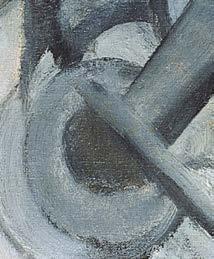


As we do every year, it is a pleasure to present the Museo Nacional Thyssen-Bornemisza’s Sustainability Report, which reflects the continuous efforts we make every day to be everyone’s museum of choice.
This ambition, which is manifested in the constant search for a more personalised and unique experience for each visitor, is forged in the maximum care, innovation and professionalism that we put into our exhibitions, the level of research and our experts’ knowledge of the works, guaranteeing their integrity and preservation for future generations, along with the commitment of each of our professionals and the determination to disseminate the artistic, cultural and pedagogical value of our collection.
In 2023, the 2019–2023 Strategic Plan was fulfilled in a way that, in some respects, has exceeded our forecasts. During this period, we received 4.1 million visitors and carried out more than 180 activities (exhibitions, tours, workshops, etc.), 189 activities with Friends and 423 educational initiatives.
In order to consolidate and improve upon these achievements, we approved the new Strategic Plan 2024–2028, aimed at placing the Museum at the forefront, expanding and diversifying its audience, reinforcing its social relevance, promoting research and technological innovation, strengthening the pillars of accessibility and inclusion, and ensuring transparency and financial sustainability.
At the same time, the Museum has maintained its commitment to combining its excellent exhibition offer with an approach to young audiences and visitors in general. To achieve this, we have continued with the development of numerous digital experiences such as those carried out in the Restoration Department, virtual tours, the #VersionaThyssen contest, guided online exhibitions, our EducaThyssen “stories”, our websites and social networks, and much, much more.
In line with the importance of technological development, we have continued to advance in the digital convergence model that constitutes a transversal and innovative framework, which gives us the levels of efficiency and a cutting edge that is necessary in a world full of challenges and in constant change.
In 2023, we continued to consolidate our commitment to non-discrimination, inclusion, equal opportunities and work-life balance through various measures that favour accessibility, conciliation and equality, among others, while also renewing the EFR (FamilyResponsible Company) certificate and the Universal Accessibility certificate for another year.
As part of our commitment to the planet and the fight against climate change, we have continued to make progress in the plan to reduce our main resource consumption and in measuring our carbon footprint in scopes 1, 2 and 3 of the international Greenhouse Gas Protocol (GHG) standard, registering this year’s footprint with the Ministry for Ecological Transition and Demographic Challenges (MITECO).
Finally, we would like to express our gratitude to the Friends of the Museum for their commitment to culture and to our exhibition projects, as well as to our professionals for their efforts to achieve our proposed goals and their unquestionable alignment with our values of trust, respect, participation, initiative, creativity and teamwork.
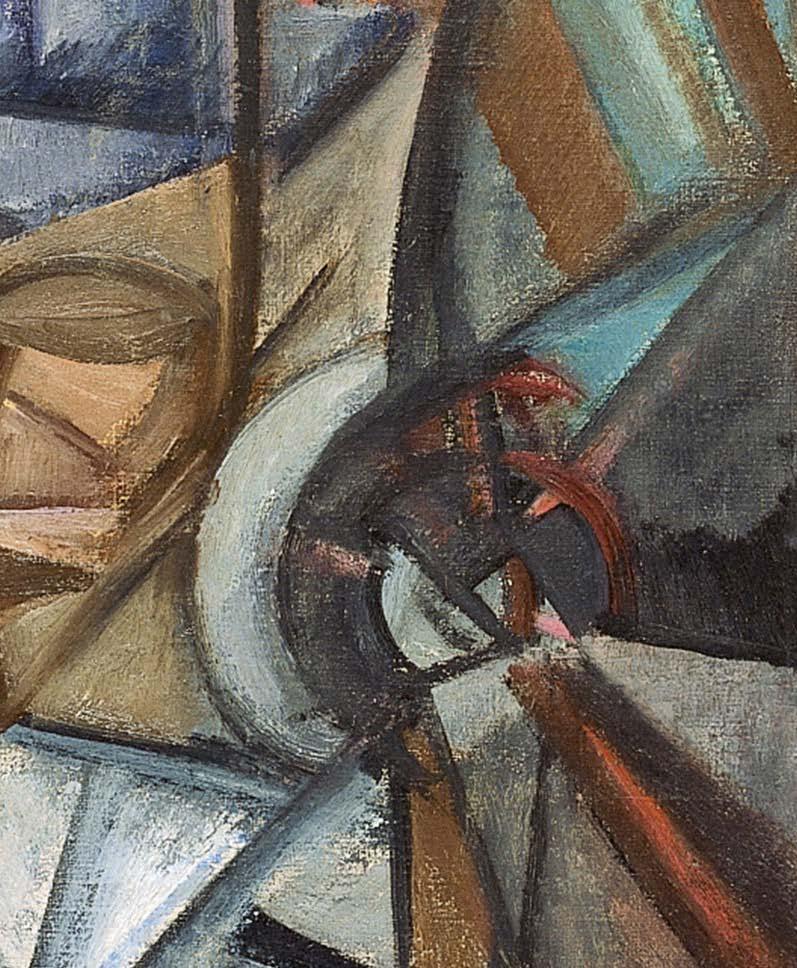
Managing Director Artistic Director
Evelio Acevedo Guillermo Solana



by everyone and for everyone

The Museo Nacional Thyssen-Bornemisza, along with the Museo Nacional del Prado and the Museo Nacional Centro de Arte Reina Sofía, forms part of what is known as the Golden Triangle of Art in Madrid, a museum area that houses the most important collections of paintings in Spain, and some of the most important in the world.
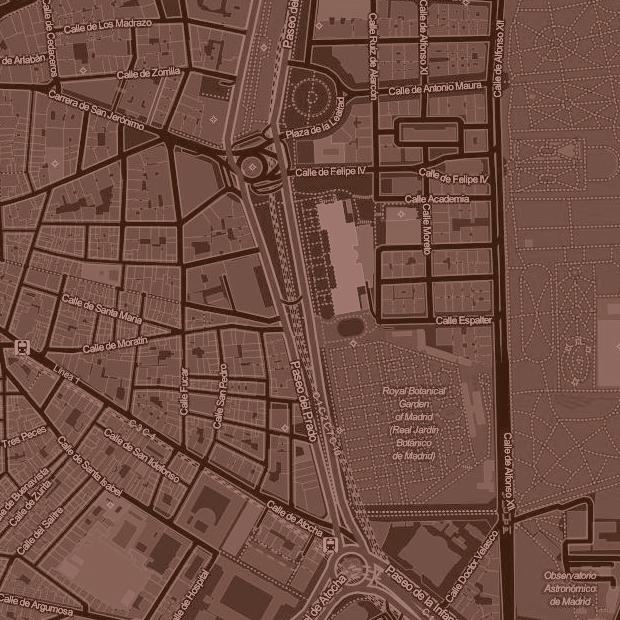
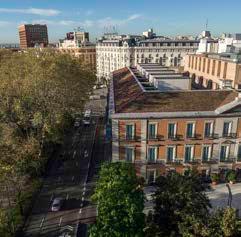


Acquired by the Spanish state in 1993, though originally privately owned, the Thyssen-Bornemisza Collection was conceived from the outset with the breadth of vision of a museum. Its encyclopaedic nature makes it a synthesis of Western painting with the presence of most of the styles of European and North American art between the 14th and 20th centuries. And despite the fact that its paintings were acquired over barely two generations and that it does not exceed a thousand works, it features a high number of masterpieces.
The Museum houses one of the richest and most varied collections of Western painting. Van Eyck, Dürer, Titian, Caravaggio, Rubens, Rembrandt, Canaletto, Monet, Degas, Morisot, Cézanne, Van Gogh, Picasso, Kirchner, Kandinsky, Goncharova, O’Keeffe, Hopper, Dalí and Pollock are just some of the names on the extensive list of great masters whose works make up the collection.
The Thyssen-Bornemisza Collection is housed in the Palace of Villahermosa, whose remodelling work began in 1990 at the hand of architect Rafael Moneo.
A few years later, an extension project began, based on the need to increase the exhibition space in order to exhibit the Carmen Thyssen Collection to the public, and thanks to the opportunity to acquire two adjacent buildings. The project was carried out by a team of architects made up of Manuel Baquero, Robert Brufau and the BOPBAA studio.
Since last year, thanks to the agreement between Barons Carmen and Borja Thyssen-Bornemisza and the Spanish Ministry of Culture and Sport, visitors can enjoy a wide selection of international works that will remain in the Museum for 15 years in exchange for the payment of 6.5 million euros per year.
Its location in the entrance hall allows visitors to rediscover the collection in a more coherent and complete way, following a chronological itinerary that goes from 17th-century Dutch painting to 20th-century art.

146 Employees Average number of staff

- Conserve the collection for future generations to enjoy.
- Regularly examine it and carry out the necessary restoration work.
- Guarantee the safe transport of works in the event of their loaning to other institutions.
- To research the works in the collection as fully as possible.
- To deepen understanding of the collection to serve as a basis for the Museum’s own exhibitions, activities and publications.
- To encourage the study of the collection by the research community, collaborating with other museums, universities and research centres in the most prestigious programmes linked to its assets.
- Creating attractive installations that help visitors to understand and enjoy the works in the collection.
- Organising first-class international exhibitions, mainly centred on the different art schools and movements that feature in the collection, with the aim of promoting the widest possible range of artistic offerings.
- To develop educational activities and produce publications about the collection aimed at an ever wider and more diverse public to help them understand and enjoy the works in the collection.
- To connect the works in the collection with the interests of today’s society, making the Museum a point of reference for citizens.

1,865 Participants 69 Proposals / Activities Study centre EducaThyssen
1,666,804 Visits 1,017,684 Visitors
13,157 Participants 83 Proposals / Activities Programmes for teachers and students
42 Sample laboratory Study of works
108 Graphic reports
6 Own publications
Catalogue: Lucian Freud. New Perspectives
Catalogue: The Occult in the Thyssen-Bornemisza Collections Catalogue: Women Masters
Catalogue: Picasso: The Sacred and the Profane
Catalogue: Ana Esteve Reig
Catalogue: Jordy Kerwick
2 Educational guides
Educational guide: Lucian Freud. Nuevas perspectivas
Educational guide: Women Masters
3,928 Guided virtual tours
Permanent collection
3,271 Participants 72 Proposals / Activities Public programmes for families, teenagers, young people and adults
52 Actions to adapt installations
4 Training residencies for Latin American museums +16 External visits Restoration area
Temporary exhibitions
In the Eye of the Storm: Modernism in Ukraine, 1900–1930s
Lucian Freud: New Perspectives
Wu Tsang: Of Whales
André Butzer
The Occult in the Thyssen-Bornemisza Collections
Liquid Intelligence
Women Masters
3,992 Participants 31
Proposals / Activities
Education and Social Action programmes
12,751,145 Website visits + 7.79% 2023 vs 2022
+ Impact on social media
31 Events organised 2,872 No. of attendees
Renewal of the Q for Quality Tourism Standard UNE 302002
Recognises the attention paid to the visitor experience. NPS 79.3 Rating + higher since 2020
Renewal of Universal Accessibility certificate UNE 170001-2





The Thyssen-Bornemisza Collection Foundation, a private entity associated to the General State Administration through the Ministry of Culture, is responsible for the management, conservation, study, public exhibition and dissemination of the Museo Nacional Thyssen-Bornemisza’s art collection, acquired by the Spanish state in 1993.
The highest governing body of the Museo Nacional Thyssen-Bornemisza is the Board of Trustees, which is made up of 12 trustees under the patronage of His Majesty King Felipe VI.
The presidency of the Board of Trustees is held by the Minister of Culture and Sport and the lifelong Vice Presidency is held by Baroness Carmen Thyssen-Bornemisza.
The Spanish state, by means of the Government, participates in the Museum’s Board of Trustees by appointing two thirds of its members.
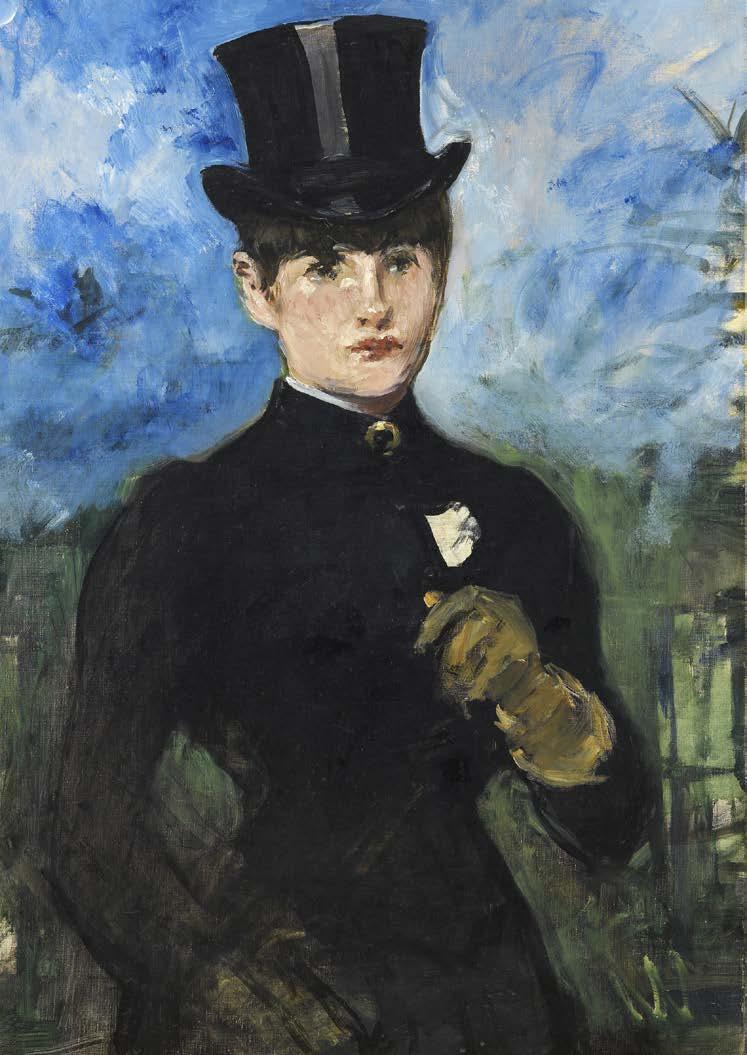
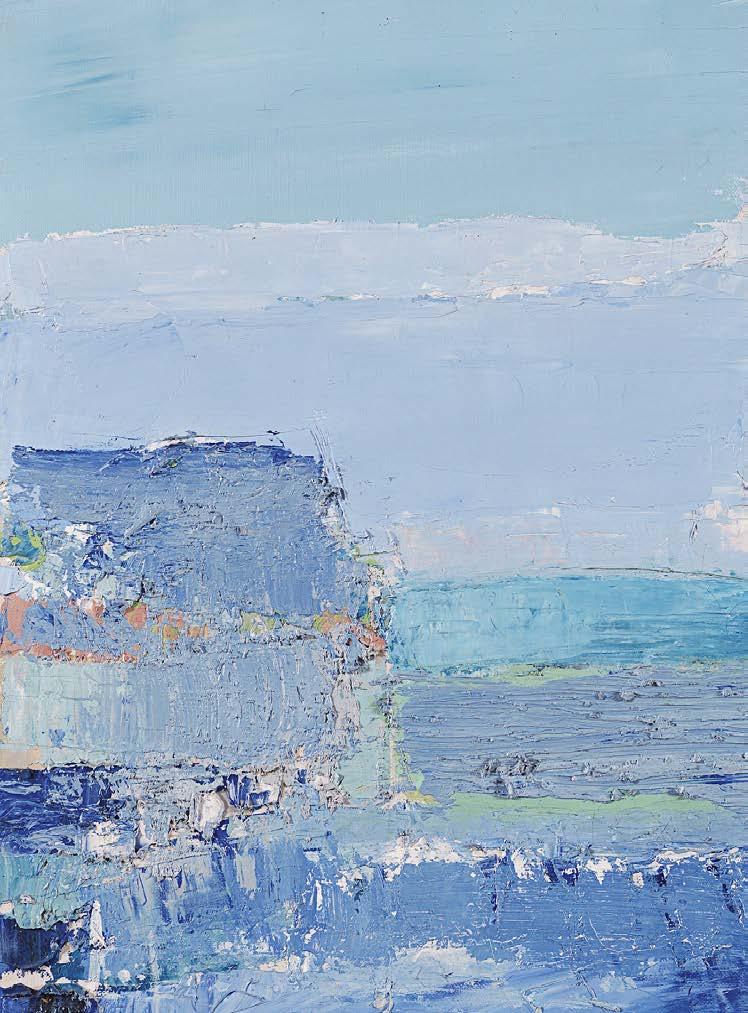
President
María Pérez-Sánchez Laulhé
UNDER-SECRETARY FOR CULTURE
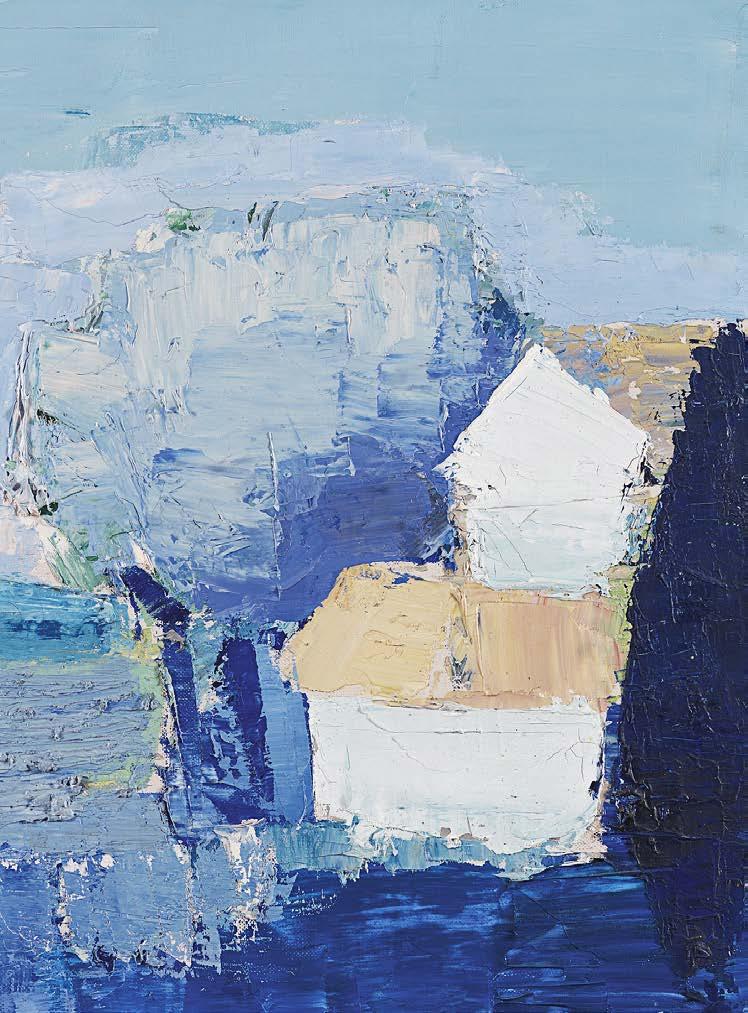
Víctor Francos
SECRETARY GENERAL FOR CULTURE
Isaac Sastre de Diego
DIRECTOR GENERAL OF FINE ARTS
María José Gualda Romero
SECRETARY OF STATE FOR BUDGETS AND EXPENDITURE
María de Corral López-Dóriga
Salomé Abril-Martorell Hernández
Baroness Francesca Thyssen-Bornemisza
Miguel Klingenberg Baron Borja Thyssen-Bornemisza
The Board of Trustees is the Foundation’s highest governing body. Its powers cover all aspects of the Foundation’s actions and business, the organisation and disposal of the assets in the collection, the development of cultural and commercial activities, among others. It also represents the Foundation in various national and international spheres, with the aim of enhancing the Museum’s reputation and relevance at a national level.
The Board of Trustees meets periodically, requiring the attendance of eight trustees, either present or represented, and adopts its resolutions by simple or qualified majorities in the cases established in its statutes.
• Transparency and good governance policy
• Transparency portal
• Code of ethics and good governance principles
The Code of Ethics and Good Governance establishes the principles, mandates and rules of conduct that must govern the activities of the Museo Nacional Thyssen-Bornemisza, as well as those carried out by the members of the Board of Trustees, directors,
• Most Transparent Museum in Spain since 2019, Compromiso y Transparencia Foundation (now HAZ Foundation)
• Updating and adaptation of the Code of Ethics and Good Governance
managers and employees. It also reinforces full compliance with the legal and statutory framework in order to ensure exemplary ethical governance, characterised by a culture of integrity, transparency and good governance.
The new Code of Ethics and Good Governance of the Museo Nacional Thyssen-Bornemisza was approved by the Board of Trustees on 4 July 2023.

The Code of Ethics and Good Governance is based on the following values:

Economic autonomy
Flexibility
Transparency
Values of the Museo Nacional ThyssenBornemisza
Excellence
Sustainability
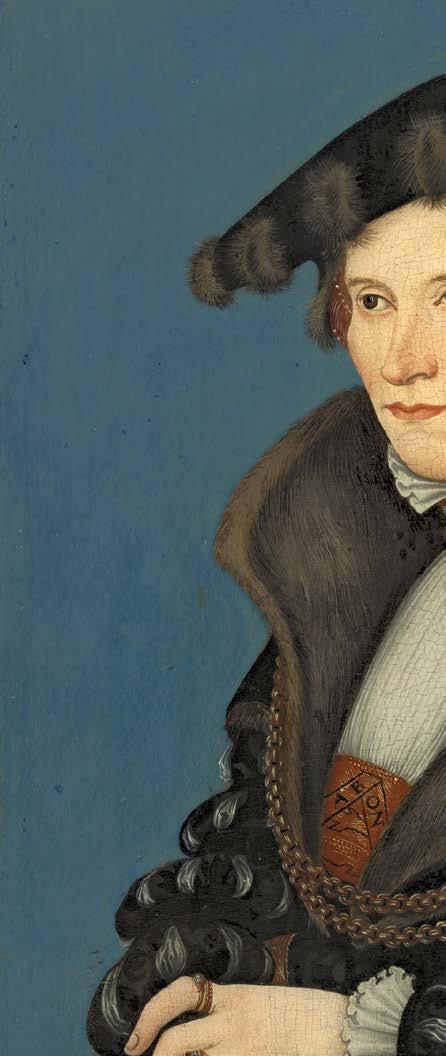
Equality
Inclusion

As an example of these values and in compliance with Law 19/2013 on Transparency, Access to Public Information and Good Governance, as well as national and international standards, the Museum has a Transparency Portal. This contains all relevant and updated information on the mission, values, regulations, organisation and good governance, financial information and contracts, activities, strategies and results, etc.
In order to ensure compliance with, monitoring and control of the Code of Ethics and Good Governance and the Transparency Policy, the Ethics and Good Governance Committee has been set up, which also oversees its dissemination and interpretation.
The Committee is a collegiate body made up of those holding the following positions: Head of the Administration and Finance Area, Head of the Human Resources and General Services Area and Head of the Registry Area.
The main functions of the Committee are as follows:
Manage the Ethics Channel.
Promote and disseminate the culture of ethics and framework of integrity and compliance with the documents that comprise it in all the Museum’s actions.
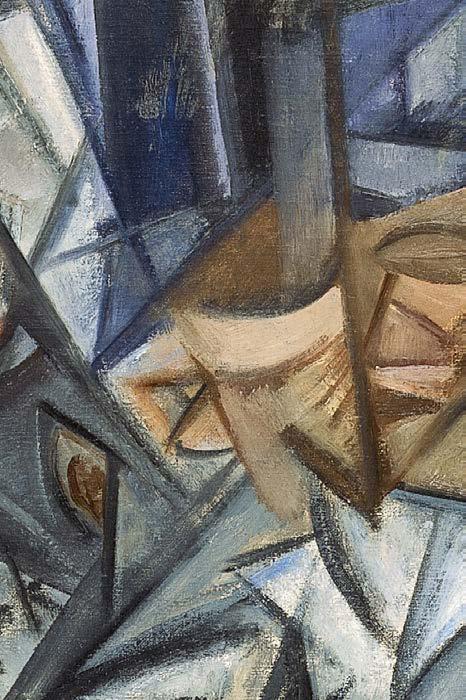
Decide on possible sanctions and infringements in application of the code and current legislation.

Resolve any queries and doubts that may arise in the interpretation of the code and to put forward associated recommendations.
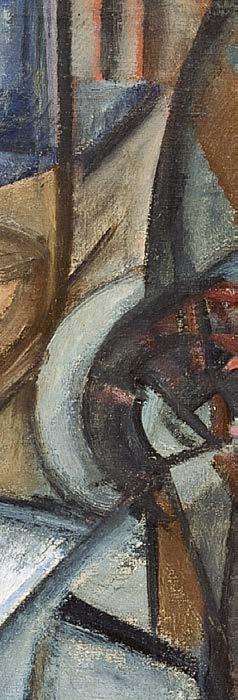
Promote and propose the necessary training and awareness-raising actions for the culture of ethics.
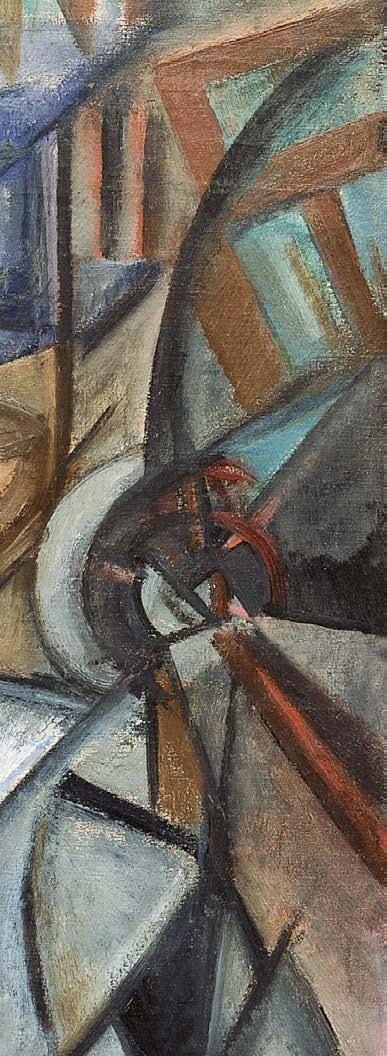
Submit a six-monthly monitoring report to the Managing Director, evaluating the actions carried out and proposing any necessary improvements.
In order to enable employees, collaborators and other interested parties to report irregularities, unethical conduct or breaches of the code, as well as to comply with the provisions of Law 2/2023, which regulates the protection of individuals who report breaches of regulations and speak out against corruption, the Museum has set up an Ethics Channel. This channel, through the Whistleblower Software ApS platform, makes it possible to guarantee the confidentiality of the reports received and to maintain the privacy of the information and the anonymity of the whistleblower, encouraging people to report any improper behaviour and ensuring that the necessary measures are taken to deal with irregularities in an appropriate, fair and proportionate manner.
The Ethics and Good Governance Committee is responsible for receiving and managing reports submitted through the Ethics Channel, in accordance with the Operating Protocol, available on the intranet.
The Museum is directed by Evelio Acevedo (appointed in 2012) and Guillermo Solana (appointed in 2005), managing director and artistic director, respectively.
The managing director is responsible for managing the organisation, administration, coordination, strategic planning and the smooth running of the Foundation and its human and financial resources.
The artistic director is responsible for the Museum Plan and for the conservation and care of the works of art and other artistic assets of the Foundation.
Management
Managing Director
Evelio Acevedo
Art Direction
Artistic Director
Guillermo Solana
Administration and Finance Ciriaco García Enebral Operations and Maintenance Alberto Hernández
Security Antonio Manzano Rey
Human Resources and General Services Teresa Gutiérrez
Communication and External Relations José Mª Goicoechea
Shop and Publications Ana Cela
Technology Javier Espadas
Marketing and Strategic Business Development Carolina Fàbregas
Old Masters Painting Mar Borobia
Modern Painting Paloma Alarcó
Restoration Ubaldo Sedano
Registry Marián Aparicio
Education Rufino Ferreras


The directorate is the team responsible for the Museum’s management and Museum Plan, while ensuring that the Museum’s mission and vision are fulfilled.
In 2023, the 2019–2023 Strategic Plan was finalised, aimed at reinforcing the strategic model of “Being identified as a National Museum, an influential cultural asset, with a vocation for public service and the highest level of museum experience quality, as well as being economically sustainable and with a good level of self-financing”.
With this objective in mind, 6 main lines of action were defined:
collection, temporary exhibitions and communications
During this period, the Museum has been able to meet the established objectives, even exceeding them in certain areas of action.

Increasing income
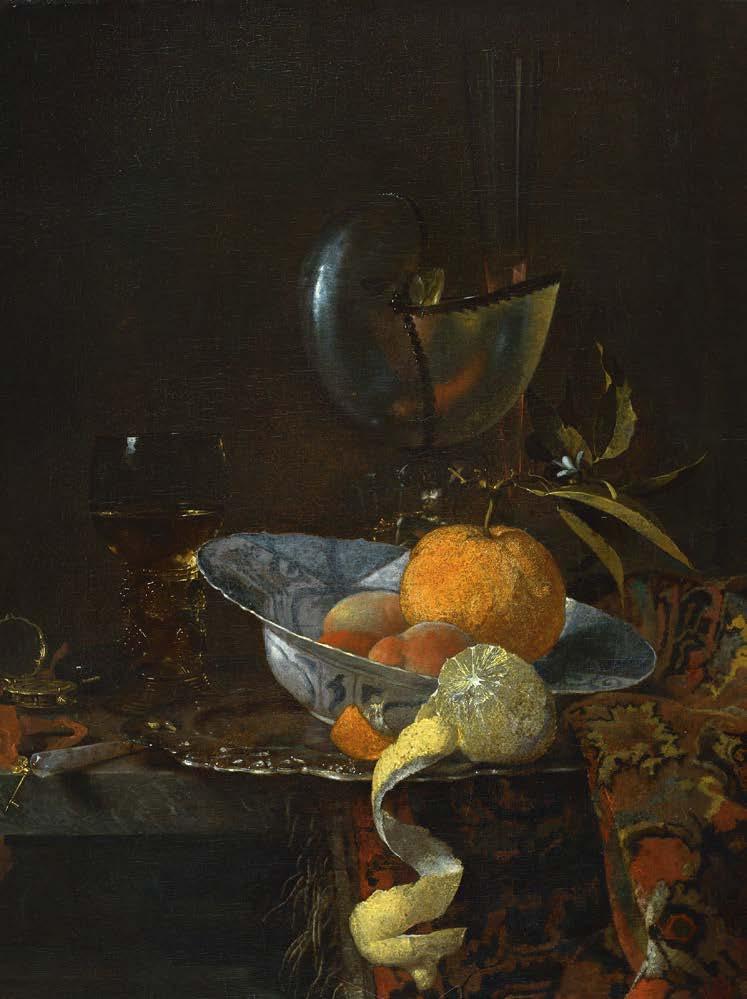
2,479 million euros contribution to the GDP of the Community of Madrid activities Friends programme 189 educational activities carried out 423 activities carried out (exhibitions, tours, etc.)
180
4.1 million visitors
In 2023, the Museum worked on the action plans for the achievement of the objectives.
In 2023, the Museum worked on the defined action plans for the achievement of the objectives set.
Objectives
National and public museum
Working to highlight the economic and social impact of the Museum, as well as continuing to work on governance, transparency and sustainability of management in all areas (economic, social, environmental and ethical).
Public service
With a positive economic impact on society
1,017,684 visitors
10 temporary exhibitions
The Museum contributes 0.19% to the GDP of the Autonomous Community of Madrid
With ethical governance
Social character
Working to transmit knowledge and educate through the collection, committed to the 2030 Agenda and to responsible and efficient consumption.
Structuring and transmitting values
Leading innovation and technology
Being a leader in the modernisation of the museum model and in digital transformation, and enabling innovation in content and experiences.
Promoter of education, committed to the 2030 Agenda for integration, accessibility, inclusion, diversity and dialogue
Whistleblowing channel: as part of its policy of transparency and in compliance with Law 2/2023 on the Protection of Whistleblowers, a confidential and anonymous whistleblowing system has been set up
EducaThyssen: 126 activities, 815 visits and 19,548 participants
58 activities for Friends of the Museum with 6,796 participants
Accessibility (UNE 170001-2), Emergency Management (ISO 22320), Quality Tourism (UNE 302002 and UNE 170001-2) and EFR (FamilyResponsible Company) certificates
Queen Letizia National Disability Award 2022 in the Inclusive Culture category for the Education and Social Action Programme of the Education Department
Remarkable Venue Awards 2023, by Tiquets
Sustainable packaging: renewal of shop products and packaging for more sustainable materials
Reduction of consumption: -20% of the established annual target for energy consumption, -50% of the established annual target for water consumption
Responsible and efficient consumption, committed to the environment
Leading the modernisation of the museum model
Leading the digital transformation
Enabling innovation in content and experience

100% of suppliers deliver goods without plastics
Significant reduction in the construction of new wooden packaging through the remodelling of artwork transport boxes, complying with the sustainability commitments of the Sustainable Development Plan set out in Agenda 2030
12.7 million web pages viewed
1.3 million followers across all social media platforms
64 cross-training actions in personal skills and digital competencies for Museum staff
Guided virtual tours, a new line of digital business, with 4,000 experiences sold
Improvements and new content on the virtual Museum platform
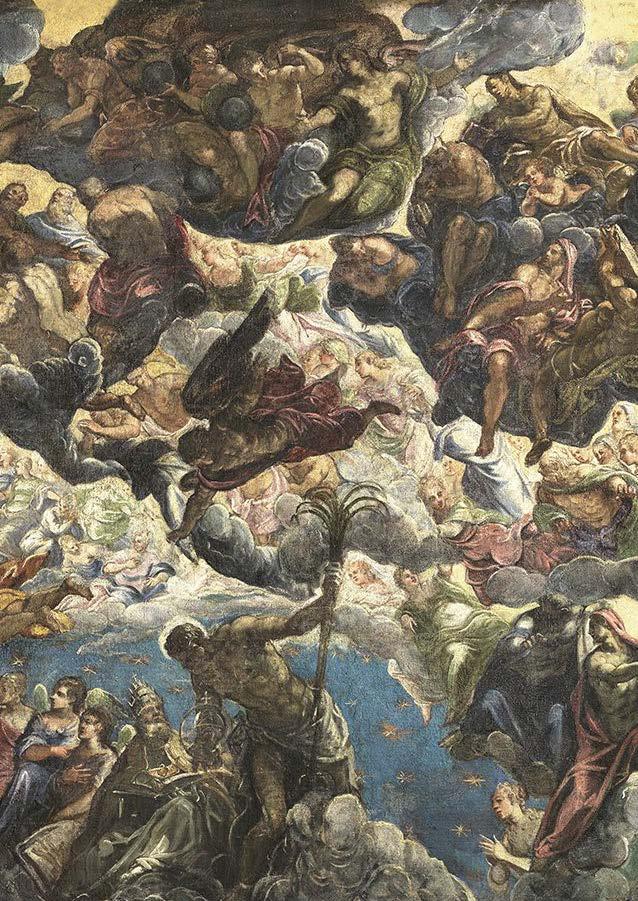
Increased income
Through a greater focus on the public, strengthening communications and creating a fundraising unit
Orientation towards the public/markets/ marketing
Enhancing communication
Creating the fundraising unit
Efficiency and cost reduction
Focusing especially on an optimised organisational structure, improved procedures and automation
Conservation of the permanent collection, temporary exhibitions and communication
Guaranteeing the state of the collection and optimising the dissemination of activities and corporate communications
Optimised organisational structure
Procedures and automation
Guaranteeing the state of the collection
Optimising the dissemination of activities and corporate communications
The planned visitor goal was reached. Profit from the Shop was +1.2% higher than in 2022. The private visits programme exceeded the 2022 revenue figure by 38%
Boosting the exhibition programme
The Sponsorship and Fundraising Programme achieved 16% more income than in 2022
Microsoft Business Central ERP system: new functionalities such as Document Capture for the automation of invoice receipts by email have been incorporated
The use of Sharepoint has been promoted as a tool for collaborative work in order to reduce the sending of emails
Development of the implementation phase of the collections management system, TMS GALLERY SYSTEMS and digital assets with the intervention of all conservation areas
21 communications actions carried out
In 2023, the Museum approved the new Strategic Plan 2024–2028, its roadmap for the next five years. This Plan aims to place the Museum at the forefront, broadening and diversifying its audience, reinforcing its social impact, promoting research and technological innovation, strengthening the pillars of accessibility and inclusion, and ensuring its transparency and financial sustainability.
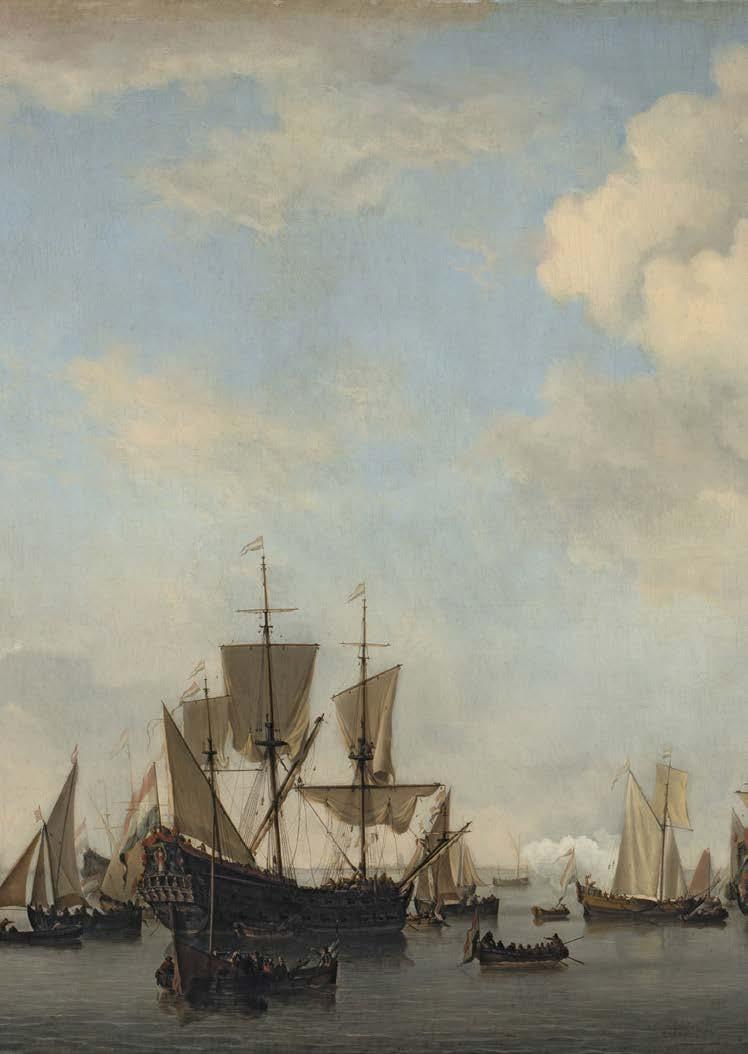
Reinforce the Museum’s identity as both National and Public
Consolidate the Museum as a cultural reference at a national level and as a space accessible to the public. This implies promoting its national character and the idea that it is a museum for all citizens.
Promote the Museum’s social and institutional character
Strengthen the role of the museum as a relevant cultural institution in society. This includes activities and programmes that promote community participation, as well as collaborations with other cultural and educational institutions.
Enrich artistic activity
Improve and diversify the artistic proposals offered by the Museum, restoring emblematic works, organising temporary exhibitions, promoting emerging artists, etc.
aims and core ideas
• A clear public service offer
• Transparency, Ethics and Good Governance
• Transmission of the Museum’s values
• National and international projection
• Positive impact on society
• Improvement of conservation activities
• Optimisation of the promotion of activities and their impact
This plan seeks to consolidate and improve the previous plans.

Renewing our commitment to sustainability and diversity
Prioritise environmental sustainability and the promotion of diversity in our exhibitions, programmes and staff, reflecting the Museum’s social responsibility.
Innovation and digital transformation
Adopt digital technologies and innovative strategies to improve the visitor experience as well as the internal management of the Museum.
Improve the Museum’s financial sustainability
Optimise the Museum’s commercial activities with the aim of increasing revenue and financial sustainability.
Optimise the cost structure
Continue to manage the Museum’s financial resources more efficiently, reducing costs and maximising investment in activities that support the other strategic objectives.
• Environmental responsibility
• Employee well-being
• Engagement and accessibility
• Diversity and inclusion
• Omni-channel offer
• Process optimisation
• Transparency and availability of data
• Development of new revenue streams
• Optimisation of sales channels
• Improved brand positioning
• Process automation
• Optimisation of management control

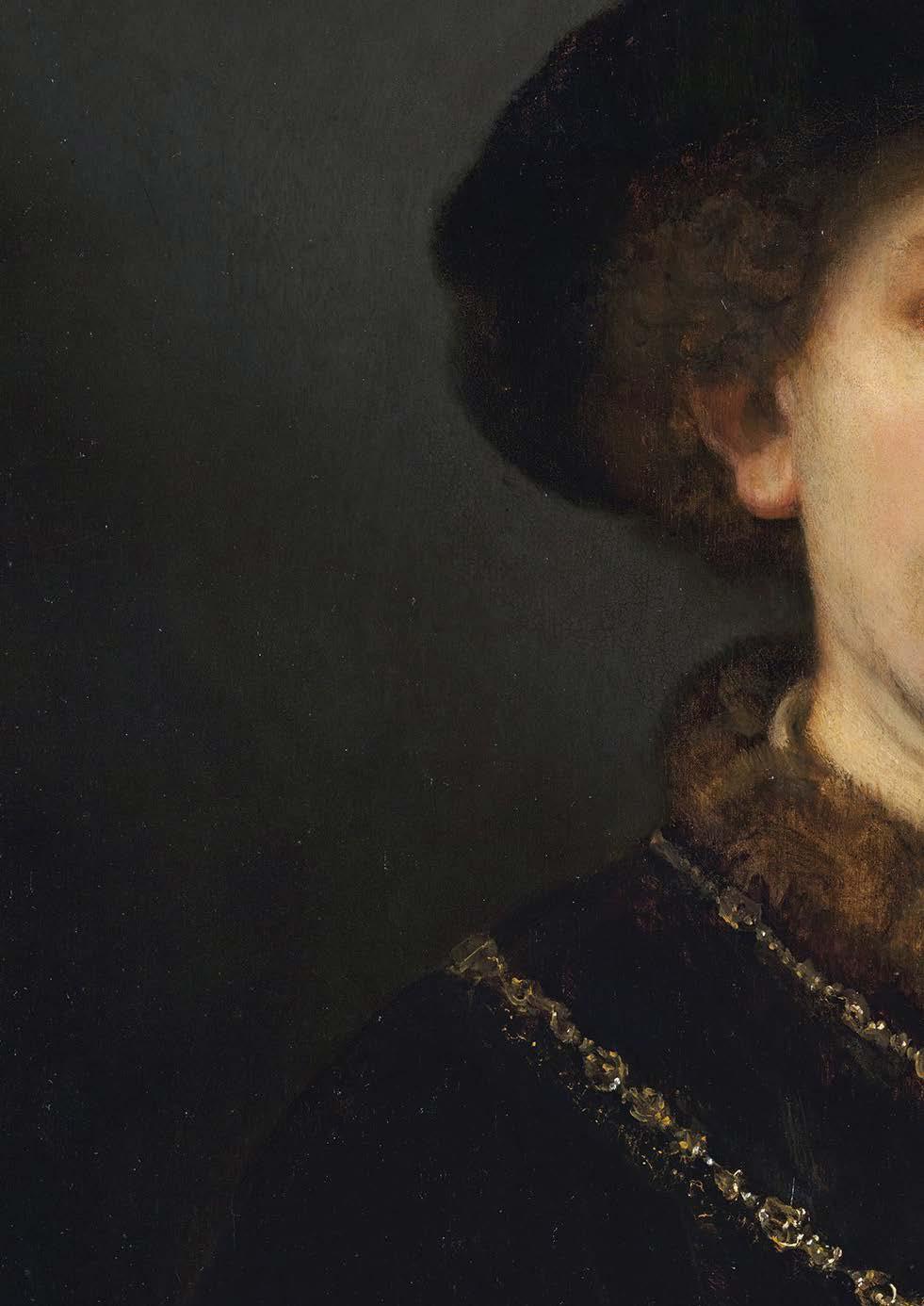
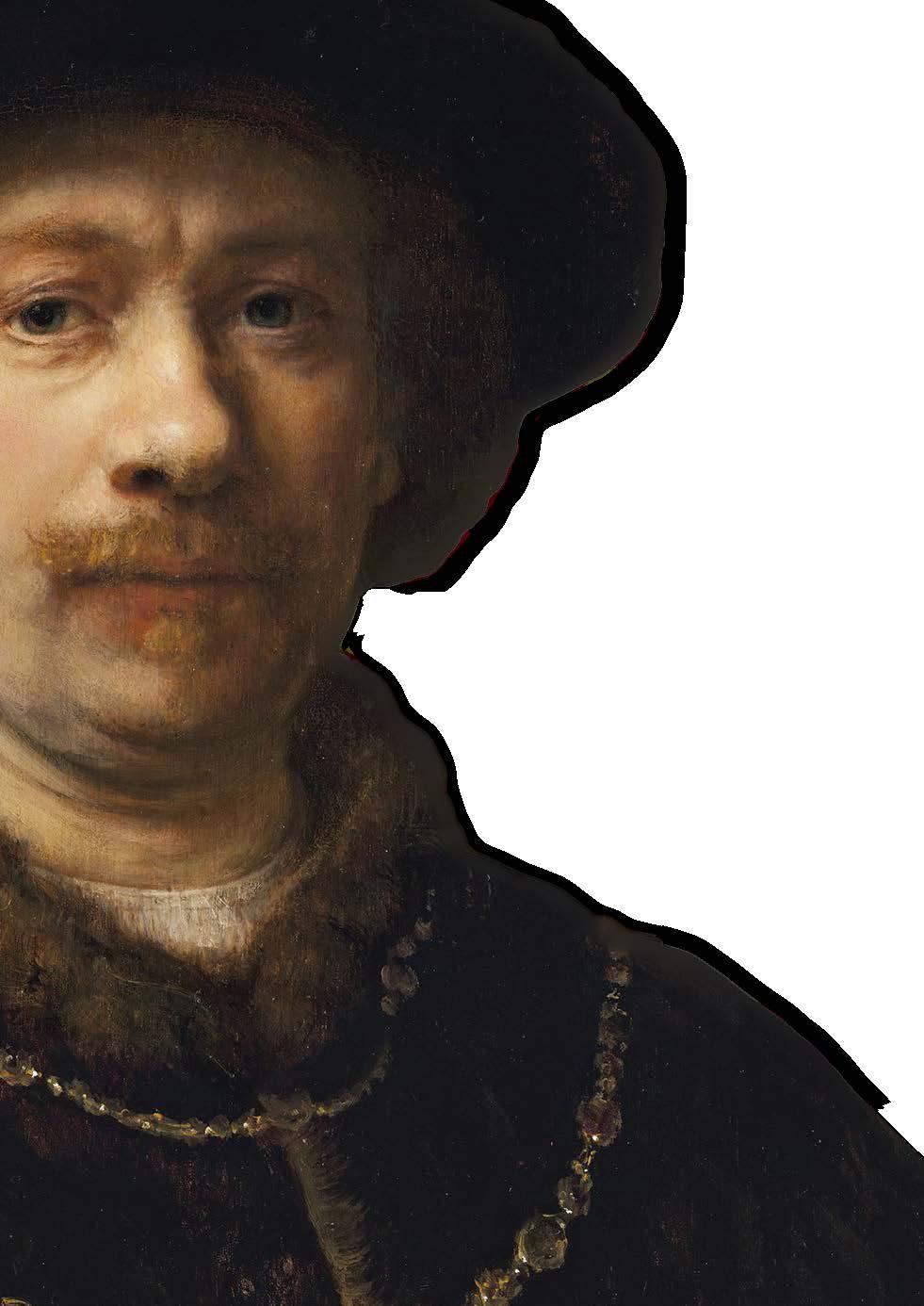

The Museo Nacional ThyssenBornemisza’s purpose, vision and values are well defined, allowing it to project itself clearly in the long term, contribute to building solid relationships with the different stakeholders and establish clear guidelines for the day-to-day work of all those who make up the institution.

“The Museum believes in art’s ability to enrich people, encourage their creativity and critical thinking, and improve their quality of life.” And it does so by preserving the collection for future generations through the restoration, study and research of the works, as well as through programming and dissemination.
329
Works from the Carmen Thyssen Collection
802
Works that make up the Museum’s permanent collection
1
From the Blanca and Borja Thyssen-Bornemisza Collection on permanent loan to the Museum
747
Works on display at the Museo Nacional Thyssen-Bornemisza
55
On loan to the Museu Nacional d’Art de Catalunya in Barcelona


Works on temporary loan from the private collections Ghirlandaio Collections, Ltd., Gemini Masters and Antonello Collection, as well as from the collections of Francesca Thyssen-Bornemisza and Blanca and Borja Thyssen-Bornemisza.
The works by Lluis Hortalà Before the Law There Is a Guardian and Trompe L’Oeil of a Gun Rack by Jacobus Biltius are on loan
34 Restored pieces
Seminars, conferences, presentations, research
- Visits by teachers and researchers - Private visits - External consultations by researchers

52 Actions to adapt installations
16 Digitisation of radiographic plates
108 Visual reports
42 Samples laboratory Studies of works
More than 200 people and companies, united by the same purpose: to restore a masterpiece

Our aim as a department is to investigate and deepen our knowledge of the works in order to recover their integrity by applying the treatments that allow these cultural assets to survive, and to remedy the damage that the passage of time and the ageing of the materials have caused.
The Restoration Department is responsible for the conservation of the works housed in the Museum. The planning of the necessary interventions for the conservation of the works is the result of the exhaustive and continuous review of the pieces that make up the collection, of the observations collected during the maintenance of the rooms, of the warnings or reports of incidents that other areas send to Restoration, and of the policy of exhibitions and loans to other institutions, which entails constant planning regarding the restoration of the works, both from the Museum’s collections and from other institutions or private collectors.
In order to guarantee the stability and permanence of the works, research is one of the basic foundations. Knowledge of the intimate composition of the works of art and the artists’ creative processes are fundamental in order to resolve certain issues and questions that arise through the different lines of study.
Preventive conservation was born with the purpose of adopting the possible measures and actions aimed at preventing or minimising the damage that may affect the works that belong to our Heritage. A large part of its philosophy is based on risk assessment protocols in order to foresee and implement appropriate prevention and protection measures according to the characteristics and nature of these works, such as the detection of biodeterioration agents. One of the most important tasks in preventive conservation is the conditioning and improvement of the artworks’ mountings, the installation of protections, the placement of stabilisers to regulate the relative humidity and the creation of climate boxes that guarantee adequate insulation.
Restoration highlights and enhances the value of our works. Its purpose is to recover the integrity of each piece by applying treatments that allow the survival of these cultural assets, and to repair the damage that the passage of time, handling and ageing of the materials have caused. The Restoration Department collaborates in the supervision and state of conservation of the works on loan during the assembly and dismantling of the temporary exhibitions. It also tries to resolve any conservation issues that may arise within the framework of the legality established between the institutions that lend their works. In this sense, the figure of the courier plays a very important role in the preventive conservation of the works by accompanying them when they travel.
This year we carried out treatments of the paintings’ pictorial layers and their supports, as we continue with the plan to restore the frames in the collection as a simultaneous line of work.
Ubaldo Sedano Espín Head of Restoration at the Museo Nacional Thyssen-Bornemisza
Thanks to the crowdfunding contributions of individuals and companies, in 2024 it will be possible to carry out the restoration work on the painting, which includes the completion of the different study techniques and material analysis of the piece. The restoration process will consist of reinforcing the edges of the canvas, which are badly damaged, by means of grafts and stitches; consolidating the paint layers, compensating for their lack of adherence in some areas, and removing the remains of varnish, deposits and dirt from the surface.

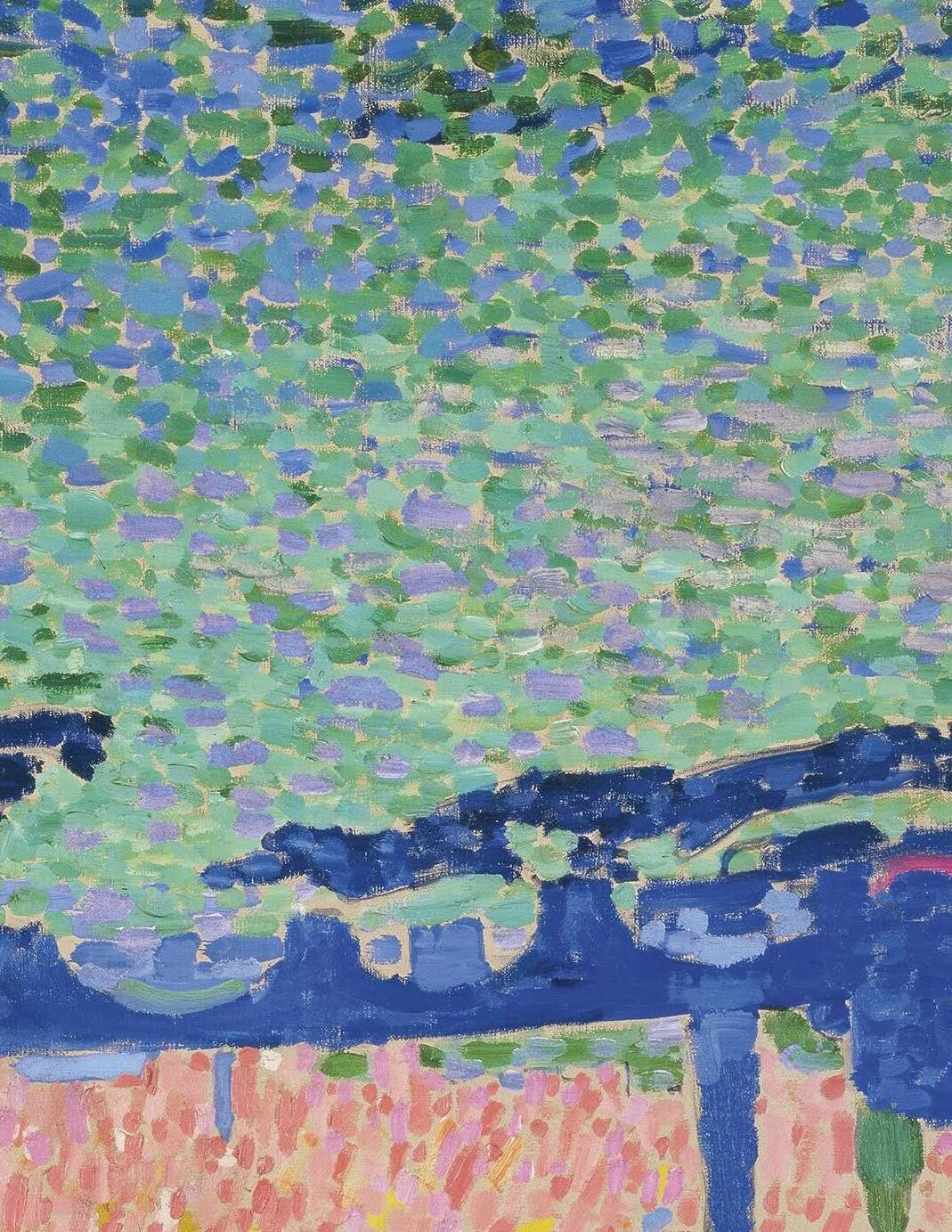
During 2022, restoration work began on The Virgin of Humility, one of the main jobs that has occupied the department, extending into 2023 as various activities have been carried around this project throughout the year. These included specialised conferences, a concert by internationally recognised conductor and composer Jordi Savall, and a special exhibition in Room 11 of the permanent collection showing the painting’s creation process and fundamental aspects of its restoration by exhibiting it in a unique way. The funds for both the special exhibition and restoration of this work of art by Fra Angelico were generously provided through a grant from the Bank of America Art Conservation Project. Bank of America contributed to the restoration and subsequent mounting of the painting.
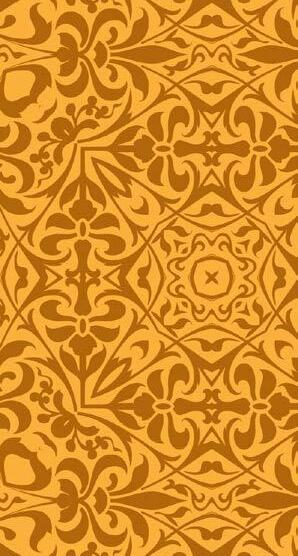
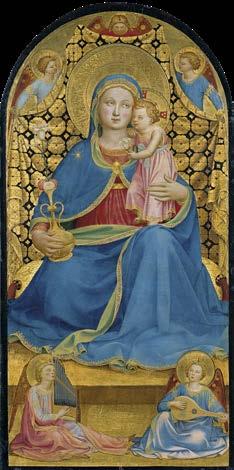
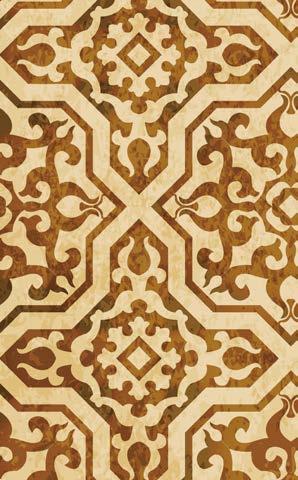
Another of the works that required careful intervention was this triptych by Master Bertram. In this case, the piece displayed an alteration of its original colours, enormous surface wear and a variation in the tonality of the repainting, making it difficult to read the work correctly. After a thorough technical study, the repainting was removed, the gilded areas, which had lost their shine, were cleaned, and the most damaged areas were integrated. In this way, the piece’s integrity was restored and its durability was protected.


Herbin’s work was badly damaged by the cracking of the layers of colour, which was very pronounced and in danger of peeling off. This widespread alteration was most evident in the red area in the centre of the composition, as well as in the black and brown areas with yellow dots. There were numerous losses of material around these areas. The restoration process consisted of consolidating the paint layers, chromatic reintegration and correcting the deformation of the support in order to restore the piece’s integrity.

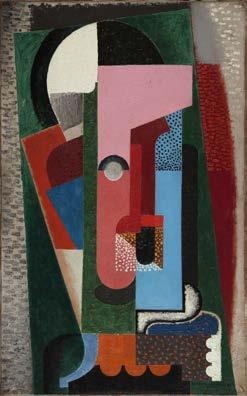

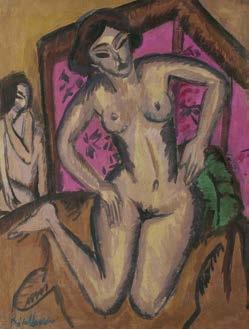

Kneeling Nude in Front of Red Screen is a delicate painting that showed widespread cracking, numerous material losses and paint particles in danger of detachment. The intervention process consisted of a technical study and the corresponding tests for the consolidation and subsequent reintegration of the paint layers, in order to guarantee the painting’s sustainability and durability as a piece of universal heritage.

Leon KOSSOFF
This painting by Kossoff is a fragile one due to its technique. The surface of the painting had a veil of dark dirt on it, which prevented the original colours from showing through. Once this layer of dirt had been removed, the paint layers were treated by consolidating the nails adhering to the edges of the work, which were causing deep cracks and making the support unstable.


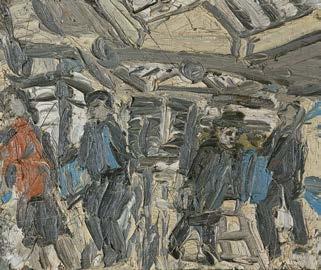

Like in many works from this period, the paint is delicate as a result of a deficient technique. Many craquelures and deformations had formed on it, which are the consequence of this technique, carried out with too much impasto and excessive amounts of paint for a relatively fragile support. The restoration consisted of fixing the paint layers. The areas with ridges and craquelure that were at risk of loss were stabilised. The treatment was carried out to extend the piece’s durability.
The intervention on this work was carried out over a period of three years, due to its complexity and size. Altered varnishes and old repaints and retouches, which covered large areas of the original, were removed in order to restore the homogeneity of the surface. Subsequently, the missing paint was reintegrated to recover the original subtleties and textures of the piece.



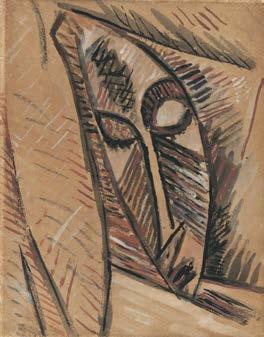

In the original support, the cellulose was very degraded and had a friability that made it extremely vulnerable. The perimeter was showing losses, tears and flaking. This deterioration was due to the acidity of the support. The oxidation of the cellulose caused the support to show a darkened colour that altered the original chromatic intention, as a result of which some of the nuances of the original brushstrokes could not be seen and were confused with the background. The paint layer displayed craquelure and losses in the white areas, as well as abrasions in different parts.
The intervention consisted of consolidating the support, the perimeter and the paint layers, and reinforcing the perimeter with grafts. The parts with exfoliations and losses were also reinforced with grafts of Japanese paper.
The surface was then cleaned mechanically.
2023
(29 November 2022 to 2 May 2023)
Organised a few months after the Russian invasion and coordinated by Marta Ruiz del Árbol, the exhibition presented a complete overview of Ukrainian avant-garde art in the first decades of the 20th century, showing the different artistic trends, from figurative art to futurism and constructivism.


(21 February to 11 June 2023)
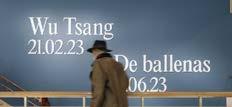
(14 February to 18 June 2023)
An installation by American artist Wu Tsang (1982) based on the film adaptation of Herman Melville’s novel Moby Dick. Presented at the Venice Biennale 2022 as part of the international art exhibition The Milk of Dreams, it features psychedelic oceanic environments generated by means of extended reality technologies.
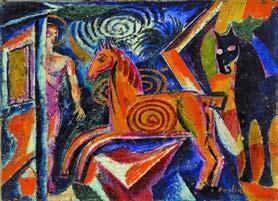

(30 January to 23 April 2023)
Curated by Paloma Alarcó alongside Clara Marcellán as technical curator, the exhibition was organised in collaboration with the National Gallery in London to celebrate the work of this important 20th-century figurative painter and to shed new light on his oeuvre.
The exhibition, curated by Semíramis González and coordinated by Laura Andrada, from the Museum’s Conservation Department, forms part of the Kora series of exhibitions. This series deals with gender perspective, and Stages of Fiction, a solo show by the artist Ana Esteve Reig (Agres, 1986), addresses issues such as identity and its construction, the importance of images in this process and the elements that culturally configure people to be the way they are.
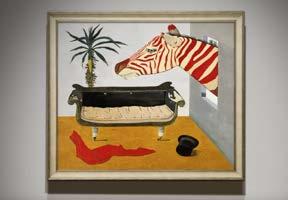
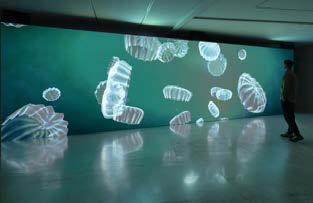
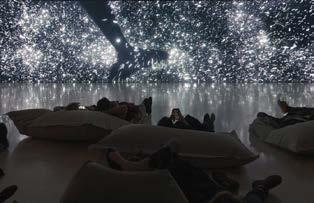
(9 May to 10 September 2023)
This marked the first retrospective of André Butzer (1973, Stuttgart, Germany) in an institution outside his own country. Coinciding with the artist’s 50th birthday, the exhibition brought together a selection of 22 works, produced between 1999 and 2022, which includes some of his most iconic paintings and reveals the dimension of his painting experience. Among them are two works recently added to the Blanca and Borja ThyssenBornemisza Collection: Aladdin and the Magic Oil Lamp (2010) and Untitled (2022).
Curated by the Museum’s artistic director, Guillermo Solana, in close collaboration with the painter’s studio, it marks the beginning of a new series of exhibitions on artists from the Blanca and Borja ThyssenBornemisza Collection.
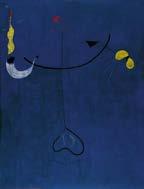
(1 July to 8 October 2023)
(22 September 2023 to 15 January 2024)

The exhibition programme dedicated to the Blanca and Borja Thyssen-Bornemisza Collection brought to the Museum an emerging figure in new painting: Australian artist Jordy Kerwick (Melbourne, 1982). The exhibition featured nine pieces, ranging from large-format canvases to smaller works on paper, including three paintings from said collection.
This exhibition, curated by Guillermo Solana, features 59 works of art from the ThyssenBornemisza collections (including both the Museum’s permanent collection and the collections of various members of the ThyssenBornemisza family) in which traces of the have been detected and can be documented. The esoteric tradition offers us a series of to decipher hidden meanings. Its value lies revealing certain details and aspects that unnoticed in the works of art: alchemy, astrology, demonology, theosophy, shamanism, etc.
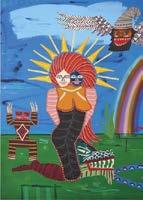
(10 October 2023 to 28 January 2024)
Curated by Chus Martínez, with Soledad Gutiérrez and María Montero Sierra, Museo Nacional Thyssen- Bornemisza and the TBA21 Foundation presented Liquid Intelligence, a group show on the critical situation of life in the ocean that highlights more than a decade of the Foundation’s dedication to the development of interdisciplinary research projects in the field of ecology, in which artistic practices play a fundamental role.

Solana, Thyssenthe the private Thyssenthe occult documented. of codes lies in that have gone astrology, etc.
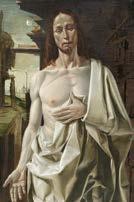

Jordy Kerwick
Jules and His Friends 2022
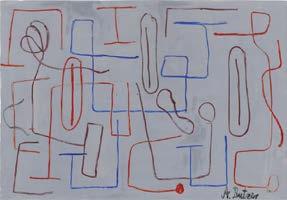
Bramantino (Bartolomeo Suardi) The Risen Christ ca. 1490
Mixed media on panel 109 x 73 cm

Soledad the Bornemisza presented the interdisciplinary ecology,
Spray paint, acrylic and oil on canvas 200 x 300 cm
Blanca and Borja Thyssen-Bornemisza Collection

Manna Gutted 2021 Installation view of: Thirty Plumbers in the Belly Museum of Contemporary Art, Antwerp (M KHA)

(31 October 2023 to 4 February 2024)

Artemisia Gentileschi, Angelica Kauffmann, Clara Peeters, Rosa Bonheur, Mary Cassatt, Berthe Morisot, María Blanchard, Natalia Goncharova, Sonia Delaunay and Maruja Mallo were famous artists of their time who are now once again recognised as masters, in response to the erasure they suffered in art history, alongside others who broke the mould with works of unquestionable excellence.
Featuring almost a hundred pieces, including paintings, sculptures, works on paper and textiles, this exhibition, curated by Rocío de la Villa from a feminist perspective, presents a journey from the end of the 16th century to the first decades of the 20th century, through eight relevant scenes that women have experienced on their path towards emancipation. Based on the current notion of sisterhood, it focuses on groups of artists, patrons and gallery owners who connected through their values and shared favourable socio-cultural and theoretical conditions, despite the patriarchal system.
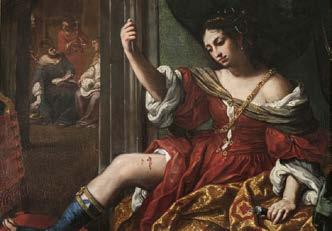

(31 May to 8 October 2023)


This special exhibition created a prolific dialogue between the Museum’s newly reinstalled modern art collection and more than 25 works from the TBA21 Collection. These Encounters highlighted the collecting passion of four generations of the Thyssen family and examined the transhistorical narratives and sensibilities at work in their respective collections.
presents
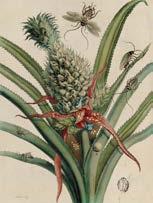
Maria Sibylla Merian
Dissertation in Insect Generations and Metamorphosis in Surinam
The Hague, 1726
Intaglio print and watercolour on paper
× 38 cm
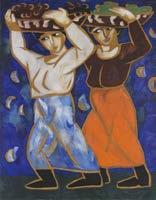
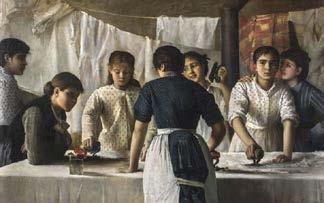
PICASSO,
(4 October 2023 to 14 January 2024)
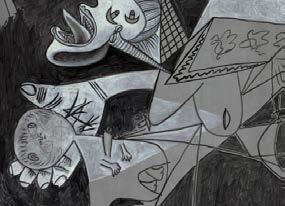

Curated by Paloma Alarcó alongside Clara Marcellán as technical curator, the exhibition aimed to study the boldness and originality with which the artist approached both the classical world and themes of the JudeoChristian tradition, revealing his ability to integrate elements and issues from earlier art and to reflect on the ultimate essence of painting.
The Museum of Art Pudong hosted The Greats of Six Centuries: Masterpieces from the Museo Nacional Thyssen-Bornemisza, an exhibition that traces Western art from the Renaissance to the 20th century through 70 works by artists such as Rubens, Canaletto, Manet, Pissarro, Van Gogh, Chagall and O’Keeffe. This marked the first time that such an important and representative group of works from the Thyssen collection left Spain, and it did so to commemorate the 50th anniversary of the establishment of diplomatic relations with the People’s Republic of China, an event promoted by the Ministry of Foreign Affairs and the Spanish Embassy in China, with the support of the Cervantes Institute. This event was an opportunity for the Museum’s collections to become known in China.
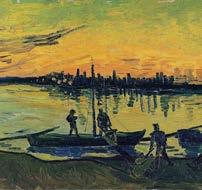


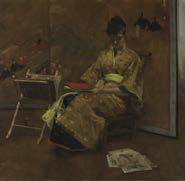


Exhibition at the Museum of Art Pudong, China 22 June to 15 November
355,102 total visitors

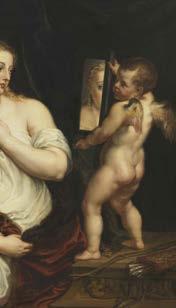
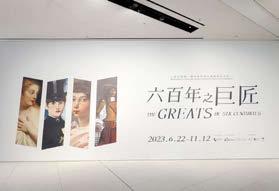
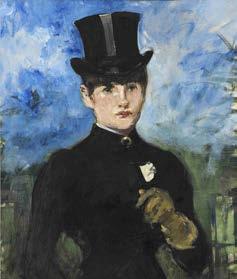

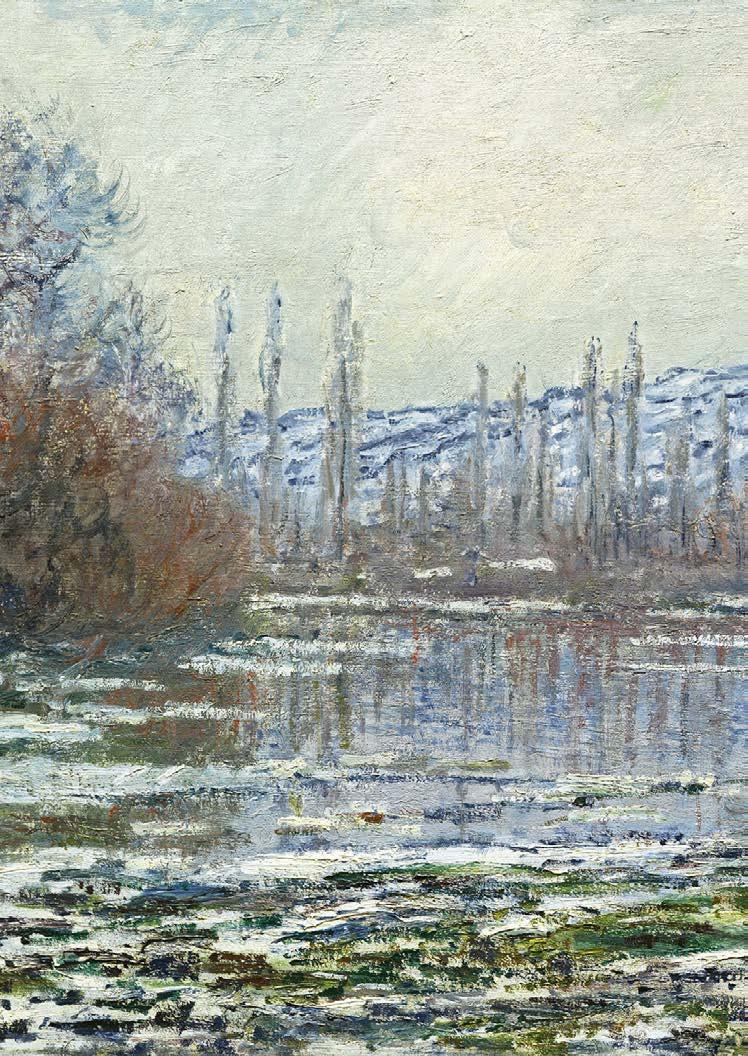
We understand sustainability in its three dimensions: Environmental Economic Education
Our commitment to s
Our commitment to Sustainability
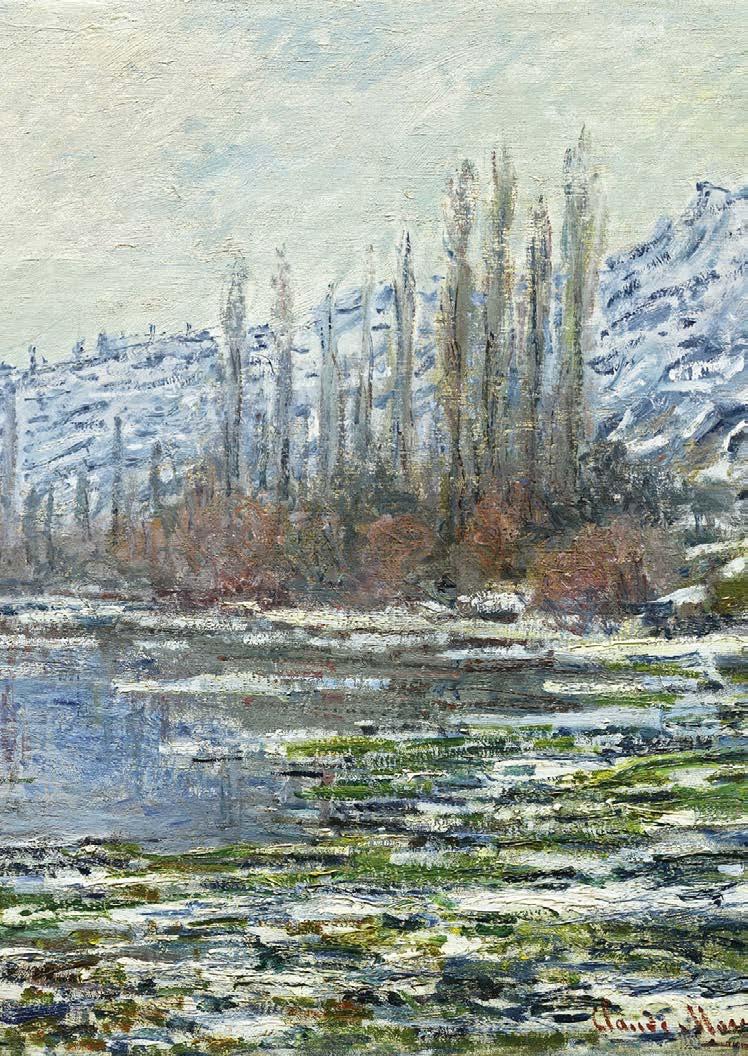
at the Museo Nacional Thyssen-Bornemisza is considered inherent to its mission of being an influential cultural asset with a vocation for public service, as well as to the development of its activities.
Along this line, the Museum has been working for years on the different areas of sustainability: economic, governance, social (including those related to people) and environmental, making it one of the benchmark museums in terms of sustainability management.

The Museo Nacional Thyssen-Bornemisza has identified material sustainability issues through a materiality study carried out in collaboration with an external
The materiality matrix lists ESG issues according to their level of relevance for the Museo Nacional Thyssen-Bornemisza and its stakeholders.
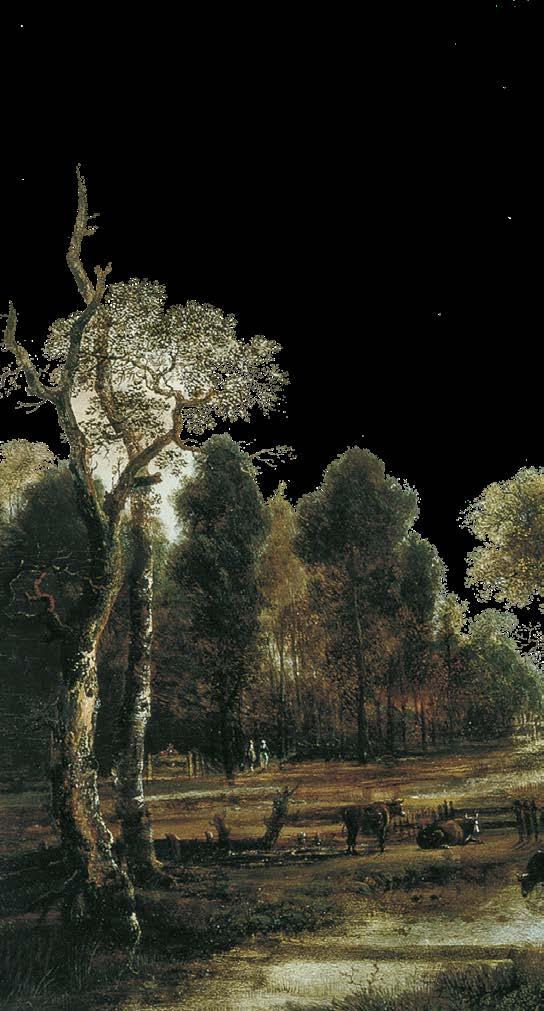
consultant. As a result of this process, 27 issues were identified, classified as critical, priority and relevant.
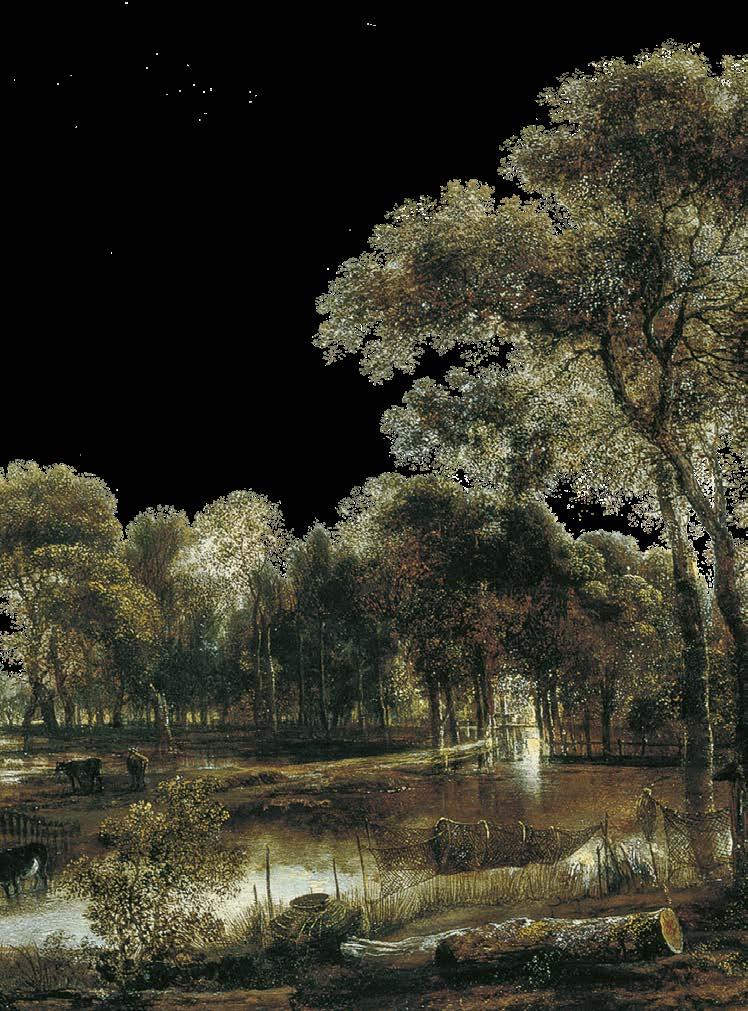
Employee
Equal
Promotion of education and culture
Employment
Material issues
Material issues
Sustainable economic management
Search for alternative financing
Heritage conservation and preservation
Artistic offer
Economic

Governance
People
Society
Environmental
Supplier management
Visitor experience
Visitor security
Data privacy and information security
Digital transformation
Content and experience innovation
Ethical management
Good governance and transparency
Equal opportunities
Employment
Employee health and safety
Training of museum professionals
Work-life balance
Accessibility
Equal access to culture
Adaptation of prices to certain groups
Promotion of education and culture
Links with the community
Marketing communication strategy
Sustainable use of resources (energy/water)
Energy transition and climate change
Circular economy and waste management
Internal and external environmental awareness
Strategic Plan 2019–2023 main points
- Revenue enhancement
- Efficiency and cost reduction
- Revenue enhancement
- Efficiency and cost reduction
- National and public museum
- Preservation of the permanent collection, temporary exhibitions and communication
- National and public museum
- Conservation of the permanent collection, temporary exhibitions and communication
- Efficiency and cost reduction
- National and public museum
- Leading innovation and technology
- National and public museum
- Leading innovation and technology
- Leading innovation and technology
- Leading innovation and technology
- Leading innovation and technology
- National and public museum
- National and public museum
- National and public museum
- Social character
- Social character
- Social character
- Social character
- Social character
- National and public museum
- Social character
- National and public museum
- Social character
- National and public museum
- Social character
- National and public museum
- Conservation of the permanent collection, temporary exhibitions and communication
- National and public museum
- Social character
- National and public museum
- Social character
- National and public museum
- Social character
- National and public museum
- Social character

The Museo Nacional Thyssen-Bornemisza is a key player in disseminating values and raising awareness of the challenges and problems facing society, including the fight against climate change. Through its collection and its programme of exhibitions and activities, it raises awareness and motivates society to be an active part of positive change. This is where culture and sustainability meet.
Through its activities and efforts, the Museo Nacional Thyssen-Bornemisza contributes to the advancement of the United Nations Sustainable Development Goals (SDGs). In this sense, the Museum’s activities have a significant positive impact on the goals related to education, gender equality, inclusion and equality (Goals 4, 5, 8 and 10: “Quality education”, “Gender equality”, “Decent work and economic growth” and “Reduced inequalities”, respectively), as well as Goal 11, “Make cities and human settlements inclusive, safe, resilient and sustainable”, insofar as the Museum’s mission is to protect and safeguard cultural heritage.


It also contributes to other SDGs, such as “Industry, innovation and infrastructure” (Goal 9), closely aligned to the Museum’s digital transformation strategy; “Peace, justice and strong institutions” (Goal 16), related to its public character of transparency, and accountability, and Goal 13, “Climate action”, because the Museum is a privileged place for disseminating values and raising awareness of challenges and issues facing society, such as climate change and sustainable development. In addition, it is implementing water-saving and energy-saving initiatives, acting on Goal 6, “Clean water and sanitation”, and Goal 7, “Affordable and clean energy”.


Sustainable Development Goals
Goal 4: Guarantee inclusive, equitable quality education and promote lifelong learning opportunities for all

Goal 5: Achieve gender equality and empower all women and girls
Goal 6: Guarantee the availability of water, its sustainable management and sanitation for all
Goal 7: Guarantee access to affordable, safe, sustainable and modern forms of energy for all
Goal 8: Promote inclusive and sustainable economic growth, employment and decent jobs for all
- EducaThyssen programmes
- Visual Narratives
- Partnerships with organisations for the integration and employment of people at risk of social exclusion
- Digital experiences
- Free access to certain groups of people
- Internship programme
- Renewal of the UNE 170001 and UNE 170002 Accessibility certificates
- Annual Museum training plan
- Women Masters exhibition
- Series of performances by women artists: Vision and Presence
- Registration of Equality Plan II
- Equality measures in the Concilia Thyssen Plan
- PGSA (Sustainable Water Management Plan) water saving measures
- Supply optimisation measures
- Energy saving measures
- Energy efficiency inspection
- Socio-economic impact of the Museum’s presence
- Review of the current funding model for the cultural sector in collaboration with the Gabeiras Foundation
- Award of a grant for the “First professional experience programme in public administrations” for the recruitment of unemployed young people
- #VersionaThyssen
- Products from local suppliers in the Museum shop
- Integration programmes for people with disabilities, programmes for the over-65s
- Concilia Thyssen Plan. Renewal of EFR certification
- Approval of the Strategic Plan 2024–2028
Goal 9: Create resilient infrastructures, promote inclusive and sustainable industrialisation, and foster innovation
Goal 10: Reduce inequality within and among countries

Goal 11: Make cities and human settlements inclusive, safe, resilient and sustainable
- Digital Transformation Plan (TMS Gallery Systems, Virtual Museum Platform, Sharepoint, etc.)
- Cybersecurity
- Apps
- Accessible websites
- EducaThyssen programmes
- Thyssen Solidario Actions
- Participation in the Pride Parade
- Award of a grant for the “First professional experience programme in public administrations” for the recruitment of unemployed young people
- Plan for the safeguarding of artistic heritage (34 restorations of works, 46 radiographic plates, 108 photographic studies and 21 technical and restoration studies projects)
- Universal accessibility
- Expansion of the subtitled sign language
- Free rates
- EducaThyssen programmes
- Friends and Sponsors of the Museum programme
Goal 12: Ensure sustainable consumption and production patterns
Goal 13: Take urgent action to combat climate change and its effects
Goal 16: Promote peaceful and inclusive societies for sustainable development, facilitate access to justice for all and create effective, accountable and inclusive institutions at all levels
Goal 17: Strengthen the means of implementation and revitalise the Global Partnership for Sustainable Development
- Promoting resource efficiency
- Energy efficiency initiatives
- Carbon footprint calculation. Scopes 1, 2 and 3
- Stamp that calculates and registers the carbon footprint in MITECO
- Thyssen ECO project
- Shop products with sustainable packaging and without plastic
- Energy efficiency measures
- Universal Accessibility certificate
- EducaThyssen programmes
- Approval of the Strategic Plan 2024–2028
- New complaints channel
- Activities and Sustainability Report
- Alliances with cultural, educational and governmental institutions to promote the SDGs
In 2022, the Museo Nacional Thyssen-Bornemisza started calculating its carbon footprint according to the international Greenhouse Gas Protocol (GHG) standard in scopes 1, 2 and 3. In 2023, it completed the registration at MITECO.
The Museo Nacional Thyssen-Bornemisza emitted 481.27 tonnes of CO₂ in 2023, compared to 365.82 tonnes of CO₂ in 2022, broken down as follows:

This year the Museum registered its carbon footprint with MITECO, Ministry for Ecological Transition and the Demographic Challenge.
Total emissions by scope Emissions t CO₂ e*
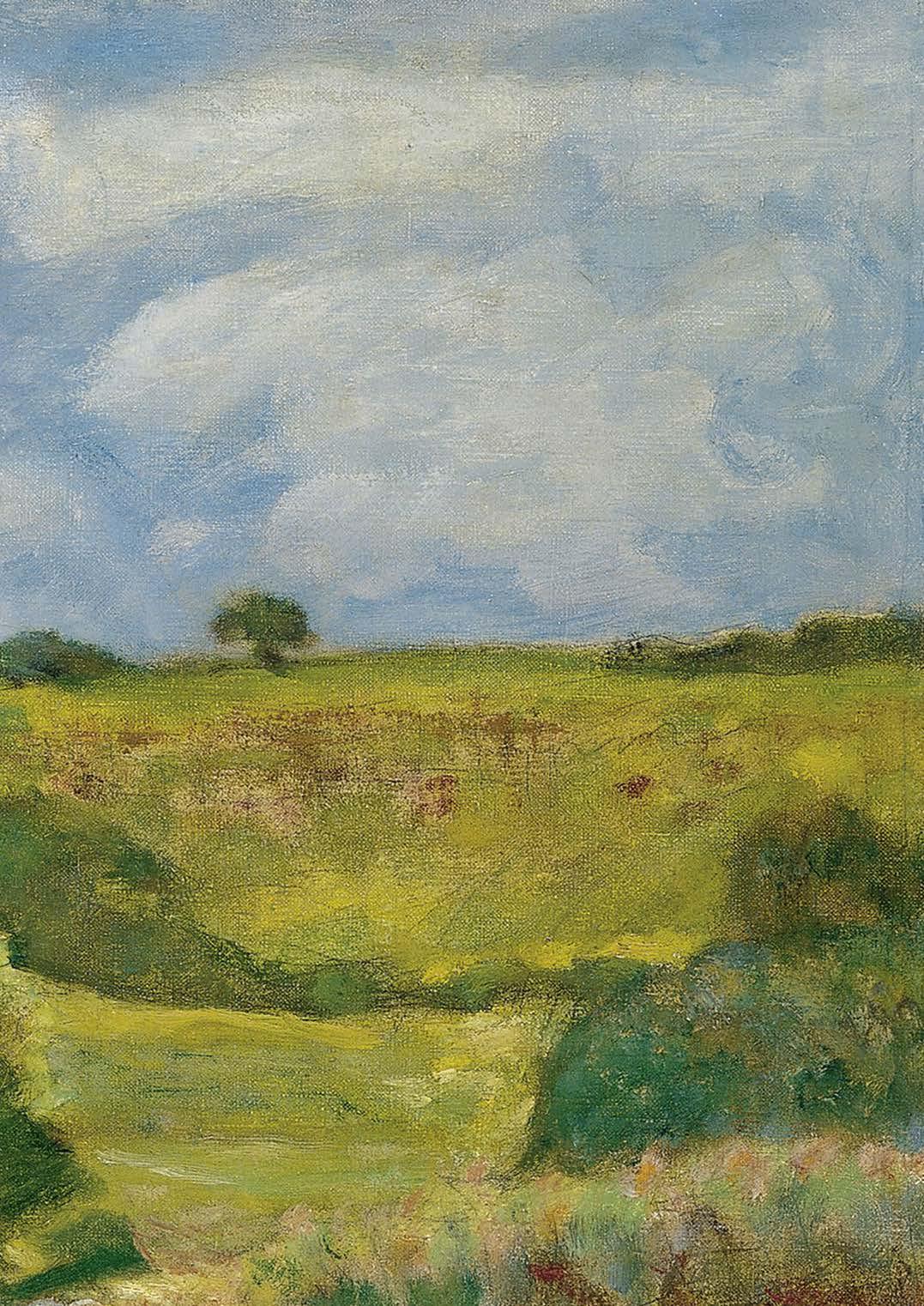
Emissions from electricity consumption (scope 2) are 0 because the Museum contracts 100% renewable energy.
Total emissions by emission source
Emission source
Fuel for heating and vehicles
Electricity
Water consumption
Waste generated
Business travel
In addition, the following indicators have been calculated to enable the comparison and annual evolution of the carbon footprint.
Indicator
The Museo Nacional Thyssen-Bornemisza’s carbon footprint was 32% higher in 2023 than in 2022. In 2023, the calculation of the shipment of works to China was added. This figure includes the transport of the works, the transport of the employees who travel with the works and their stay in hotels.

The Museo Nacional Thyssen-Bornemisza monitors data related to electricity, diesel fuel and water consumption, as detailed below:
In general terms, energy consumption has increased compared to the previous year. With regard to diesel fuel consumption in 2023, there was an increase of 13.67%, mainly due to the fact that the Museum’s installations demanded more heat to compensate for the cold used for dehumidification. The higher water consumption (6.71% compared to 2022) is attributed to higher consumption in the cooling towers.
The resource management and efficiency measures that have been implemented in the Museum are as follows:
LED lighting in lifts, staircases, office corridors, car parks and in most public and office WCs.
Motion detectors in stairways, office corridors and lifts.
Water-saving aerators in the Museum’s WCs.
Lighting with LED screens or downlights..
Partial water metres for daily control of water consumption.
Thermostatic water heaters, in WCs, eliminating the centralised hot water installation.
Public awareness campaigns and environmental training for staff working in the Museum, as well as for new recruits.
Control of the switch-on and switch-off times of lights throughout the Museum.
Replacement of the water exchangers that feed the humidifiers and the postheating batteries of the main air conditioners with more efficient ones, which helps to recover more heat from the water.
In 2023, the Museum generated a total of 7,480 kilograms of waste, which is managed by authorised waste management companies.
Most of the Museum’s waste is of a non-hazardous nature. The following is a breakdown of the waste according to type:
Type of waste
Non-hazardous waste
Glass Paper and cardboard
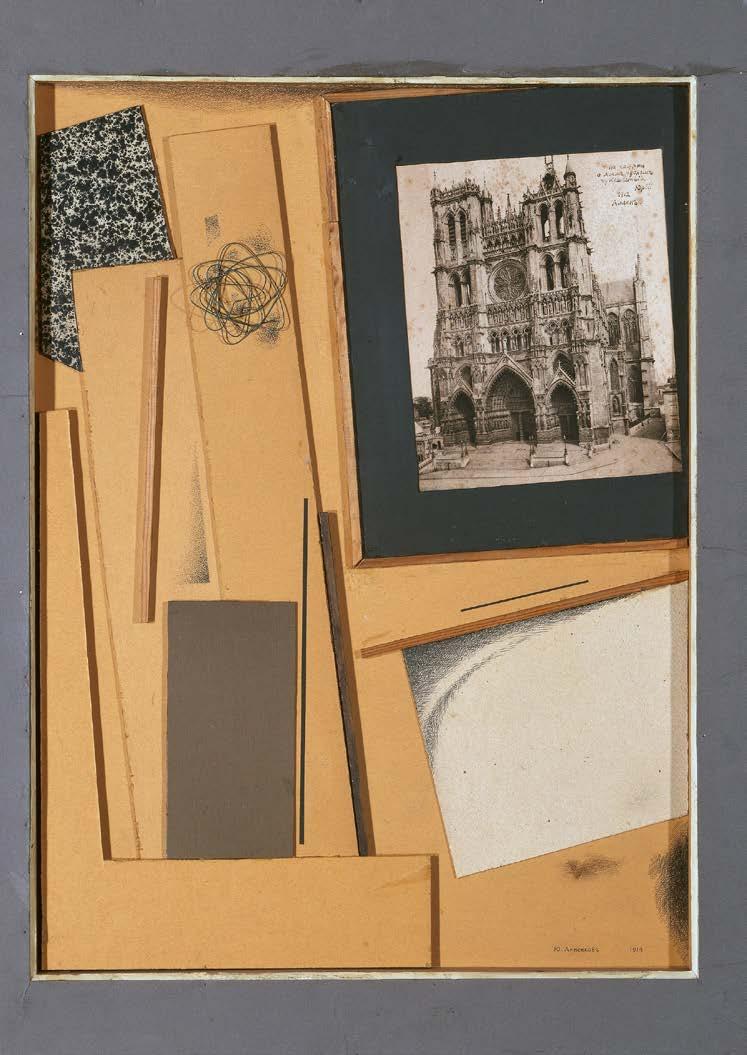
In 2023, participation in Sanitas’ Healthy Cities campaign is worth noting. This initiative promotes physical movement among the workforce while contributing to the planting of trees and reforestation of urban areas.
The Museum also collaborated with the clothing collection campaign led by the NGO Opción 3 Iniciativa Social. This initiative stresses the importance of reducing and reusing textile waste.
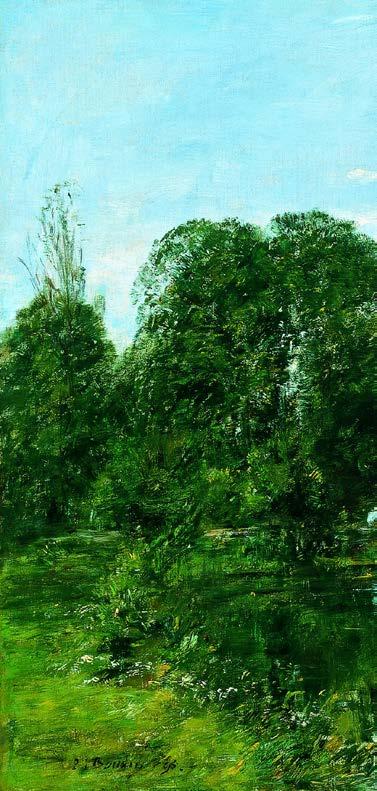
Once again this year, informative and awareness-raising messages continued to be sent to the staff on various subjects such as healthy eating, saving paper, recycling, etc.
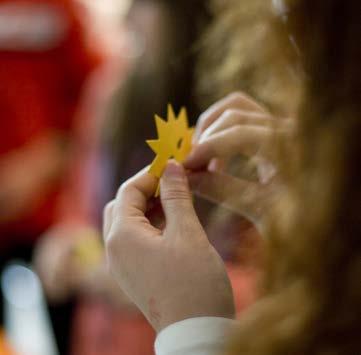
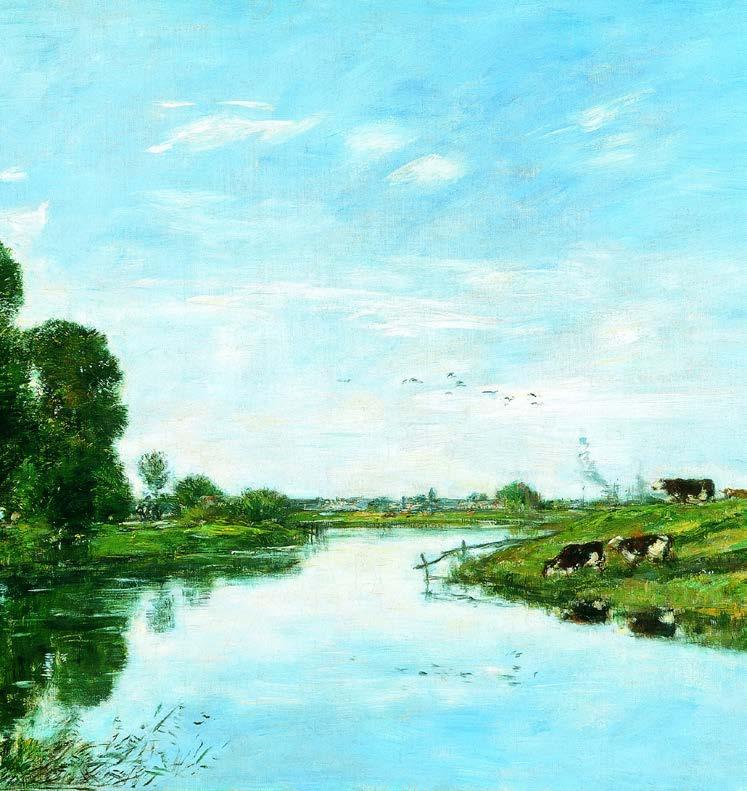
Thyssen ECO includes initiatives aimed at promoting and raising awareness among Museum employees about social responsibility and improving the environment.
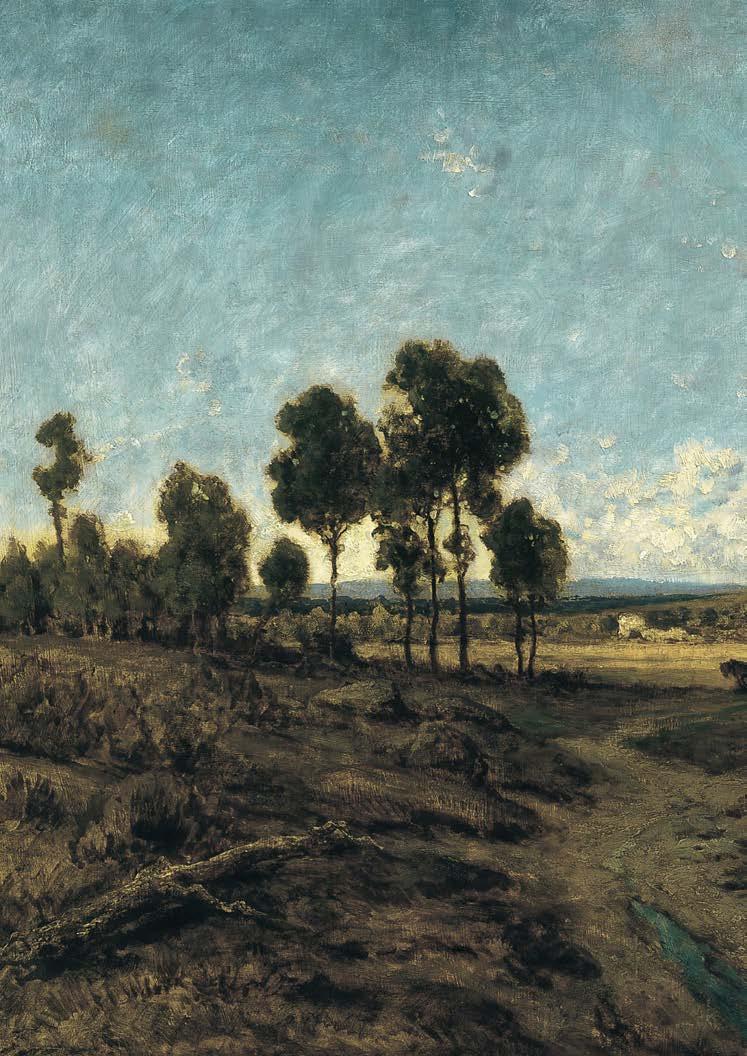
2023 was marked by the normalisation following the 2020 health crisis, with the recovery of foreign tourism, the improvement in general activity and the effort in commercial activity that has allowed us to exceed the projected income.

The budget was exceeded in all lines of income (except Friends), with an overall result of an 18% increase in pre-subsidies income compared to the budget. This was aided by the fact that the Museum once again exceeded one million visitors (1,017,684), similar figures to 2019, as well as the work carried out to raise funds from sponsorships and collaborators (an increase of 35% over budget) and the income obtained from the exhibition in Shanghai.
On the expenditure side, cost containment and a lower-than-expected inflationary situation (especially in energy) have led to significant savings.
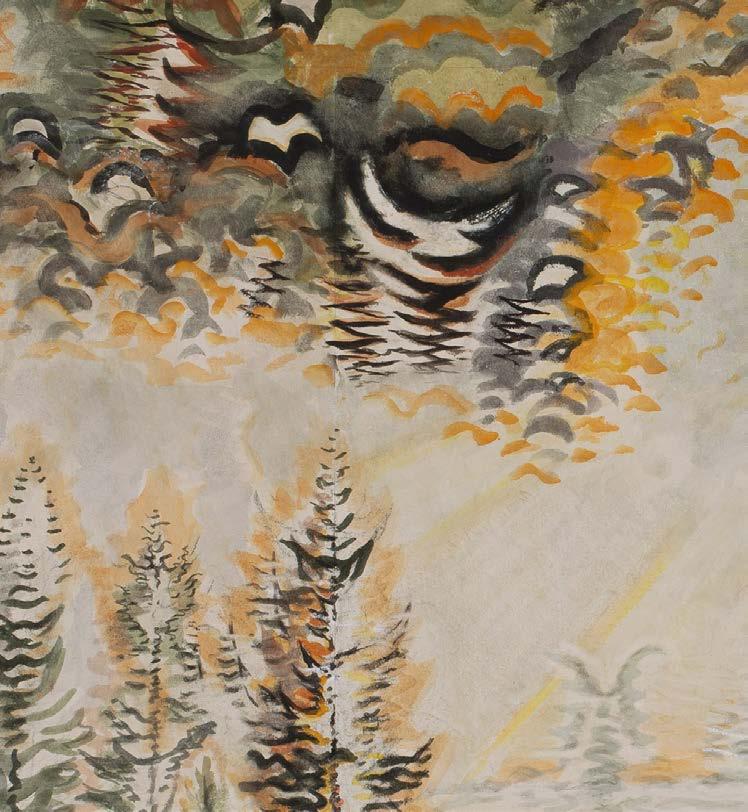
The Museo Nacional Thyssen-Bornemisza, as a centre of attraction for both national and international visitors, is one of the main assets of the city of Madrid due to its ability to generate income and create jobs.
Typology
Economic impact-GDP*
Tax impact**
Impact on employment***
*Contribution of the Museo Nacional Thyssen-Bornemisza to the Gross Domestic Product, GDP
**Contribution to public funds
***Employment necessary for the demand generated by the Museo Nacional Thyssen-Bornemisza
The activity of the Museo Nacional Thyssen-Bornemisza has a positive impact on the economy and employment in the city of Madrid, contributing 0.19% to the GDP of the Community of Madrid in 2023.
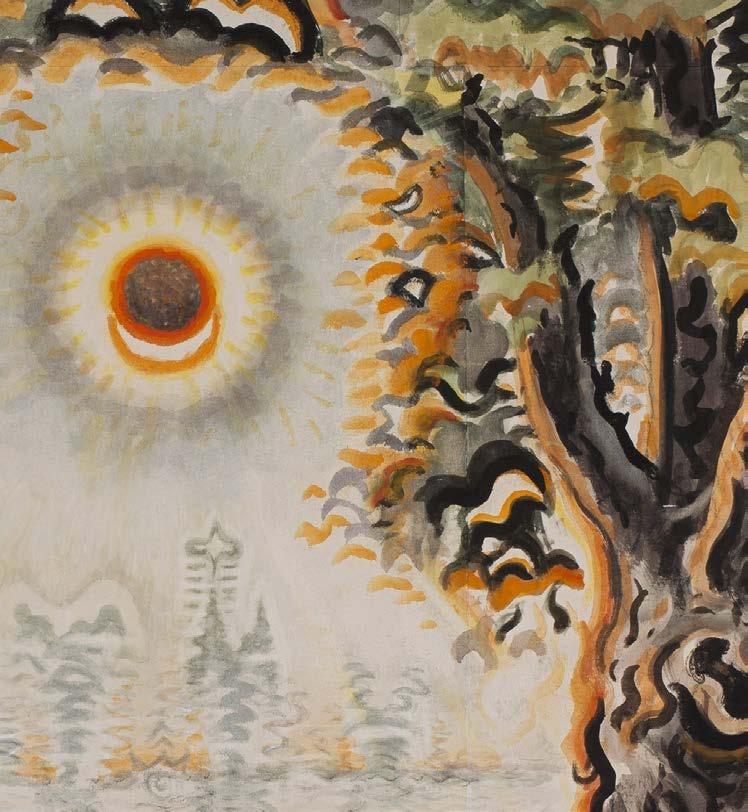
The Leontief inverse matrix was used to calculate this index based on the following sources: distribution of tourist expenditure: INE, EGATUR survey (Jan–Jun 2018); tax revenue in Spain: Eurostat, www.epdata.es; tourist expenditure in Madrid: Vademecum Turístico, Madrid Destino (Dec 2022).
Inside the Museo Nacional Thyssen-Bornemisza you will find the museum shop, where visitors can purchase products related to the Museum and the works it houses: catalogues, books, gifts, posters, jewellery and home decor, among others.
When there are temporary exhibitions, visitors can purchase special items related to them. The online ticket + product option offers the possibility of buying the ticket along with a selected product from the exhibition.
Users can also purchase the selection of items through the online shop.
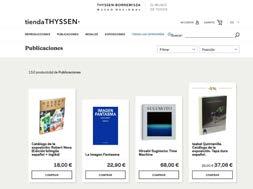

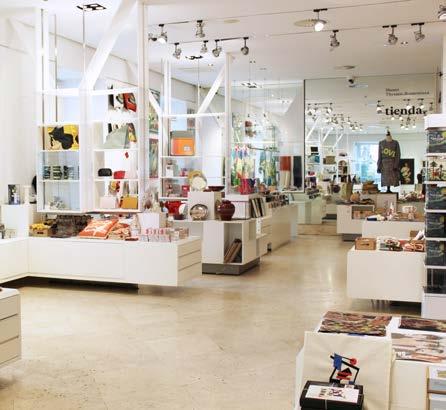
88% Purchases of national items

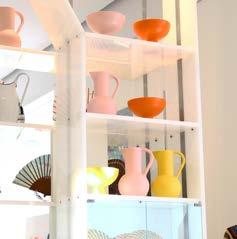
€66.53
Average online ticket purchases
€3,031,000
Total sales
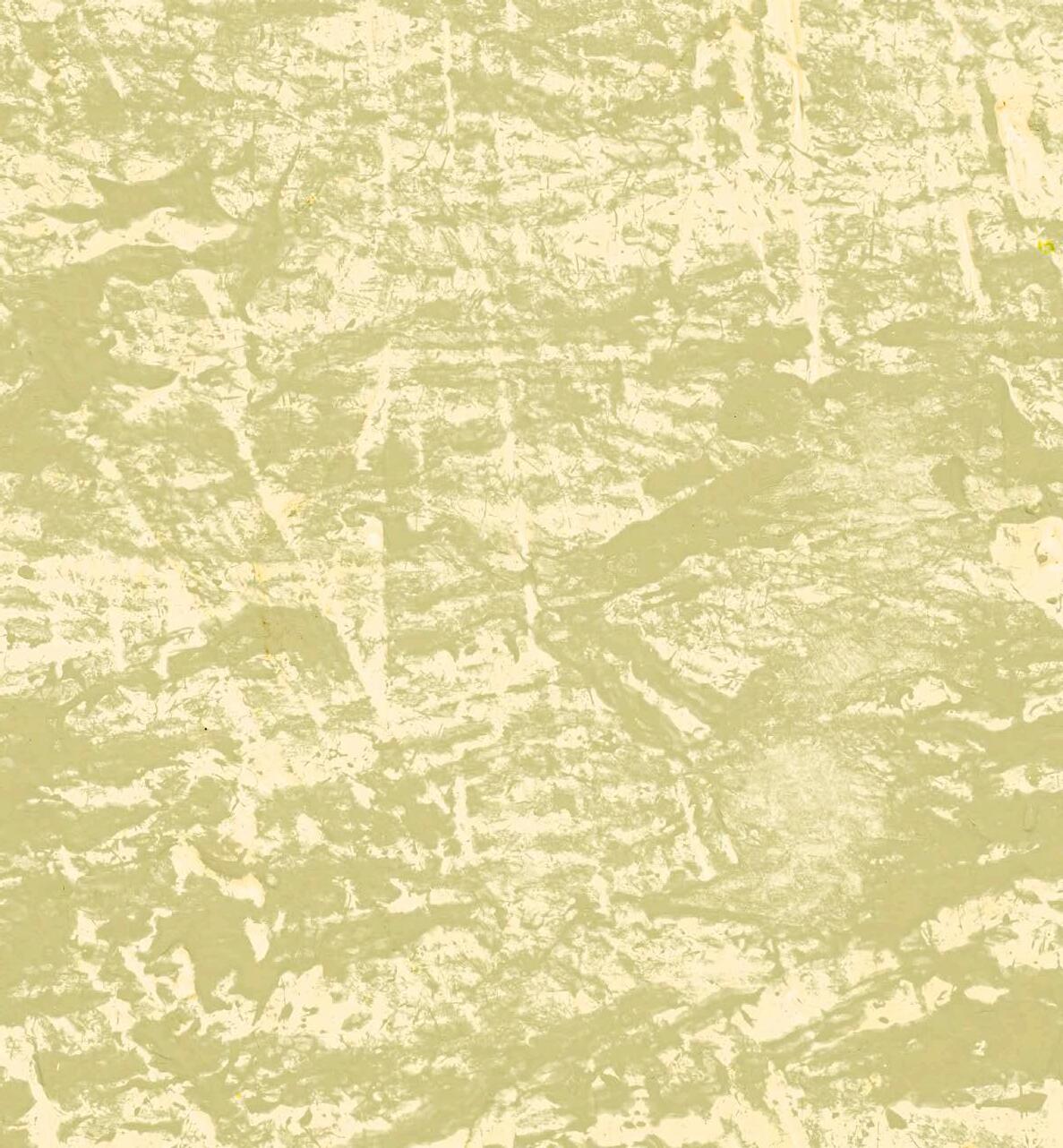
No. visitors 1,014,078 (excluding private visits)
12% Purchases of international items
59
Local artisans and designers
98
Suppliers deliver products without plastics
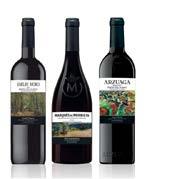
Vino selección. We have carried out the fifth edition of the collaboration between Vinoselección and the Museo Thyssen, in which art and wine go hand in hand so that you can enjoy great Spanish wines from the most prestigious Spanish wineries, personally chosen by their oenologists. Each of the labels reproduces a universal masterpiece belonging to the Museo Nacional Thyssen-Bornemisza Collection.

We continue with the process of renewing the shop’s products and packaging in order to replace the use of plastics with more sustainable materials. The commercial agreements are maintained
ArtStory. This is a medium to long-term project to manage the licensing of royaltyfree works to various fashion, accessory and consumer brands.
Santa & Cole. As part of the Neoseries project, the Museum is working on the commercialisation of high-quality graphic reproductions of works of art, in the form of facsimiles.
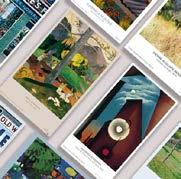
Samsung Electronics. Progress has been made in the agreement with the company, incorporating new images in its system that can be viewed by users via TV Frame Art.

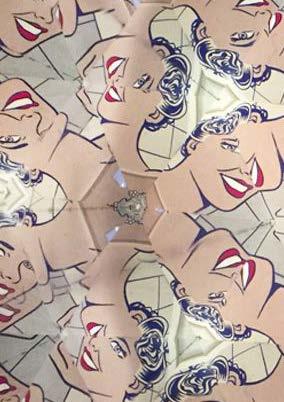
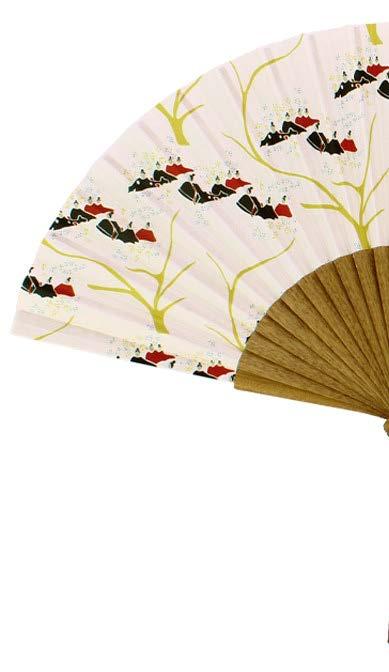
Alliances have been established with new partners such as Bridgeman and Blond Sheep in order to seek new licensing opportunities.
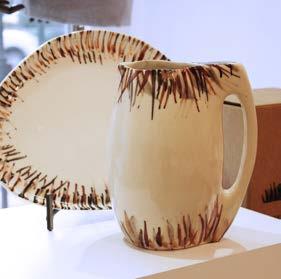
Other collaborations with: Ailanto | Mantas Ezcaray | Muroexe | Magro Cardona | María Ulecia | Ascaso, and collaboration has continued with IED (Instituto Europeo di Design, Madrid campus), with the aim of developing an educational project based on art in relation to textile design.

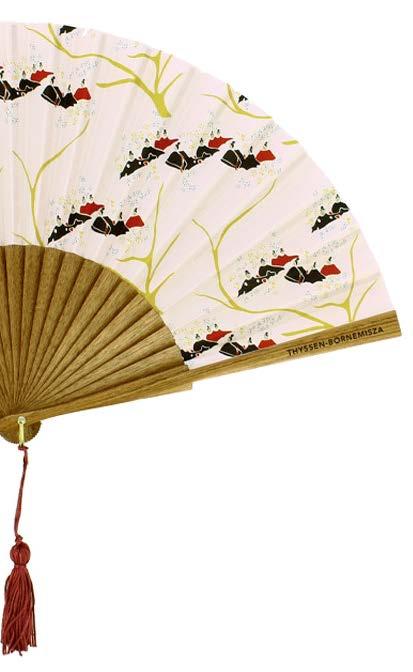
Jewellery and accessories
Own publications
Textile / homeware
Publishing collection
Stationery
Ceramics / decoration
Graphic work
Posters
Postcards
Children and crafts
Educational programme
Food
Perfumery
Technology
Audiovisuals
Catalogue



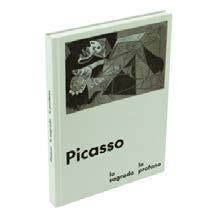
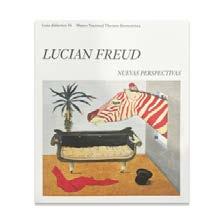




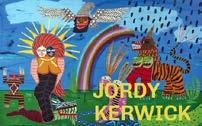

Its location allows us to offer private receptions, both during the day, when the Museum is open, and at night, behind closed doors. The views overlook the Paseo del Prado, in the heart of Madrid’s historic city centre.
Facing the garden and located near the entrance to the Museum, they are open all day for breakfast, snacks or lunch. It is also perfect for after-work drinks and cocktails in the open air.
Open during museum hours, it is located on the ground floor and is a pleasant space where visitors can relax, have lunch or a drink.
A space for holding presentations, conferences, award ceremonies, symposiums and concerts.
• Central Hall. Ideal location for large receptions and gala dinners.
• Temporary Exhibitions Lobby. Ideal for a cocktail after completing a visit to the temporary exhibition.
• The Viewpoint. Private receptions in a space open to Madrid’s skyline.
• The Garden. Private open-air receptions.
• The Terraces. After-work drinks and cocktails in the open air.
• Italian Terrace. Ideal for an outdoor cocktail after completing a visit.


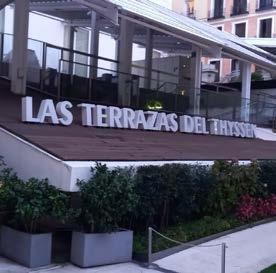
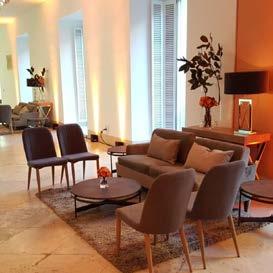
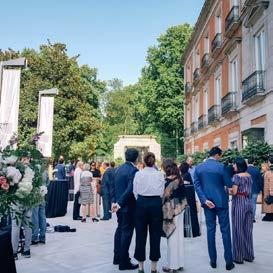

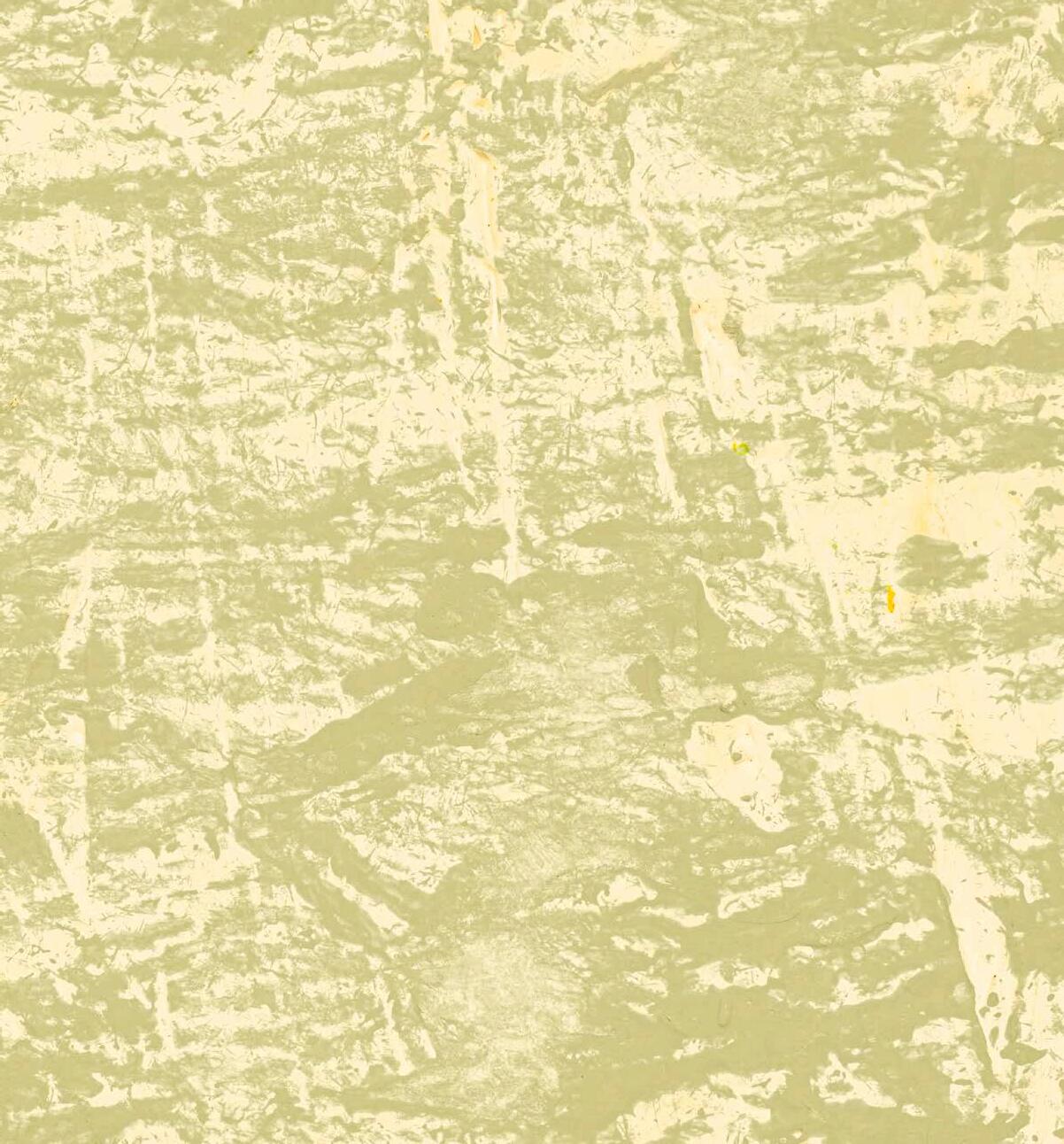

A total of 292 corporate events were held in 2023. This year’s events and space rental programme positioned itself at the top of the list, with a notable difference regarding the highest-grossing events held during the past 15 years, having exceeded one million euros, taking into account the number of spaces being offered and that availability is limited. This has marked a milestone in the history of the programme.
292 corporate events
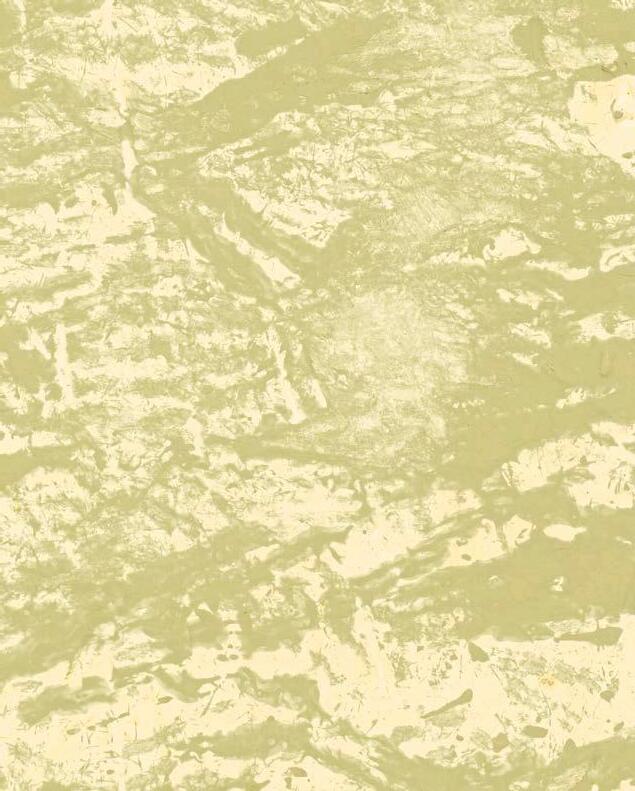
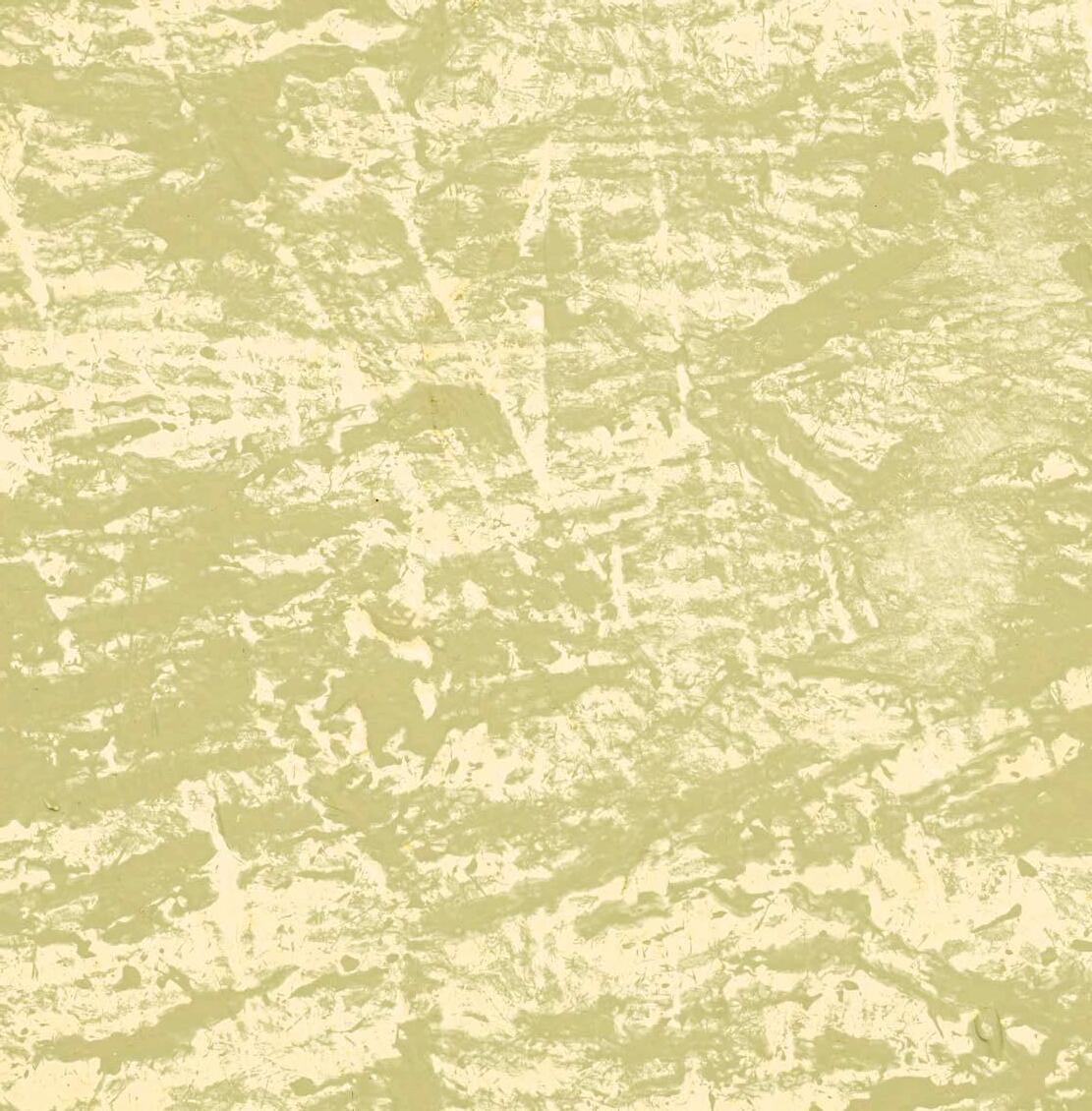
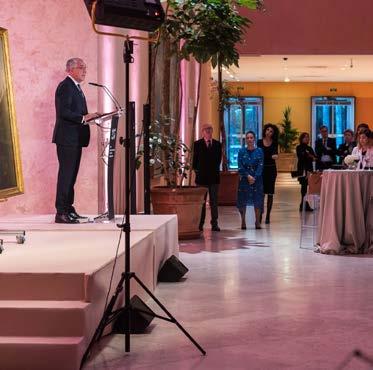
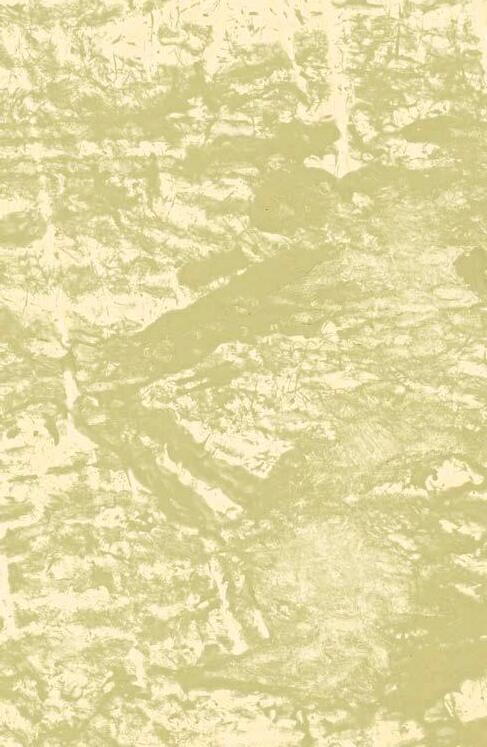
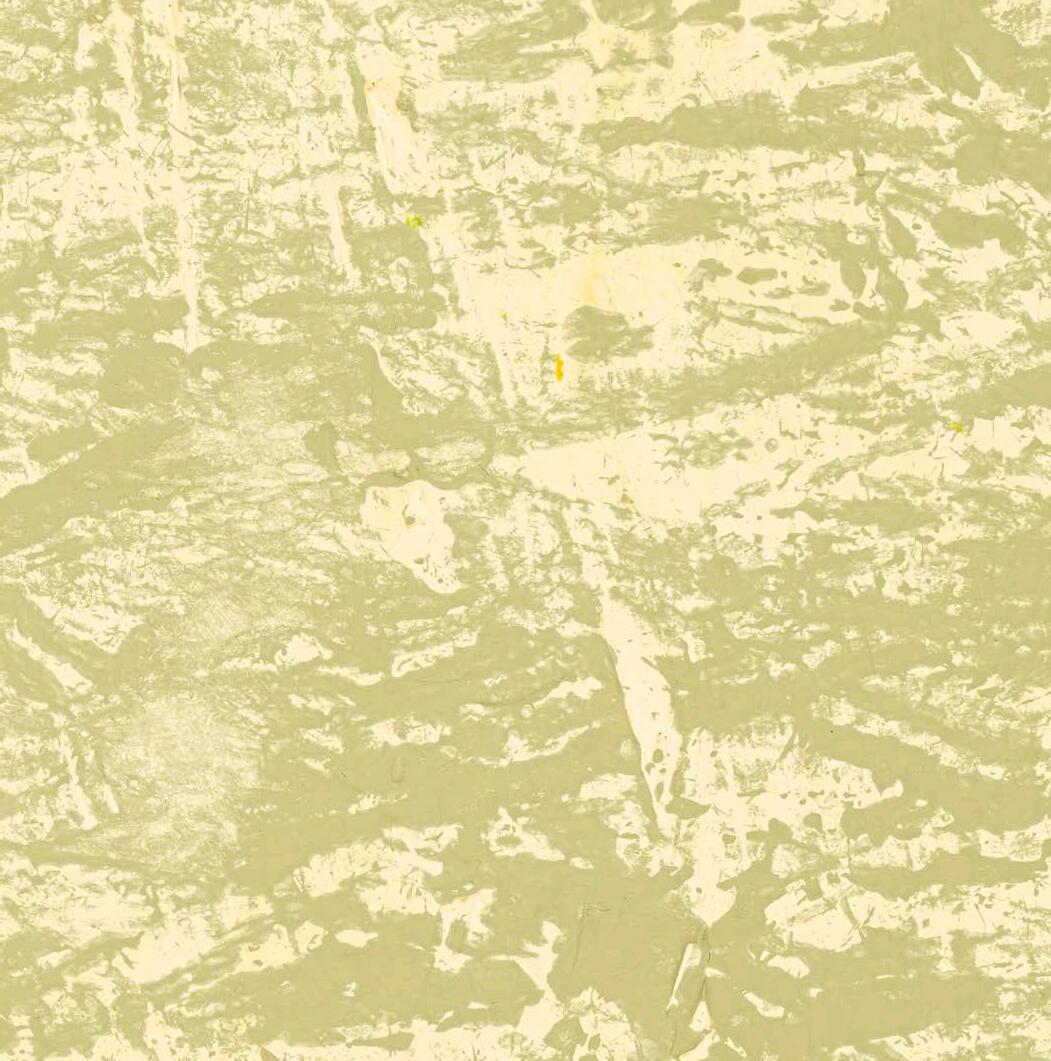
In 2023, the Museum played its part in the consolidation of Madrid as a preferred tourist destination, both for local and international tourists, creating new innovative products and experiences that managed to capture the attention of high-end tourists through a catalogue of high-quality experiences. This reaffirms our commitment to continue offering unique and enriching proposals for all visitors.
Art & Wine
Madrid tour with audio guide and au tasting. This is the basic option include in the agreement signed with the Mercado de San Miguel. It consists of the thematic Wine Culture tour, with an audio guide, followed by an audio-led wine tasting session in the market that visitors can experience by scanning a QR code. This audio tasting explains to visitors the different wines that can be tasted (offered at the stall El 19 de San Miguel) and gives them advice on pairing them with products available in the market.
Dinner
A new addition to the Museum’s gastronomic offering that already includes Art & Lunch and Art & Brunch.
Available on special late-opening days during the summer, it consists of a museum ticket plus dinner at the Thyssen Terraces. The number of people who assist is not very high as it is only offered during the months the Terraces are open, which is a relatively short period. The decision to create this offer is based on being part of the very fashionable Madrid terrace circuit.
Experiences programme for high-end tourists
We have continued to focus on high-end tourists by creating a new alliance with another player on the Madrid tourism scene: Art & Flamenco. The experience is offered in collaboration with the Café Cantante Flamenco de Leones, part of the Ramses Group.
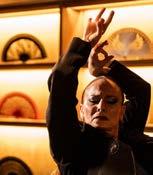
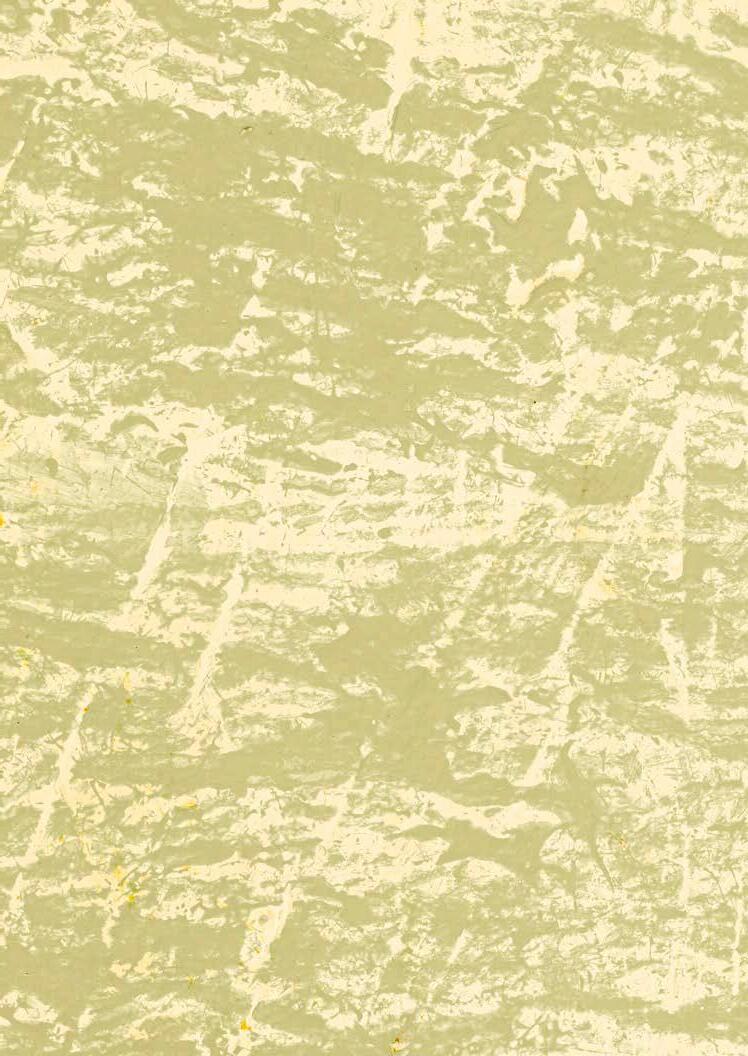
programme focus creating another major
During the Christmas period, we offered visits to the Museum, catering to last-minute national and international tourists. Specifically those arriving in Madrid without having previously booked any family activities, so that they could enjoy an attractive cultural experience, seeing as our educational activities were running out of capacity. Visits were available n both Spanish and English. i
In addition, the Museum continued to participate in the Paseo del Arte joint ticket, which allows visitors to visit the three national museums of the Prado, Thyssen and Reina Sofía with a single ticket. A total of 39,639 of this type of ticket were sold, 29% more than in 2022.


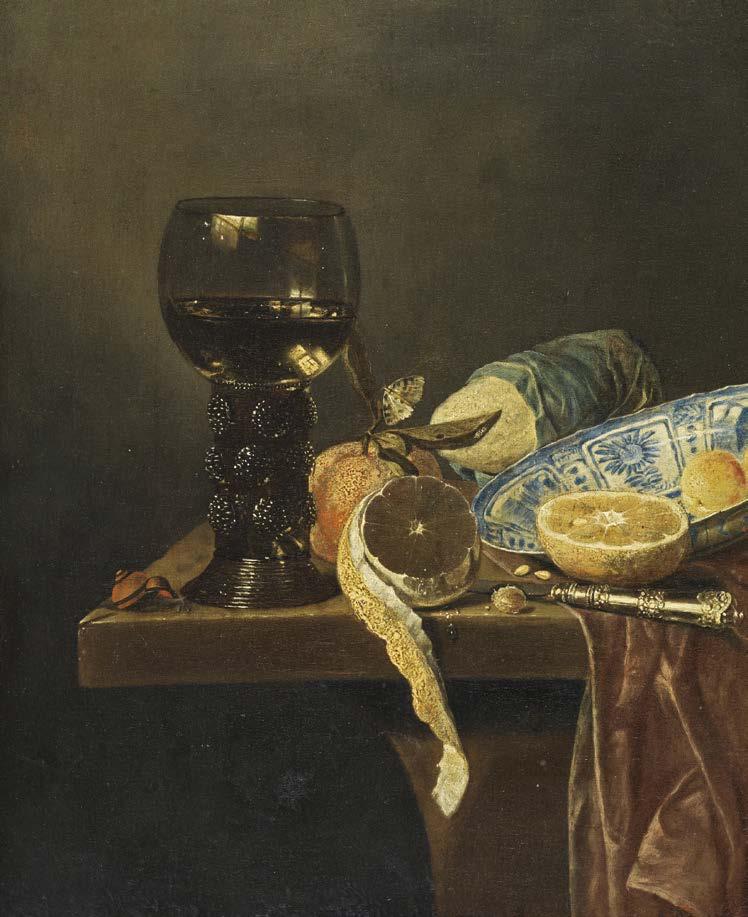

With the aim of bringing the Museum’s permanent collection closer to young people and promoting it, an agreement was signed with UDIT whereby 66 students from the third year of the Fashion Design degree reinterpreted the Impressionism and Renaissance art movements through their designs, taking inspiration from works that form part of the Museum’s permanent collection to create a capsule collection.
Each student presented three proposals from which 90 designs were selected for each of the fashion shows planned for the Mercedes Benz Fashion Week (MBFW): in September 2023 (at Matadero) and February 2024 (at Galería de Cristal with the support of the City Council).

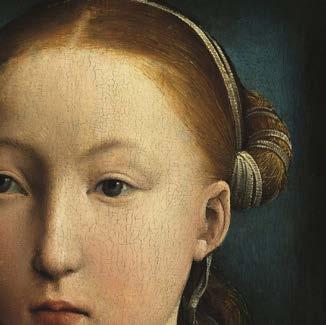

On the occasion of the 20th anniversary of Shiseido’s For Her perfume, an itinerary entitled “The Image of Women: Muses and Creators” was created. This selection of works placed women at the centre, focusing on the female image in Western painting from the Renaissance to the 20th century.
The action was based on the idea that the perfume For Her by Narciso Rodríguez could have been the ideal perfume for each of the women who appear in these works, highlighting the timelessness of beauty. The activity included guided tours during public opening hours, led by one of our specialised guides in Spanish. These tours were open to the general public free of charge.
The collaboration with the brand generated €30,000 in revenue, as well as winning second prize at the Beauty Marketing Awards in the Best Brand Experience and Activation category.
On the occasion of the 75th anniversary of the Serpenti Collection, Bvlgari presented an exhibition tracing its history. The exhibition began in the Rodin Room and culminated in a proposal by artist Refik Anadol, who reinterpreted the image of the snake by means of an immersive digital installation in the Museum’s Garden.
The Museum organised a tour highlighting 16 works related to themes and references linked to the uniqueness of the brand, for which the team of guides was specifically trained. The exhibition, open from 17 February to 16 April, was very well received, attracting 101,214 visitors in total to both spaces.
The Bvlgari project generated a total income of €153,050.

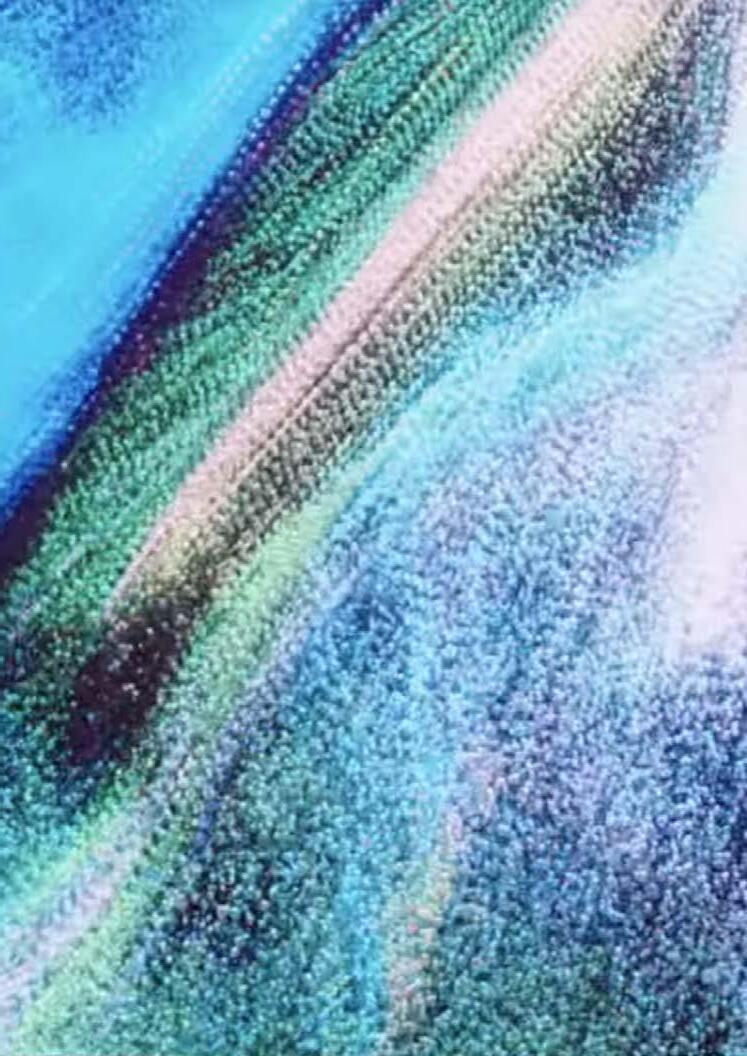

In 2023, various projects developed by the Education Department were recognised by national and international organisations.
Queen Letizia National Disability Award for Inclusive Culture for the project Lines of Education and Social Action

Bronze LAUS for the online documentary Back to Nature

Silver LAUS for the online documentary Love Letters to Cities


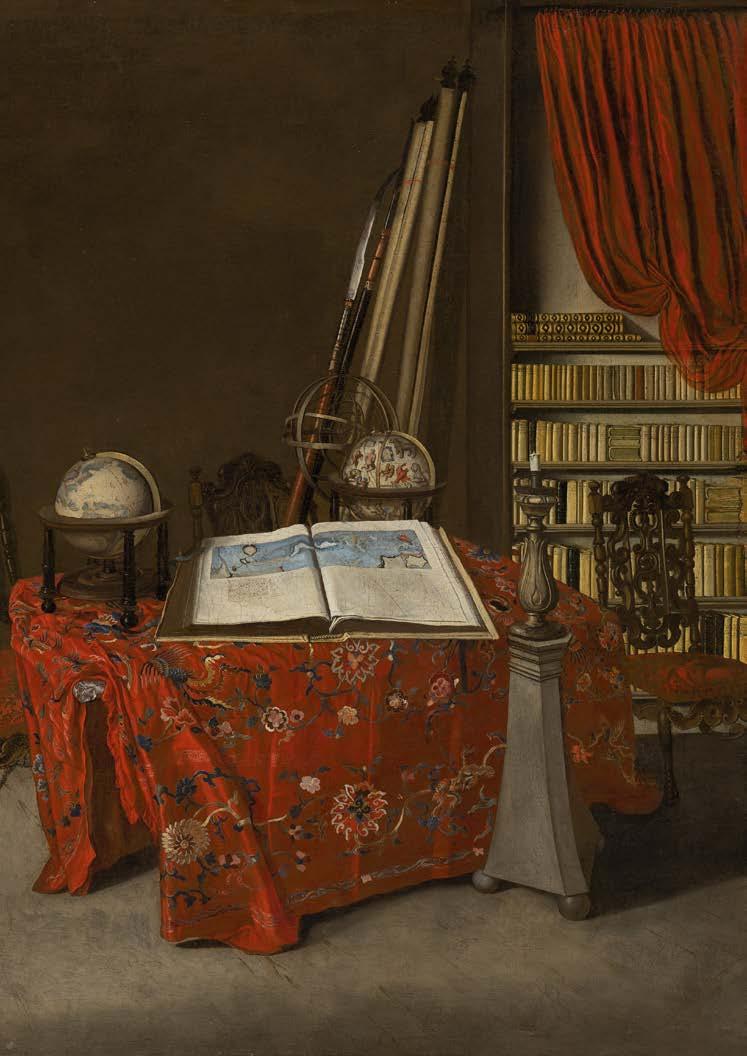
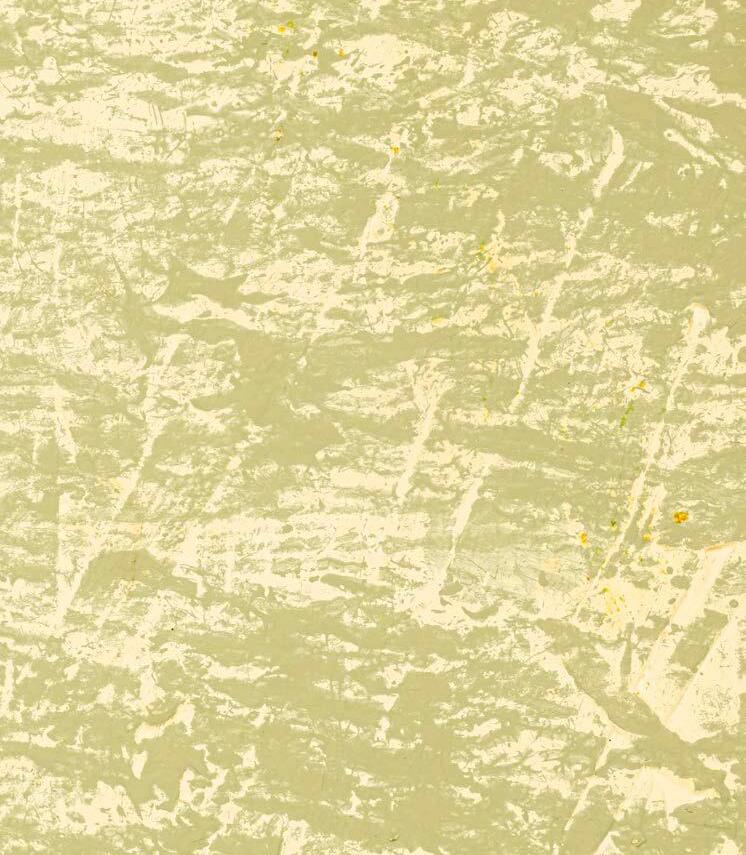
Research the works in the collection for the development of educational actions (activities, programmes, laboratories and publications)
Since its beginnings, the Museo Nacional Thyssen-Bornemisza has always given great importance to the educational potential of its collections. Furthermore, the Museum understands education as a main axis for articulating its relationship with the society it forms a part of.
Within this framework, the Education Department takes on the responsibility of making the Museum a meeting place for people to come together and engage with art through the activation of its own educational processes, encouraging critical reflection and creativity. To this end, all those who coexist with the Museum are involved through the activation of various programmes, the development of content and mediation tools, as well as medium and long-term projects, seeking to achieve the following objectives:

Create and promote a model of nonformal education with its own identity, inclusive and respectful of the problems faced by today’s society
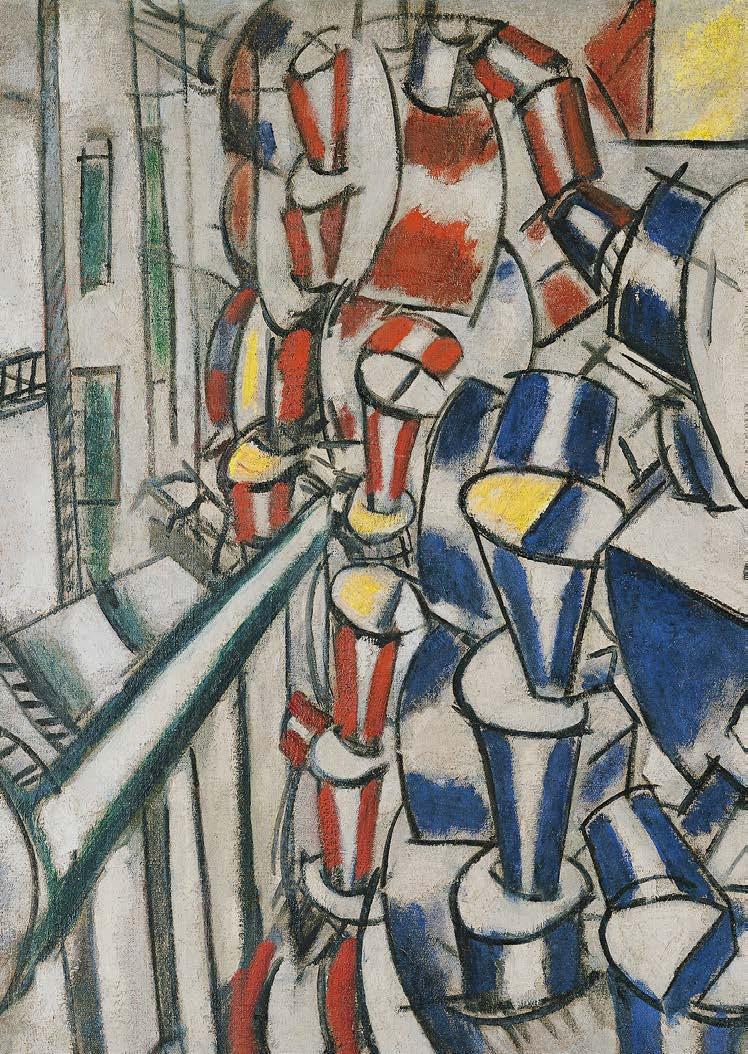
Generate educational spaces that enhance citizen participation and collaboration from an educational perspective
Develop long-term proposals that allow us to have an impact on the processes, the public’s knowledge and the analysis of their results

Work as part of a stable network, with agents, collectives and organisations interested in the pairing of art and education
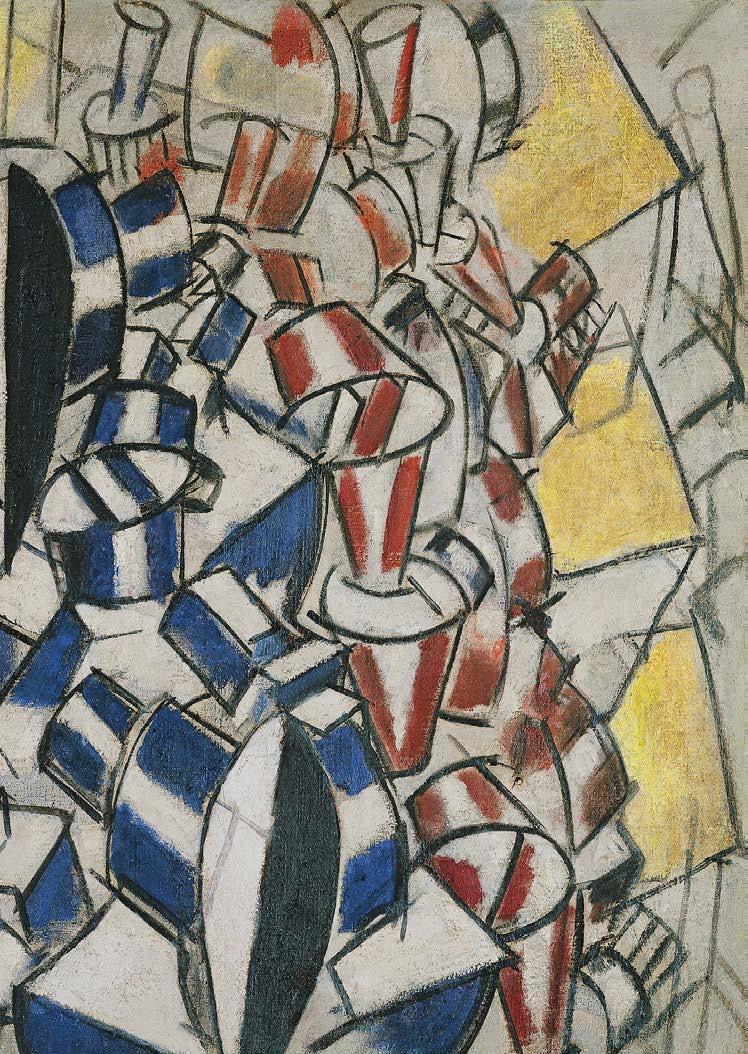
Encourage research by museum education professionals into new lines of action and reflection
Consciously use technology as a tool that serves research, content and people
Hybridise different contemporary art practices with the Museum’s pictorial collections
Incorporate contemporary narratives into the reading of works of art from a critical perspective
Facilitate access to the collections and the knowledge generated around them for society as a whole, taking into account its diversity
Based on the belief that museums are some of the richest educational contexts that exist, numerous cross-cutting proposals have been implemented to encourage dialogue between teachers, students and educators at all non-university educational levels.
During 2023, a new programme for educational centres was established, adapted to the changes experienced by the formal education context in recent years.
In 2023, the number of participants in actions for teachers and students has doubled, and the educational offer has gone up by 50%.
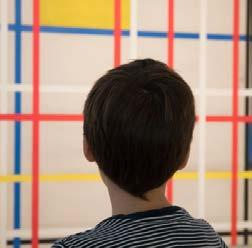
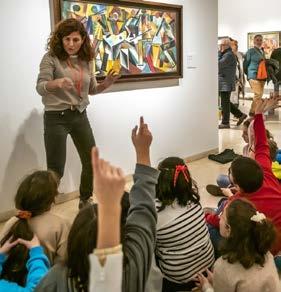
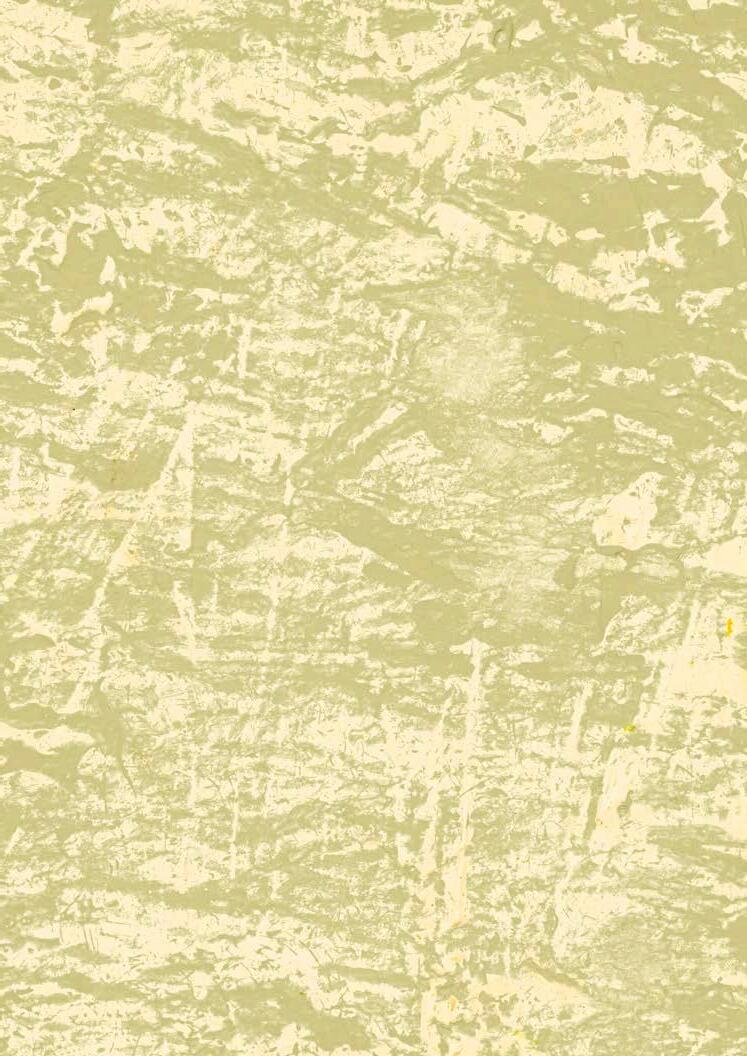
Itinerant art projects for schoolchildren and teachers
The Museum launches various mobile educational units for schools, to bring art in general, and the Museum’s works in particular, into the classroom.
Big Valise, La Kepler and Celebratorio.
Training and dissemination activities for teachers based on the temporary exhibitions
Meetings with teachers to present and provide teaching guidance for the temporary exhibitions.
Picasso: The Sacred and the Profane for teachers, Women Masters for teachers, Of Whales for teachers, Lucian Freud for teachers, Liquid Intelligence for teachers, etc.

28 proposals
10,465 teachers and students
17 education centres
600 participants 18 education centres
5 proposals 131 teachers
Musaraña Laboratory
Actions related to the project 5 proposals In 2023,
175 teachers
the book Musaraña: Lecturas poético-prácticas de y para una comunidad was published. It covers the first ten years of the Musaraña project.
720 participants 14 activities
13,157 participants
Workshop visits and dynamic visits for pre-school, primary and secondary education teachers and students
Four Elements, Tactile Paintings, An Unexpected Game, Imagining the City, I Don’t Know How to Draw, Who Am I, Who Are You, etc.
MaThyssen open call
The Museum, in collaboration with the Spanish Royal Mathematical Society (RSME), organised MaThyssen 23/24, an initiative directed at educational centres with the aim of selecting artistic projects that explore the link between art and mathematics.
Musaraña Laboratory and actions related to the project
Musaraña is a community of education professionals interested in researching and looking for new ways of working in the fields of art and education.
Classes Begin: Fine Rain, Classes End: Teachers Talk, Leaving the Classroom: Unexpected Landscapes, etc.
Other training and/or dissemination actions for teachers
Meetings with teachers to disseminate the Museum’s educational offer, along with participation in training actions in collaboration with teacher training and educational innovation centres.
The Museum offers a permanent programme aimed at children, families, young people and adults, in the context of non-formal and informal education.
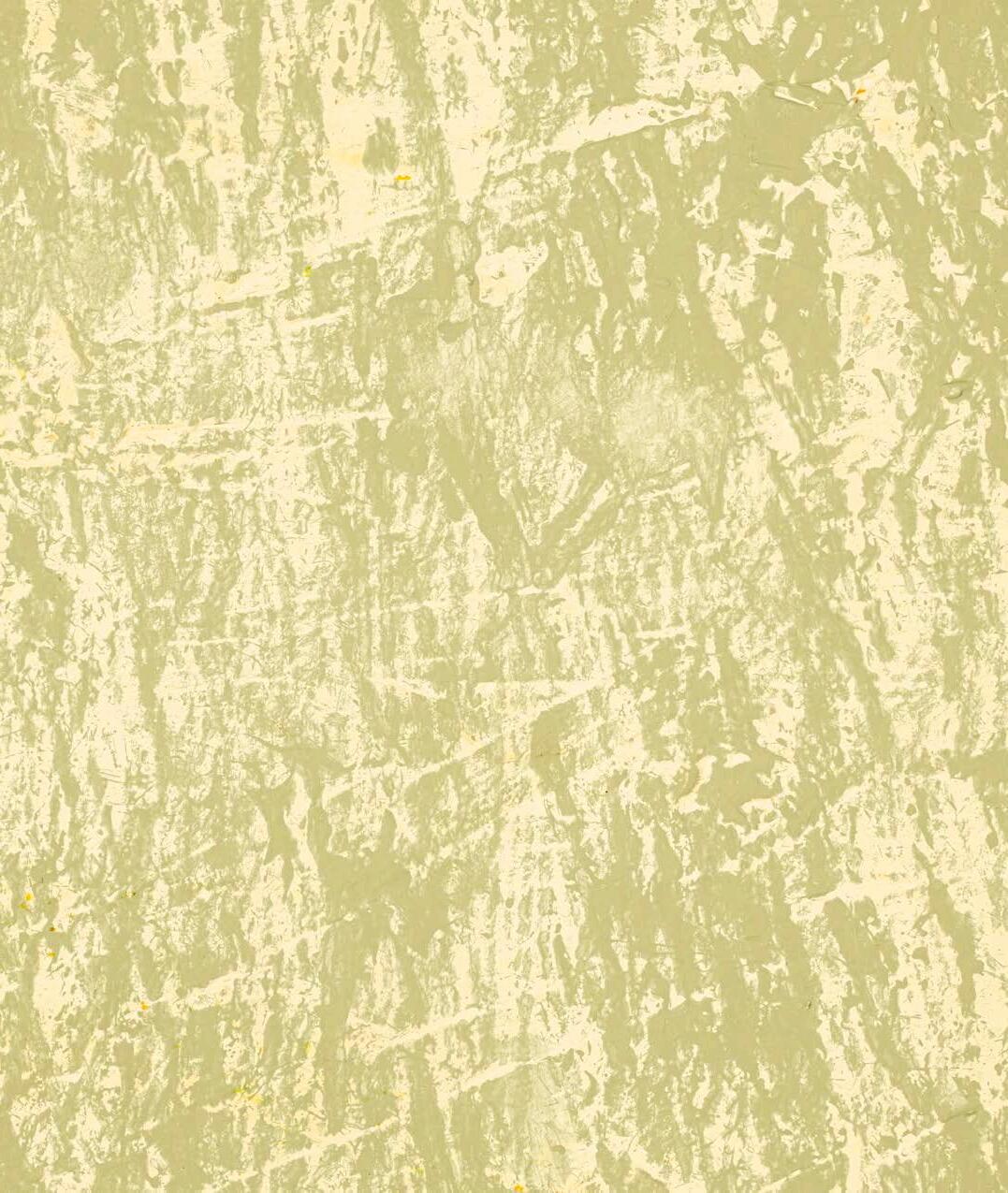
Activities for the general public
Non-formal educational programme for young people and adults, where experiential art and other art forms play a leading role.
The Walls Speak, 19th and 20th Century Art, Picasso/Chanel: A Musical Journey, Women Masters, online courses (Experience Bauhaus, etc.), TBA21 Talks (Of Whales, etc.).
19 proposals
2,333 children and adults
141 actions carried out
16 proposals 918 participants 33 actions carried out
4 activities 3 stories 32 resources 22 adults

3,271 participants

Activities for children
These explore different ways of learning about art, through fostering creativity and a critical spirit.
Co-Loca, Blue Spell, In Everyone’s Land, Walk, Walk, Landscape, The Title Is Mine, White on White, Alice in Wonderland, etc.
Visual Narratives laboratories
The aim is to build new relationships between people from different backgrounds and the works in the Museum.
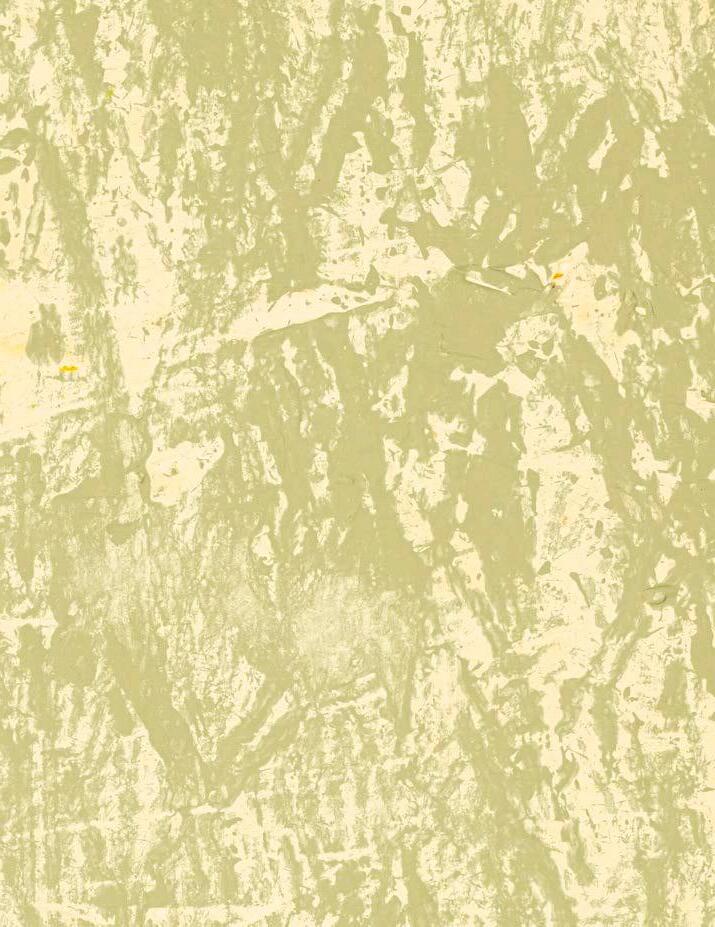
We work together with professionals and organisations from the social sphere and the community to promote the Museum and its contents from a perspective of integration and inclusivity.
One of the standout actions of 2023 was the development of the Video Sensations project. It focuses on generating sensory stimuli by means of certain concepts and the general aesthetics of some of the Museum’s works.
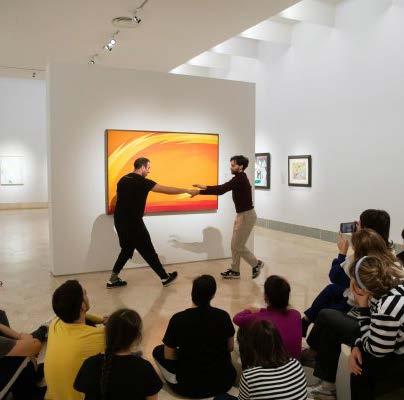
14 proposals 2,973 participants
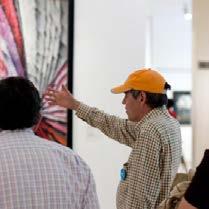
Inclusive communities
A place for collaborative work, together with professionals and organisations from the social sphere and the community, for the development of long-term projects to promote the Museum and its contents from a perspective of integration and inclusivity.
17 activities
191 videos and resources
125 participants
18 participants
3,992 participants
Visits, workshops, meetings, etc.
Dynamo/Alternator (Connecting Hospitality), Easy Museum (Video Sensations), Made to Measure (D-SEA, PCEA, Adapt CDA, etc.)
Projects in collaboration with other institutions
Halaqat, part of the FLIPAS (Laboratory of Urban Cultures) project, exploring cultural relations between Europe and the Arab world, organised by the GoetheInstitut in Brussels.
In a context of continuous learning, research is at the heart of our educational practice. We are interested in the study of the Museum’s collection and in new models of learning.


Training of professionals
Creation of spaces for reflection on museum education.
IV International Meeting on Museum Education “Listening as a Practice” and Art Education Takes a Step Forward.
150 participants
12 interpretation/ mediation panels
Exhibition projects
Educational curation and didactic museum projects
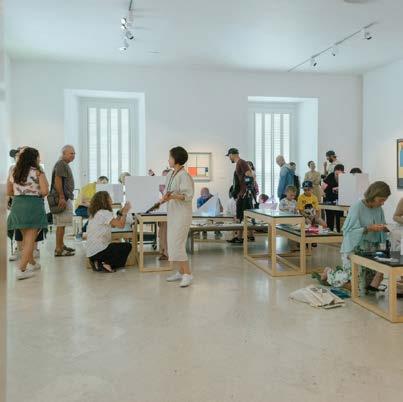
The Greatest of Six Centuries
A project by TBA21-Academy and the Museo Nacional ThyssenBornemisza created with the aim of exploring new methodologies and configurations of agents in processes of ecological transformation. The Education Department participated in its design during 2023.
Actions to disseminate the department’s activities
An important task of the Museo Nacional ThyssenBornemisza’s Education Department is its participation in specialised seminars and congresses.
38th Assembly of the ICOM (International Council of Museums), Museo del Prado Art and School Seminar, Brazil/ Spain Meeting on Cultural Management, The Hospitable Museum: A Space for Healing?, etc.
1,176 attendees 19 activities
539 participants 14 activities
University education
Organisation of courses and activities for students of different subjects in collaboration with various universities.
Hidden Knowledge in Contemporary Art (Autonomous University of Mexico, New York University), Museum Studies (Catholic University of Peru), etc.

36 activities
105 videos and resources
Education in Museums laboratory
1,865 participants
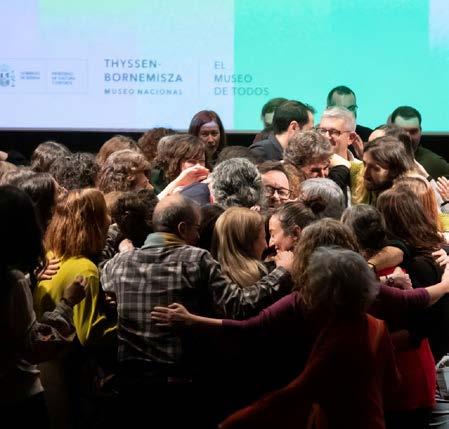
The Education Department’s publishing work during 2023 focused on publications related to temporary exhibitions, social accessibility projects, families and the education program.
Type

The Education Department received the support and collaboration of different institutions and organisations for the development of some of its programmes, projects and activities.
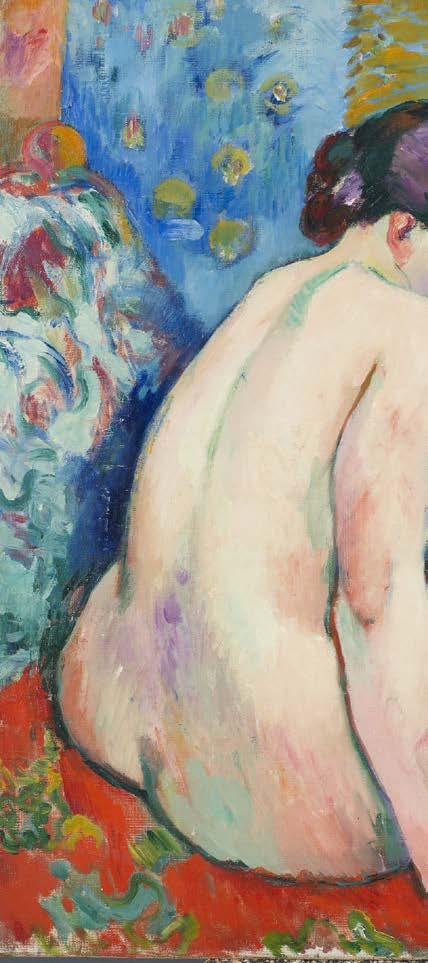

Educational guide
Poster/brochure
User guide
Typology
Programme
Project
Online course Course
Open call
Four Latin American museum professionals carried out training residencies at the Museum.
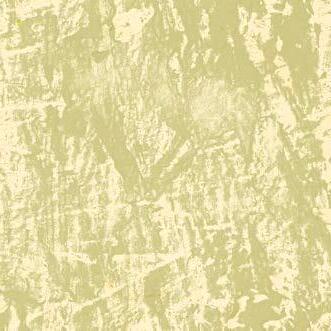


Title
Lucian Freud: New Perspectives
Department Programming: Good Weeds/Bad Weeds
Video Sensations
Initiative
Education and Social Action
Visual Narratives: The Occult
Experiment Pop
Occult Knowledge in Contemporary Art MaThyssen
Collaborating institution or organisation
Iberdrola Foundation
Japan Tobacco International (JTI)
ACS Foundation
UNED – National Distance Education University
Royal Spanish Mathematical Society (RSME)

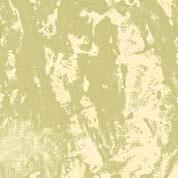
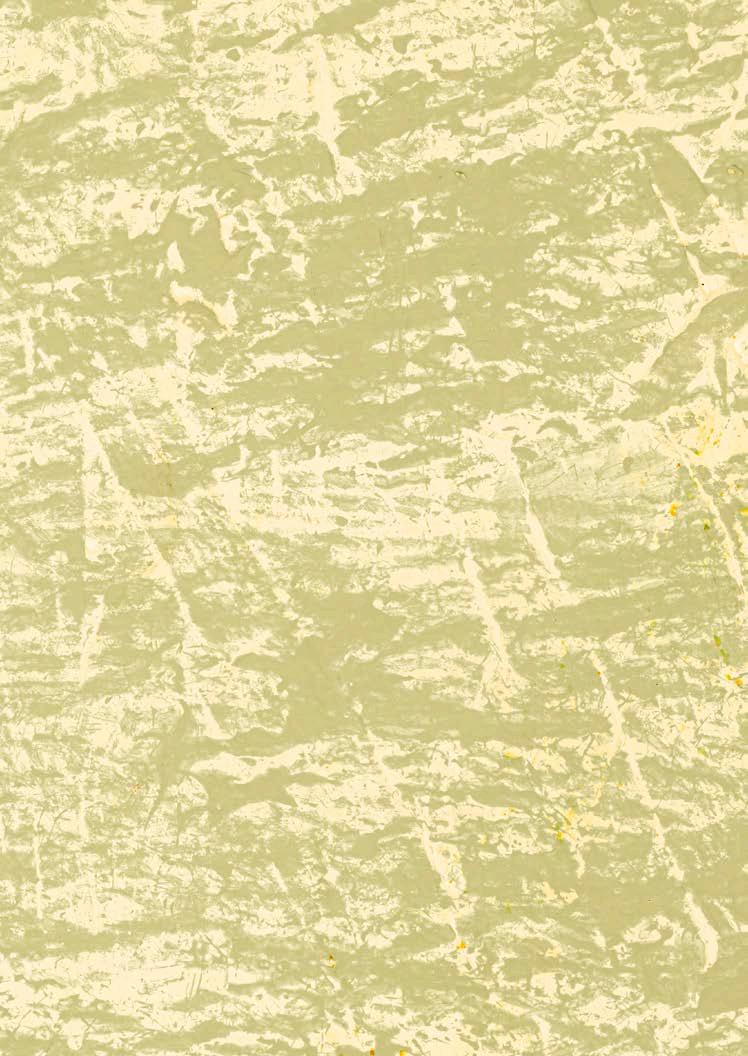
We want to be your useum We want to be your museum



The 2022 exhibition programme (Picasso/Chanel, Alex Katz and Ragnar Kjartansson: Emotional Landscapes) earned the Museum third place in the “Best of Culture 2022” ranking, carried out each year by the Contemporánea Foundation.


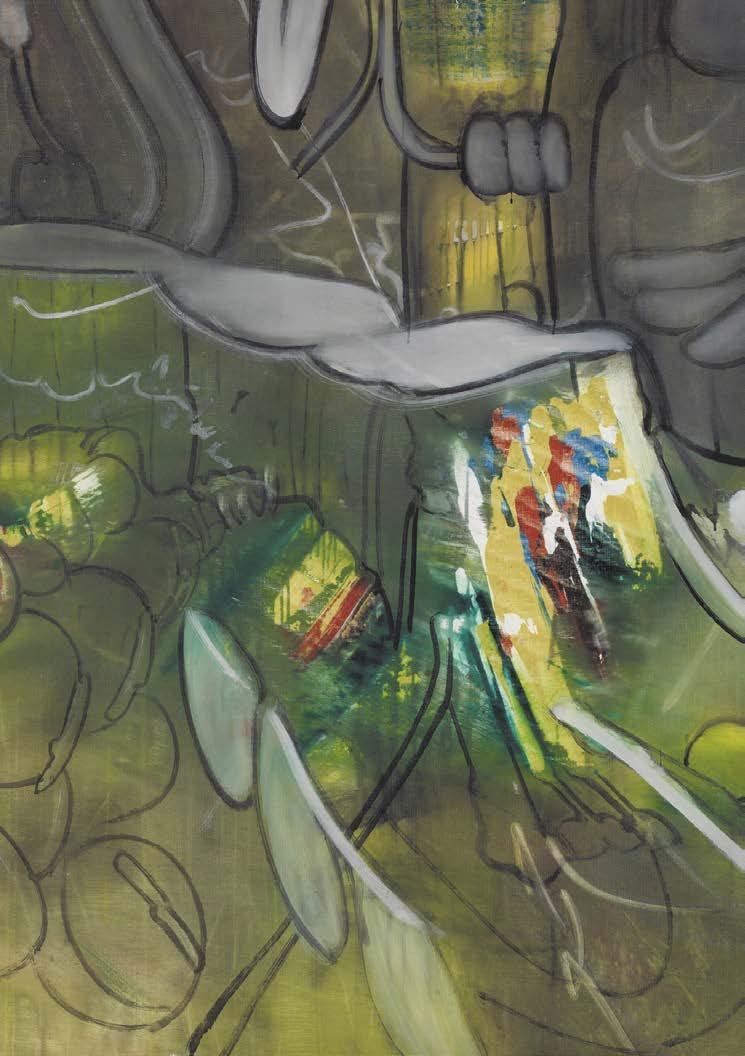
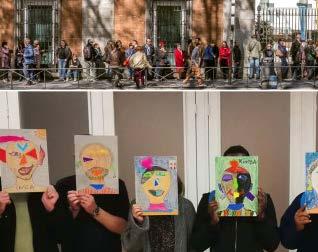
Queen Letizia National Disability Award for the Education Department’s Education and Social Action programme in the Inclusive Culture category.

ADG Laus 2023 Awards. Online documentaries Love Letters to Cities and Back to Nature, produced by the Education Department in collaboration with the BBVA Foundation, received the Silver LAUS and Bronze LAUS, respectively, in the 2023 edition of the graphic design and audiovisual communication awards granted by the FAD Association of Art Directors and Graphic Designers.
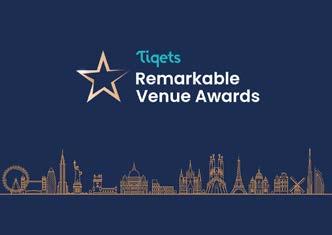
Remarkable Venue Awards 2023, by Tiqets, for the Most Remarkable Venue.


In 2023, we carried out three surveys, both online and face-toface, with the aim of evaluating and improving our visitors’ experiences at each stage of their visit. In addition, we collect valuable opinions about their experience in the Museum: rooms, exhibitions, shop, accessibility and cafeteria are some of the aspects we ask about. Feedback from our visitors helps us to improve.
• Total email surveys: 20,910 (18,883 in Spanish and 2,027 in English)
• Box office surveys: 438
• Face-to-face surveys about the Of Whales exhibition: 604
• Online surveys: 2,879 (1,699 in Spanish and 1,180 in English)
Based on our visitors’ perspectives, the aim is to understand their “journey” throughout all stages of interaction with the Museum, in order to identify areas for improvement and design strategies to make their visit more positive and satisfactory.
To this end, a visitor profile has been drawn up based on those who visit the Museum the least: foreigners, families and young people (18 to 34 years old).

24,227 surveys 7.93 (7.63 in 2022)
Trip Advisor certificate 363 comments in the guestbook

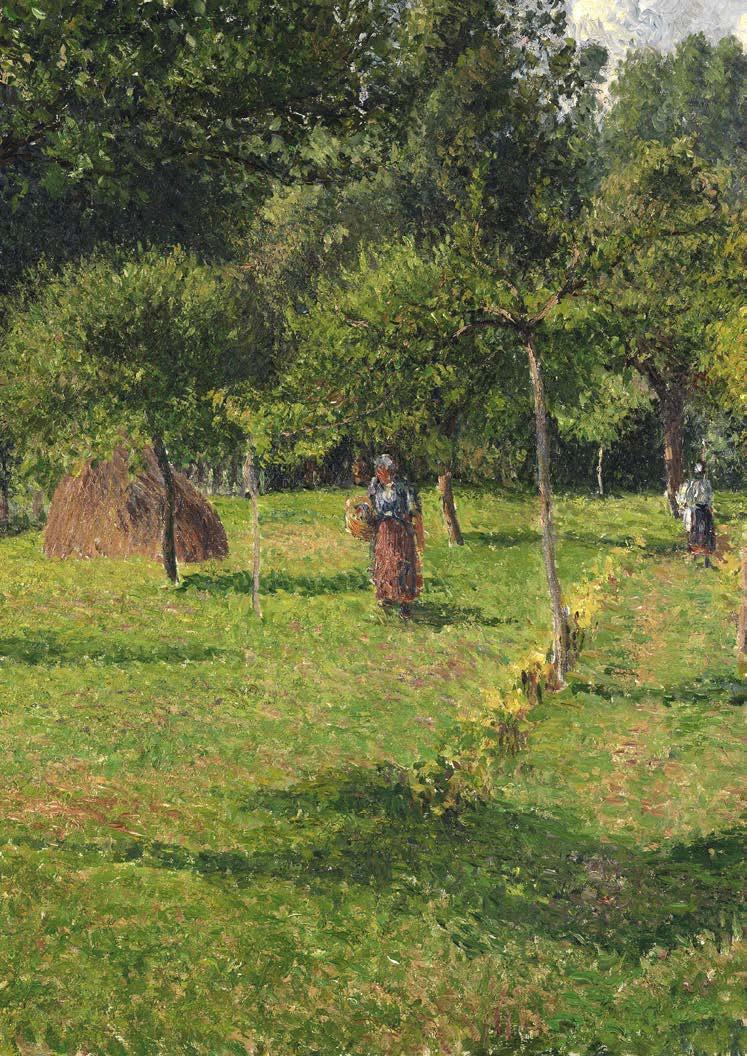
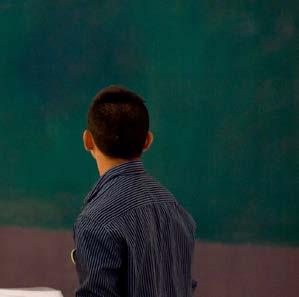
The audio guide service enriches the experience, provides visitor autonomy, allows access to an enormous amount of content in different languages and promotes inclusion with adapted content such as sign language guides or descriptive audio.
Additionally, the screens inside the Museum are an integral part of the visitor experience, providing them with access to detailed information, interactivity, context and constant updating.
Regarding sign language guides, as part of our commitment to accessibility, 30 new videos were produced in Spanish sign language with subtitles.

We are excited to work every day to offer an increasingly personalised experience, adapted to the expectations and profiles of each of the people who visit us, so we can become “their favourite museum”.
1,017,684 visitors
39% corresponds to international visitors and 61% to local visitors. Of the local visitors, 66% are from the Community of Madrid and 34% are from the rest of Spain.
The average visitor profile is that of a Spanish woman between 45 and 65 years of age. who visits with her partner.
The majority of visitors have visited the Museum before.
The website is the most popular source of information about the Museum for visitors.
Community of Madrid
Andalusia
Valencia
Catalonia
Castile and León
Castile-La Mancha
Galicia
Basque Country
Aragon
Murcia
Canary Islands
Asturias
Extremadura
Navarra
Cantabria
La Rioja
Balearic Islands
Ceuta
Melilla
Total
The countries that most visited the museum in 2023 were the United States (7.96%), followed by Italy (5.05%) and France (4.85%). There was a rise in the number of visitors from other countries compared to the previous year.
The total number of visits was 1,666,804. The majority of visitors purchased a single ticket, which allowed them to visit both the permanent collection and the temporary exhibitions. 7.96% United States 4.85% France 5.05% Italy
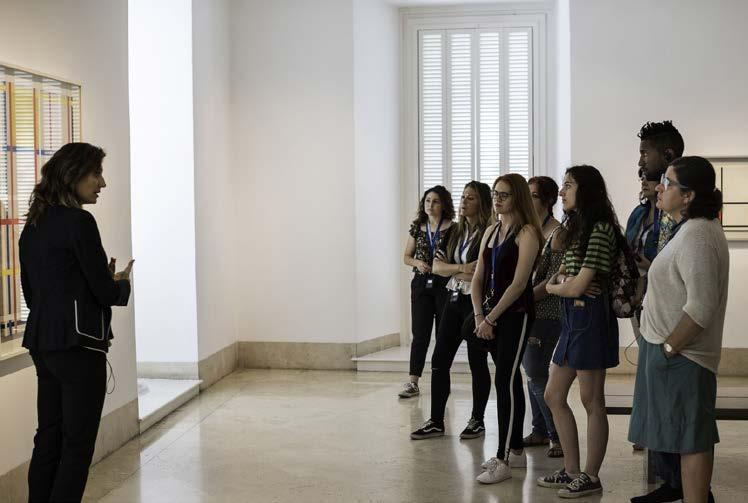
Number of visits per exhibition
Permanent collection
Temporary exhibitions Balcony exhibitions Total
With regard to the type of tickets sold in 2023, 31.85% corresponds to free admission, followed by 25.41% for reduced admission, 24.16% for general admission (admission applicable to people who are not included in the groups that can benefit from sponsored, reduced or free admission), and the remaining 18.58% for sponsored admission.
Additionally, the CAV (Visitor Service Centre) is a key part of the visitor experience because it guarantees accessibility, provides visitor service, solves problems, offers detailed information, collects feedback and can help to evaluate the visitor experience. Some relevant figures are detailed here:
Increase in the number of compliments by 4%, with a decrease in the number of complaints and claims by 33% and 5%, respectively.
31,722 queries received and dealt with by the CAV: 28,123 calls and 3,599 emails.
A total of 51 registered complaints from visitors were received by mail or telephone.
Madrid is the province from which most calls were made.
The main language of communication is Spanish, followed by English.
The Communications Department has worked to respond to the multiple expectations that stakeholders have of the Museum and vice versa. In this sense, there are many actions that are difficult to quantify, so by way of a summary, the following stand out:
10 Press releases on exhibitions and 24 on other topics Production of 16 final dossiers on exhibitions and 10 on sponsored activities and projects
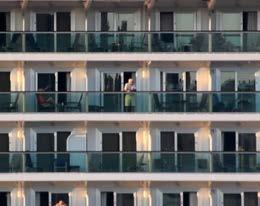


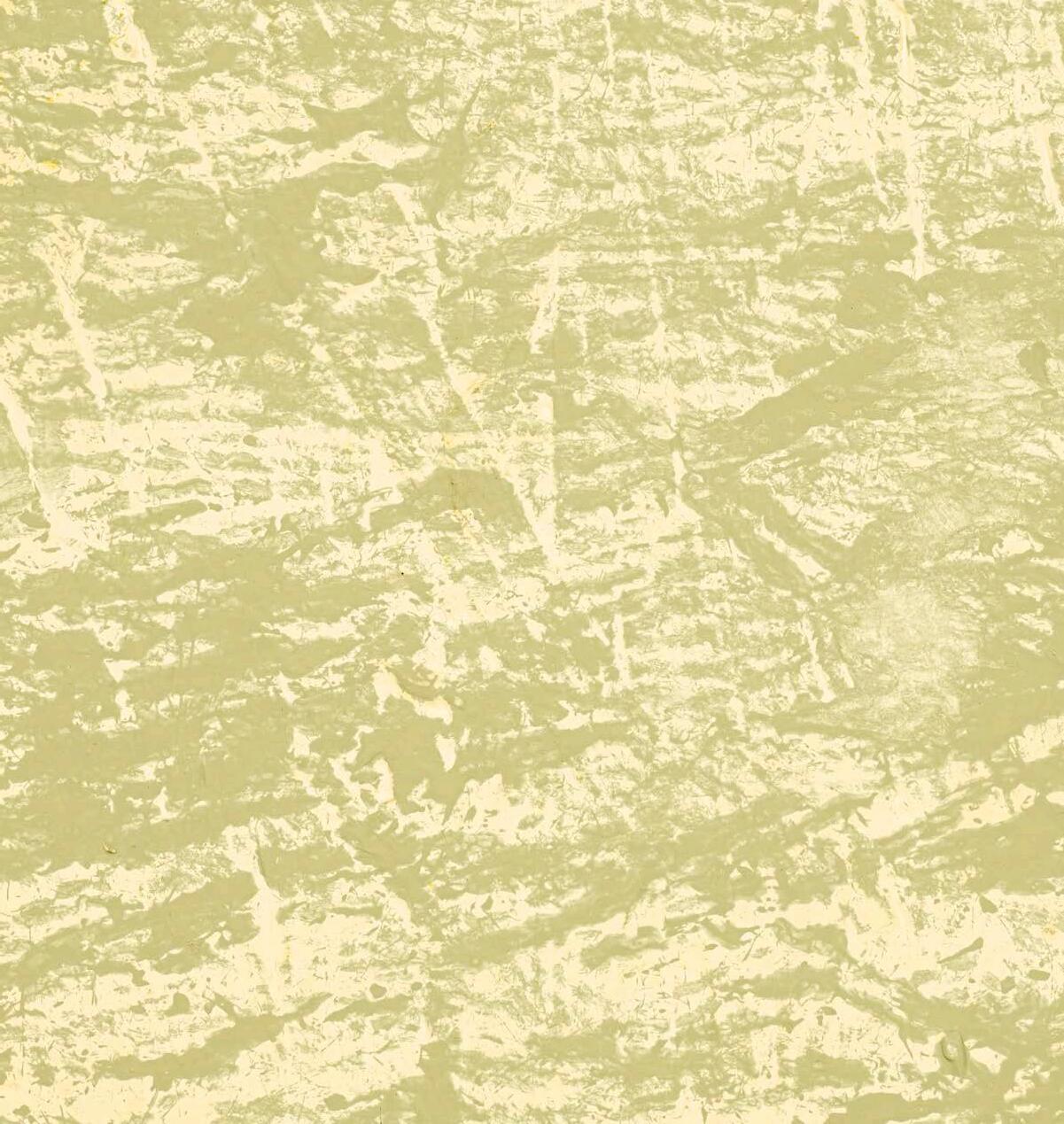
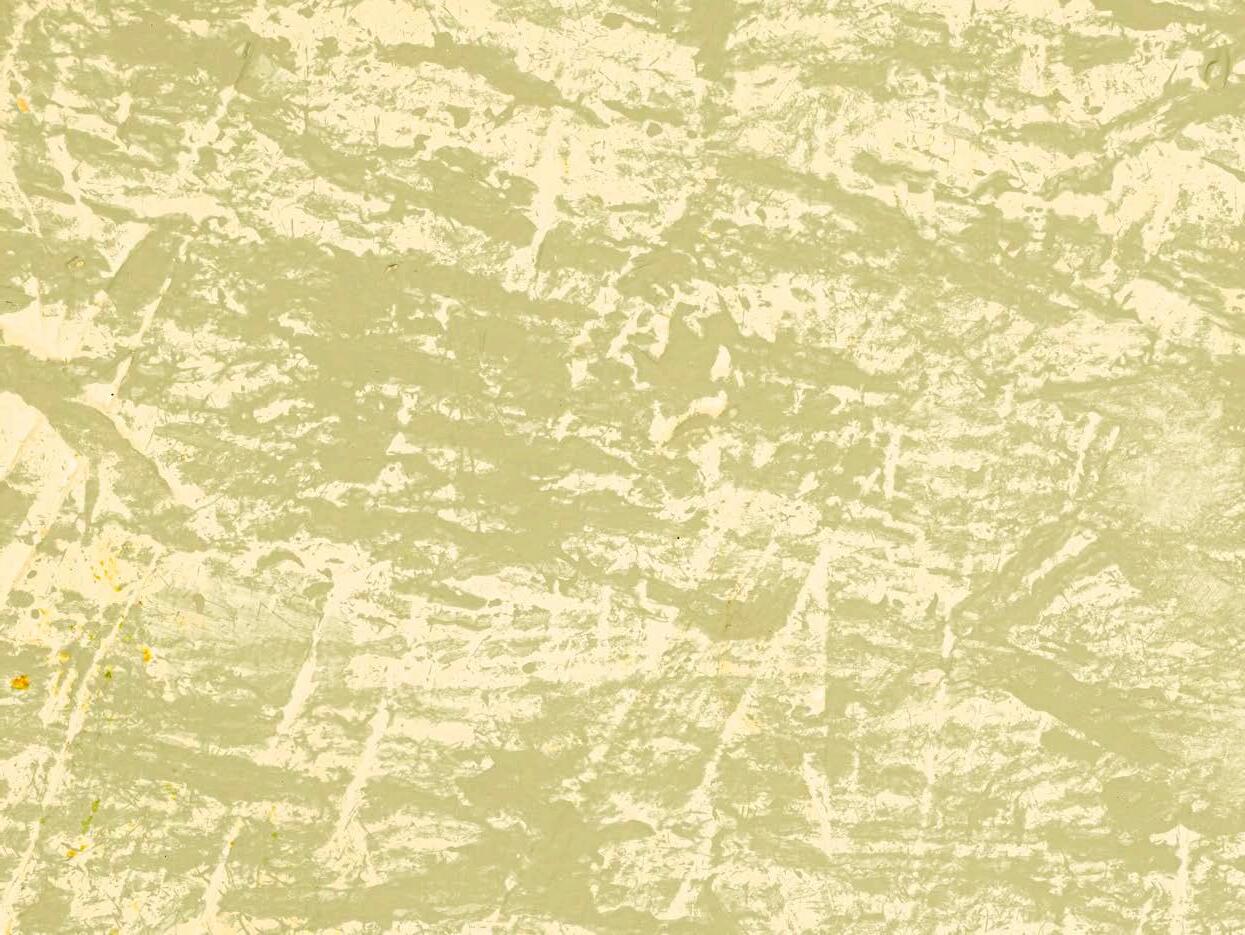
10 Exhibition press conferences
575 No. of attendees
Exhibition press releases sent to 3,748 contacts in Spanish and 899 contacts in English.
Press conference announcements sent to 866 contacts. Press releases of activities sent to 2,328 contacts.
46 Perspectivas bulletins
48,506 subscribers
10 Microsites on exhibitions and 3 microsites on the performance series Vision and Presence, Crowdfunding for Restoring Waterloo Bridge and new sign language guides
- Presentation of the first collection of Les Vessenots by Van Gogh NFTs.
- Dissemination of exhibition press releases, list of works, artwork info sheets and a selection of texts and catalogues.
- Invitation to participate in the social media action Picasso in Your Life, organised by Picasso Celebration 1973–2023.
- Invitations to press conferences in the Auditorium and in the Museum rooms.
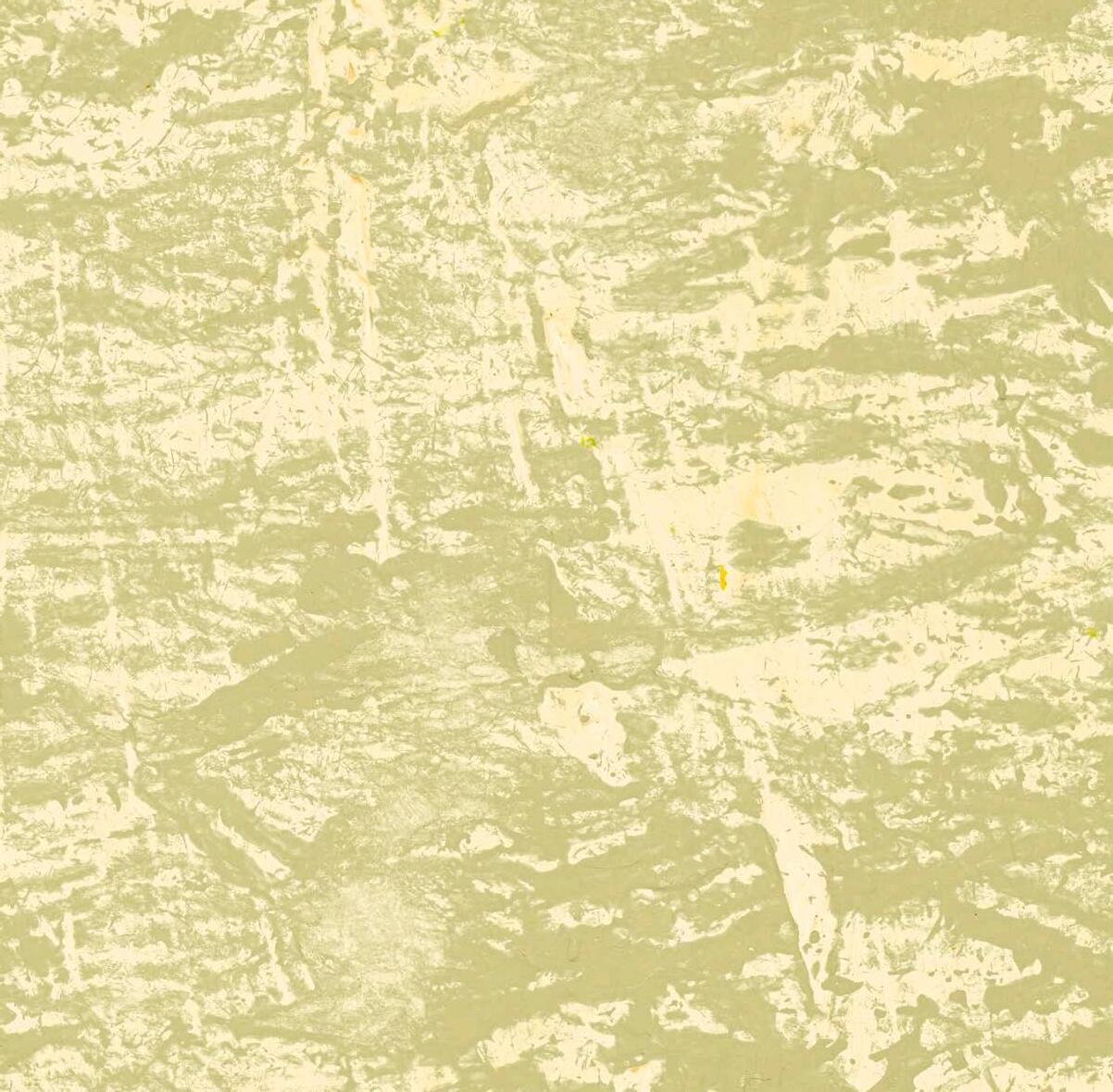


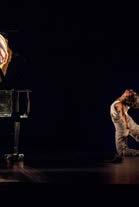


- Invitations to attend performances, presentations, conferences and other activities.
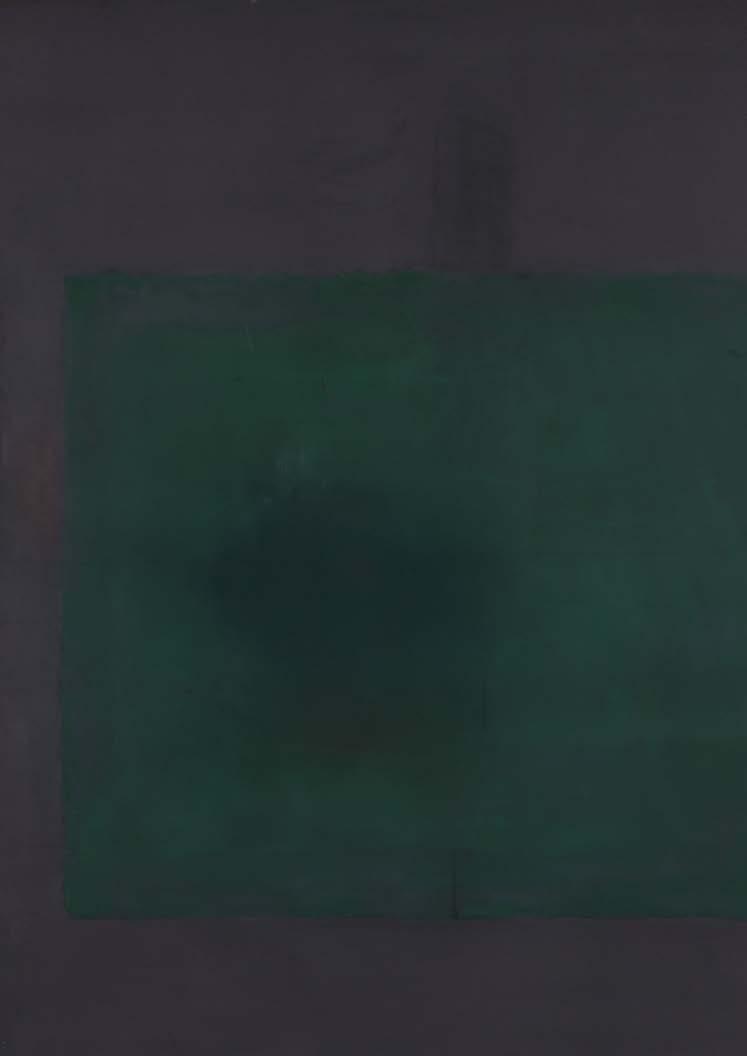


26 exhibition and special installations openings organised by the Museum
3,608
No. of attendees

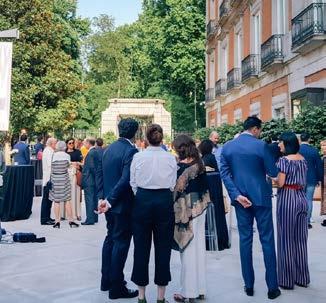

61 protocol visits
499 No. of attendees
31 events organised 2,872 No. of attendees
Through social media and the Thyssen podcast, we have created new narratives that have allowed us to reach diverse audiences and achieve 73,862,334 reactions on social media.
1,199,451 632,932 (formerly Twitter) 27,100 YouTube
15,634,571 YouTube video views
360,824 Instagram podcast episodes 10
299,369 Facebook
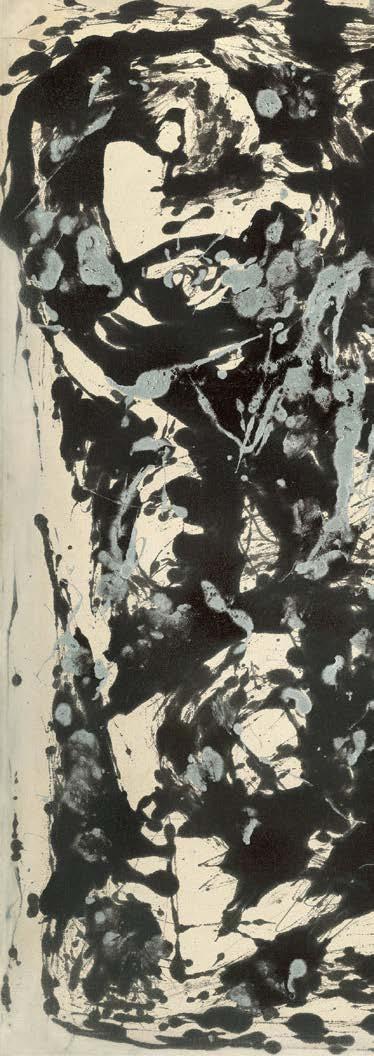
131,496 listens increase in podcast listenership in 2023 27.88%
22,437 Tik Tok

We have achieved a total impact of 73,862,334 reactions on social media and a steadily growing number of followers.
The Museum launched the Art from Scratch series on TikTok, with the aim of bringing the young audience closer to art through concepts such as iconography, perspective and the different stylistic movements.
In November 2023, the Museum’s WhatsApp broadcasting channel was launched, making it the first Spanish cultural institution, and the second in Europe, to have a presence on this platform.
38 live broadcasts via Instagram
Of temporary exhibitions, restorations of works, tasks by the Museum’s professionals and different activities carried out during the year.
With Patrimonio Nacional on the occasion of the loan of a work for the exhibition Women Masters; with Televisión Española for a collaborative post with Informe Semanal, and with the Government of Spain for the Permanent Representative of Spain to the European Union, both in relation to Women Masters.
12,751,145
+7.79% 2023 vs 2022
2023 ended with more than 12,700,000 page views, a 7.79% increase over the previous year.
The most visited exhibition page was that of the Women Masters exhibition (133,267 page views, 1.04% of website visits).
The Museum’s website underwent numerous improvements and updates with the aim of offering a better user experience without compromising the quality of the curatorial content. Small interventions and developments were also carried out, among which the following stand out: adaptation of the website design to the brand image, new virtual tour page, interactive map of the Museum, improved image galleries of the exhibitions and a renovated restoration section (phase 2) that went online in 2024.

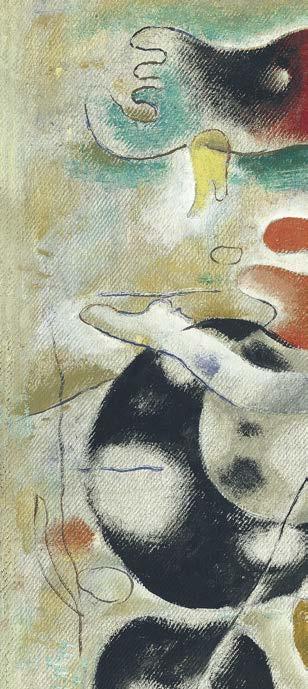
Users
16,315
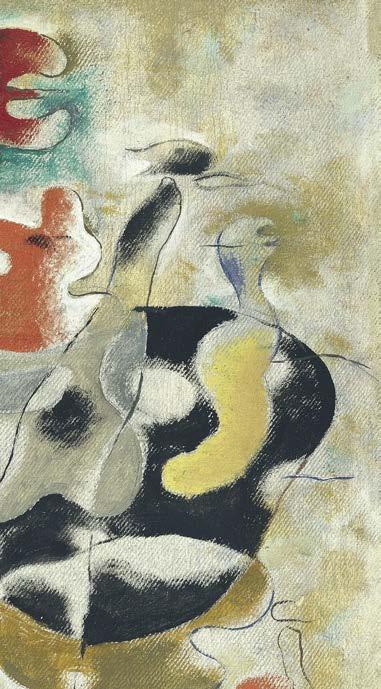

In 2023, the Education Department continued to develop its website with the aim of offering different spaces for virtual participation in the Museum’s educational communities, generating new content and resources, as well as providing information on all its activities via this medium. Specifically, a new version has been designed taking into account the different devices used to access it (mainly smartphones). Among the most relevant changes are the different visual aspects (new typography, new colour palette for highlights, use of different image formats, etc.), the reorganisation of the information in order to enhance the social/ community nature of EducaThyssen, and the creation of new spaces for developing thematic activities for the public.
27,400 Pages viewed
21,200 Sessions
The Restoration Department is making progress in order to offer visitors new digital experiences, with the production of videos that complement those already available in the rooms that expand on the techniques used in the restoration process, as well as the creation of a microsite.
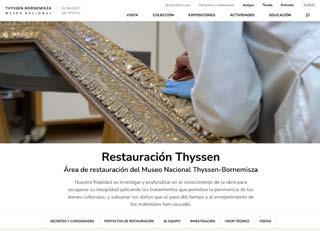
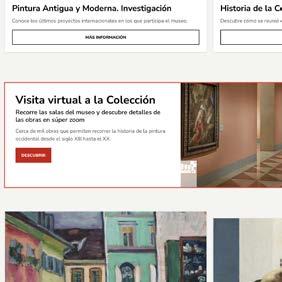
3,928
Guided virtual tours
High-quality digital experiences that the public can enjoy online. Virtual visitors can visit the Museum’s permanent collection and temporary exhibitions.
During 2023, progress was made in consolidating the virtual version of the Museum, with more free content available to our website users. In addition, the virtual guided tour An Hour at the Thyssen was launched: a tour of 15 masterpieces that users can enjoy independently.
Completely digital tours in our virtual environment, guided live by the Museum’s team of guides. An opportunity to bring the temporary exhibitions and the permanent collections (14 different tours available) closer to visitors who want to discover details that cannot be seen with the naked eye. Aimed at tourist groups and companies. An opportunity to strengthen the Museum’s digital community and make it accessible to people who are not physically present in Madrid.

are another opportunity to learn more about the temporary exhibitions. Hosted by their curators or by content creators such as Ter and Luis Piedrahita.

1 million More than views
More than views
91,000
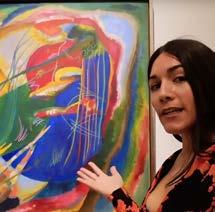
This is a multimedia project developed by the Education Department for slow reading and slow looking, which seeks to enrich the narratives in art from an educational point of view. In 2023, the platform for the publication of these contents, in a similar way to docuwebs.
So far, the following stories have been published: Georgia O’Keeffe, The Impressionists, Rembrandt and Alex Katz.
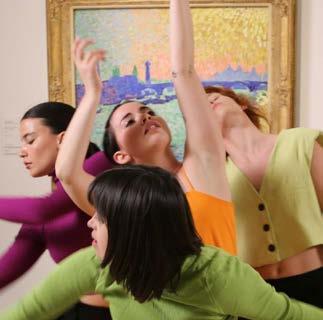

The Museo Nacional Thyssen-Bornemisza and technology company Olyverse have transformed one of the masterpieces by the famous painter Vincent van Gogh, Les Vessenots in Auvers, into an NFT.
This is the first time that a traditional work of art has become the first physical display of digital collectibles in a virtual room dedicated to the future. This allows art to be taken to a new level of interaction and accessibility for the public, via a unique and innovative artistic experience at the intersection of technology and creativity.
Details of the NFTs collection
- Original NFT of a painting by Van Gogh
- Limited to 100 units
- Issued by the Museo Nacional ThyssenBornemisza
- Certified by the blockchain
- Created by Olyverse
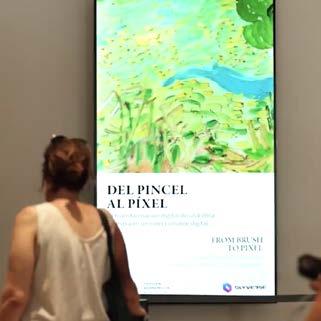

Each piece from the collections on display has a unique QR code which can be used to access the work’s datasheet on our website (in Spanish), along with additional content (this project is currently under development).
This year, as in previous years, the Museo Nacional Thyssen-Bornemisza renewed the Q for Quality Tourism seal based on the UNE 302002 standard, awarded by the ICTE (Spanish Tourism Quality Institute). It obtained a score of 949 out of 1,000.

The Q for Quality has become a distinguishing feature that brings recognition and prestige to the Museum, also highlighting the public service policy it has pursued since its beginnings.
This certification provides an essential tool for improving the quality of the services and activities complementary to visits, with the ultimate aim of guaranteeing, facilitating and enriching the visitor experience.
The Museum has been awarded the Q for Quality certificate since 2019
This seal is a guarantee of the Museum’s excellence

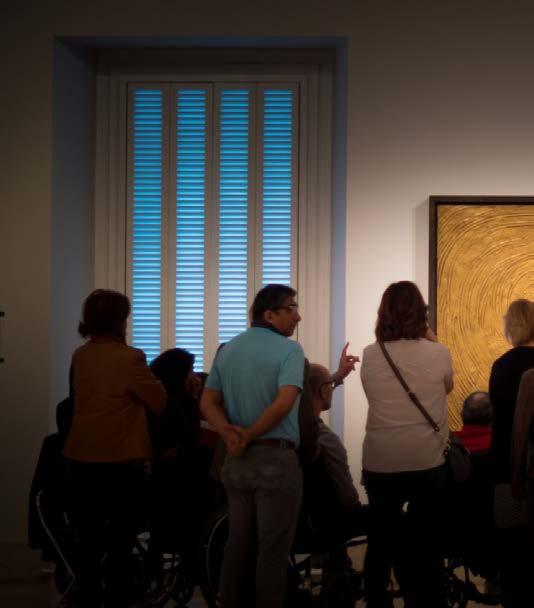

The Museum remains committed to improving the visitor experience and offer a visit that is as personalised and adapted to their profile as possible.

We are united by the same passion
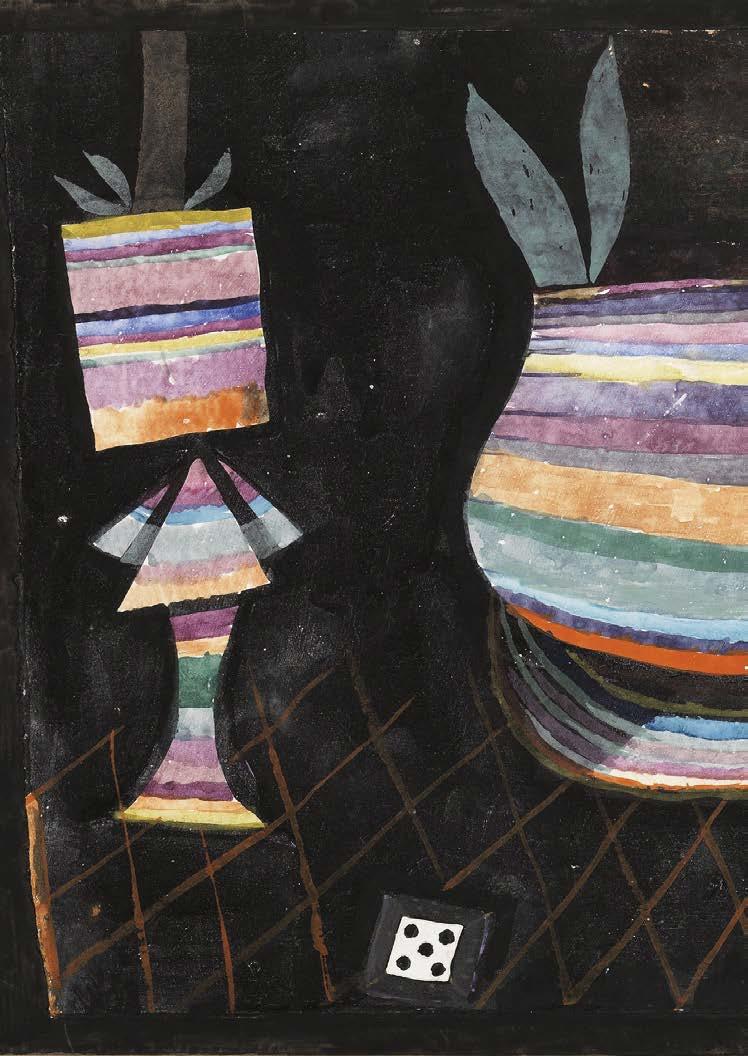
We are united by the same assi

From the Museum, we express our constant and special gratitude to those people and institutions who, as Friends of the Museum, share an unwavering commitment to culture, its conservation and research, and to the development of the Thyssen’s exhibition projects.
In 2023, the Friends of the Thyssen programme increased its income by 7% and its membership by 9%. It is a great satisfaction to see that we have surpassed the pre-pandemic figures.
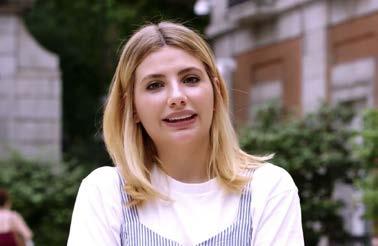
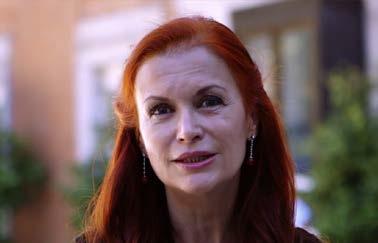
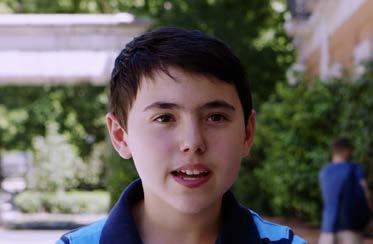
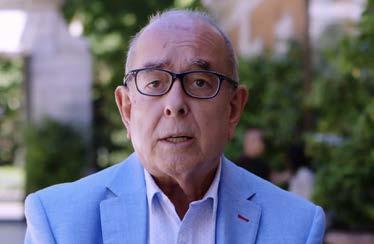

685 thousand euros
Friends of the Museum programme
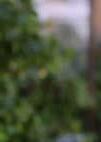

6,334
Friends of the Museum 88% average renewal rate
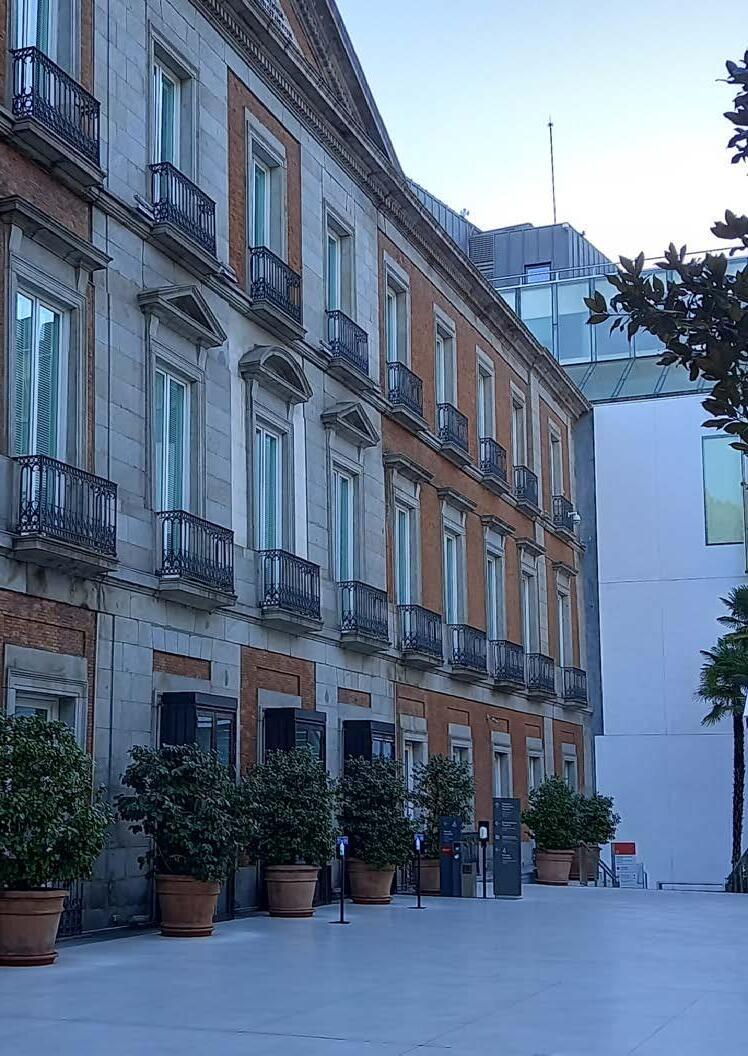
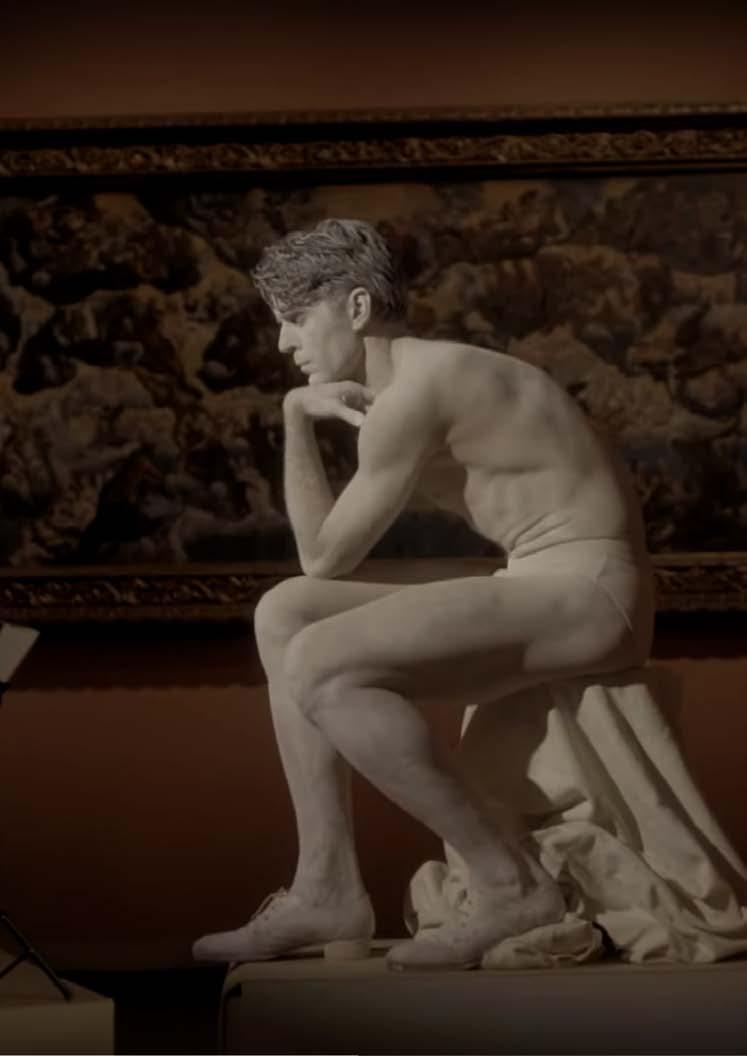
Our Corporate Friends contribute both to the conservation and dissemination of the permanent collection and to the development of different activities, such as temporary exhibitions, workshops and educational programmes, among others. The participation of companies and institutions as sponsors, collaborators or Friends is essential in order to maintain the level of excellence of each of the Museum’s projects.

paying* and 5 through sponsorship)
Accenture
ANCI
A.T. Kearney (new)
Bank of America
BBVA Seguros
CaixaBank
Citibank International plc
Clifford Chance
El Corte Inglés
ACS Foundation
Banco Santander Foundation
IE Foundation
KPMG, S.A. Foundation
San Pablo CEU Univ. Foundation (new)
Repsol Foundation
Gómez-Acebo & Pombo
Iberia
Infinorsa
Ungría
Uría Menéndez Abogados
Mutua Madrileña Foundation (sponsorship)
JTI (Japan Tobacco International) (sponsorship)
JP Morgan (sponsorship)
Kyndryl (sponsorship)
Telefónica (sponsorship)
During 2023, the Corporate Friend+ category was created, with an added value proposal, along with the SME category, in order to give access to the Museum to all those small and medium-sized companies that do not have a large budget, but want to support the Museum’s mission. These categories are being implemented in 2024.
In 2023, there was a significant increase in new Friends, resulting in the highest figure in the programme’s history, as well as an 18% increase in the number of activities compared to 2022, with 58 exclusive activities (face-to-face and virtual) with 6,796 participants, 11% more than the previous year. Of the total number of activities, four corresponded to the specific activities for Friends + (higher categories) and six for young Friends.
The activities include courses on various subjects, conferences, trips, private visits to temporary exhibitions, the permanent collection and even small-scale exhibitions, as well as attendance to fairs, concerts, preview visits before the opening of exhibitions and free private visits.
In both face-to-face and online formats, these included the following: Capsule: Introduction to Artistic Techniques II, Tours of the Collection: Art and the Occult and Tours of the Collection: Feminine Plural.
Through the Friends Preview and In Depth programmes, the Friends of the Thyssen enjoy private visits to experience both the temporary exhibitions and the permanent collection in an exclusive way. In addition, visits are also made to other institutions where works have been loaned for exhibitions, such as the Museo Nacional del Prado, the Museo Nacional Centro de Arte Reina Sofía, the MAPFRE Foundation and the ICO Foundation.
1,378 new Friends
58 exclusive activities
On the restoration and technical study of Fra Angelico’s The Virgin of Humility.
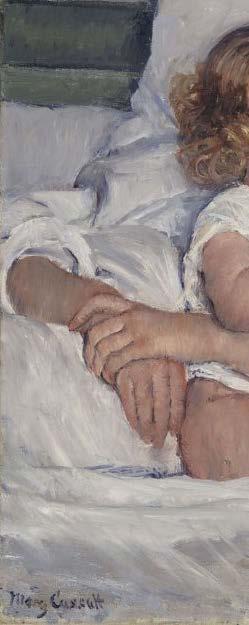
Guided visits to Estampa and UVNT, along with free tickets to ARCO and JUSTMAD.
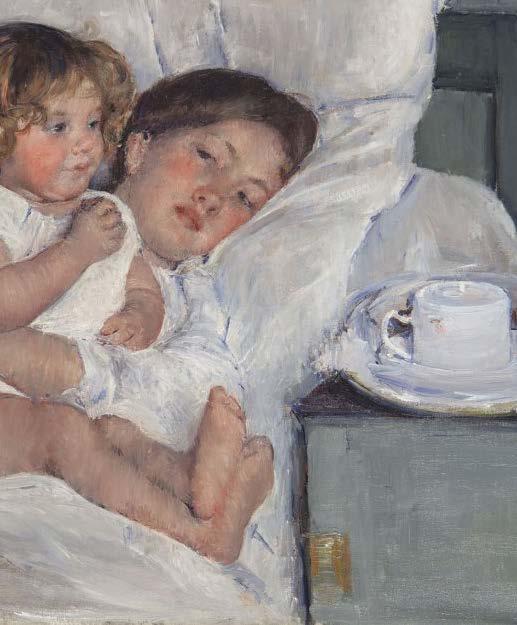
The agreement between the two institutions was maintained, and the Friends of the Thyssen were able to enjoy three concerts (one from the chamber music series, and another one from the young talents series, exclusive for young Friends), including priority ticket purchase for the Women Masters concert and a music appreciation workshop.
The loans of works to national and international exhibitions led to the organisation of trips to learn about the connections established with other paintings. Over the course of the year, the following were visited: Córdoba for Abundant Futures in Convulsive Times, curated by TBA21 at the C3A Centro de Creación Contemporánea in Andalusia; Santander/Bilbao for the loans of works by Miró (Painting on White Background and Catalan Peasant with Guitar) and Kokoschka (Carl Leo Schmidt and Portrait of Max Schmidt) to the Guggenheim Museum Bilbao; Amsterdam for the Vermeer exhibition at the Rijksmuseum; East Flanders for the loans of Dürer’s Jesus Among the Doctors at the KMSKA (Royal Museum of Fine Arts), and Bouts’ Virgin and Child at M Museum Leuven.
At each year’s annual reception, organised for Friends +, corporate Friends and sponsors, we thank them for their support, while the managing and artistic directors report on the current year’s status and the proposals for the coming year. There is also a special activity. In this case it was a performance by dancer Sergio Bernal: https://www.youtube. com/ watch?v=1Tel0PDOj98
In 2023, LabThyssen was created in collaboration with the Banco Sabadell Foundation. A participatory programme in which young Friends of the Museum (up to the age of 35) can co-create and vote for the activities that most interest them. This involves a panel of experts in different disciplines (artists, cultural
managers and even scientists). Two design workshops were carried out to define the activities for 2024.
The Christmas Party for young Friends was a fun event that brought people closer together and allowed them to clearly identify their concerns and interests.
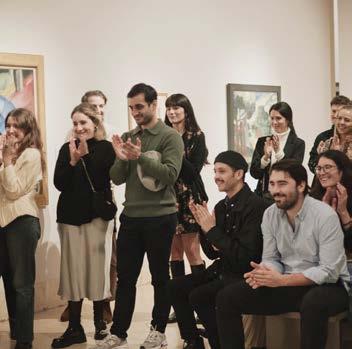

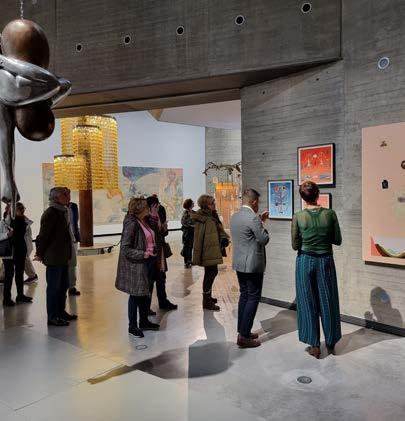

Freud: A Neurological Perspective private visit, in collaboration with the Spanish Neurological Society (SEN), during which Dr. Porta described the neurological perspectives of both the painter and the subjects that appear in his portraits.
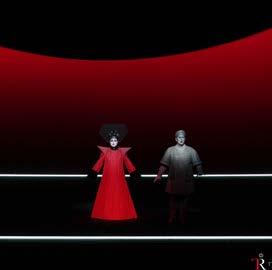
Agreement with the Teatro Real to attend the premiere of Rigoletto and visit the theatre’s interior.
The collaboration of companies and institutions has continued to be fundamental, with the addition of five new organisations.
Similar percentages of sponsorships have been oriented towards temporary exhibitions and projects in line with the Museum’s general mission.
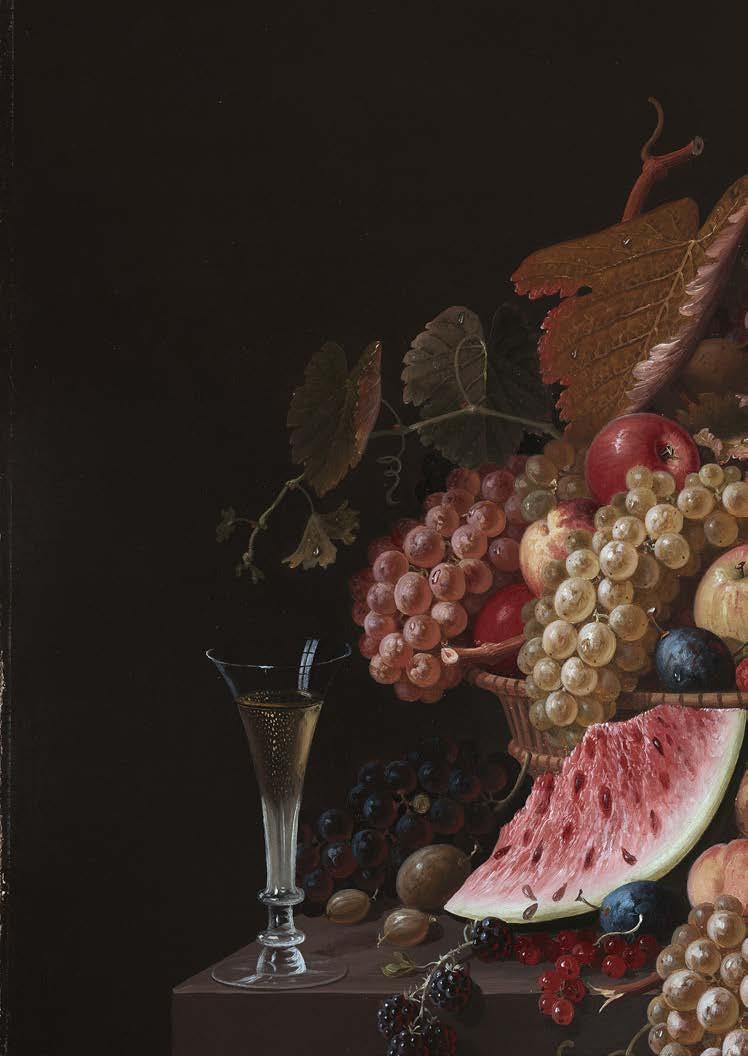
We are grateful to our sponsors for their support in the conservation of the collection, the organisation of exhibitions and the development of restoration, education and accessibility projects.
Project
Conservation of the permanent collection
Support for the creation of a video-guided tour of the permanent collection (20 Secrets of the Permanent Collection)
Conservation and dissemination of the collection and holding temporary exhibitions
Dissemination of the Museum’s activities
Free opening: Mastercard Mondays
Conservation of the permanent collection
Conservation of the permanent collection
Conservation and promotion of the collection of works from the Bauhaus that are kept in the Museum’s permanent collection
Conservation of the permanent collection
Communication of the loan of a painting to the KMSKA (Royal Museum of Fine Arts in Antwerp)
Collaborating organisation
Mutua Madrileña Foundation
Mutua Madrileña Foundation
Sabadell Foundation
Sotheby’s
Mastercard
JP Morgan Chase & Co
Illycafe
TEKA
Kyndryl
Visit Flanders
Project
Social action education projects:
- Made to Measure
- Easy Museum
- Dynamo/Alternator
Experimenta series of online courses:
- Pop Art Factory: Experimental Cultural Laboratory

Sponsor
Iberdrola Foundation
ACS Foundation
Project
#VersionaThyssen
Pride Parade
Momentos Alhambra #AperitivosThyssen
Art Vivant
The Path of Water tour
Picture a World Without Soil
Expansion of the subtitled sign language guide
Sponsor
Community of Madrid – UNIQLO – Prior Art Space
Tiqets – Community of Madrid
Mahou-San Miguel
Gran Meliá
Hammam Al-Ándalus
Heinz
Bankinter
With the sponsorship of Tiqets and the Community of Madrid, the Museum once again participated in the Pride Parade in Madrid, one of the most important events in the city, achieving a historic milestone in the cultural sector.
The Museum’s float, designed under the artistic direction of Miranda Makaroff, presented a series of reinterpretations of our collection and stood out for its celebration of diversity.
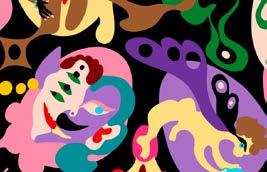
#VersionaThyssen
Since 2019, we have held this contest in which young (16 to 35 years old) artists and creatives from all over the world can share their own versions of a painting from the collection on Instagram, opting for prizes and awards from the Museum.
In 2023, in addition to the Community of Madrid, there were two new collaborations. UNIQLO gave award winners visibility through its UTme! line of personalised garments and Prior Art Space awarded two special prizes to the two best pieces of the year.


#TardesThyssen
For the eighth consecutive year, the #AperitivosThyssen concerts took place, sponsored by Mahou-San Miguel under its Momentos Alhambra brand.
Ten concerts were held, linked to ten works from the collection that are marked by their festive theme, based on the “after” concept.
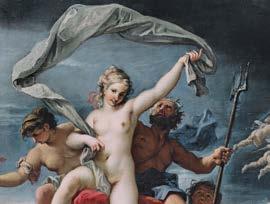
The Hamma Al-Ándalus organisation, which specialises in the therapeutic and relaxing potential of water, renewed its sponsorship of The Path of Water thematic tour of 17 works related to this natural element and its relevance to social and personal wellbeing.
+11,000
website visits

Marking the fourth consecutive year of Gran Meliá’s sponsorship, the Art Vivant initiative was created in order to explore links between different artistic disciplines and our permanent collection.
In 2023, the discipline of dramatic art was chosen, and with the collaboration of the RESAD (Royal School of Dramatic Art of Madrid), an open call was launched for the selection of a proposal linked to a specific painting in the collection.
The winning proposal In a Dream, by Marlene Michelis Breva, explored the figure of Franz Marc and his work, and was performed over a total of 12 performances at the hotel.
performances 10 8 in Madrid 2 in Palma de Mallorca
+1,200
attendees
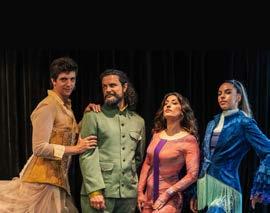
The Heinz brand presented an installation at the Museum aimed at reflecting on the care of the land, through alternative versions of Van Gogh’s Les Vessenots in Auvers: from a disturbing vision of the year 2074 (a field without arable land for food production), to the current degradation of the land in 2023, to the richness of the fertile land in 1890, the year in which Van Gogh created the painting.
+2,000
visitors
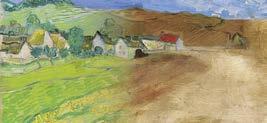
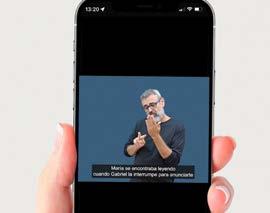
Thanks to the collaboration of Bankinter, the offer of guides for autonomous visits was increased with new content, which makes it possible to complete the sign language guide (free resource) with subtitles for the 50 most representative works of the permanent collection.
This resource is key to accessible visits for deaf and hard-of-hearing people.
Translation into sign language of 32 masterpieces from the collection, resulting in a current total of 50 works translated into sign language. This resource is free of charge.
Project
Production of the fundraising platform for the restoration of the painting Waterloo Bridge by André Derain.
Restoration of Fra Angelico’s The Virgin of Humility
Crowdfunding restoration
Waterloo Bridge
The Museum organised #LaContaminaciónNiEnPintura
crowdfunding campaign for the restoration of André Derain’s painting Waterloo Bridge. The project was made possible thanks to Mastercard’s contribution to the creation of the platform that made the fundraising possible. In addition, Mastercard contributed to the restoration of the work. It was one of the four companies that donated to the restoration.
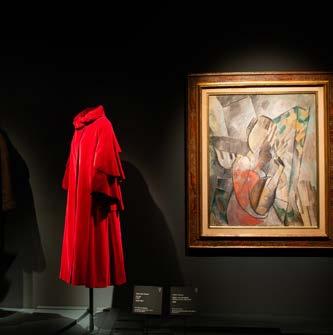
Patrocinador Mastercard
Bank of America’s Art Conservation Project*
*started in 2022, but completed in 2023

Project
Lucian Freud and The Occult in the Thyssen-Bornemisza Collections
Graphic Narratives and The Occult in the Thyssen-Bornemisza Collections
“Of Whales” by Wu Tsang
Picasso/Chanel
Liquid Intelligence
Women Masters
Picasso: The Sacred and the Profane
In 2023, the Museum applied for national and international calls for grants and prizes offered by foundations and public bodies, of which six have been awarded to date:
Programme
Convening Grant
Visual Art Grant
Sponsor
Community of Madrid
JTI
Ecolec Foundation
National Commission for the Commemoration of the 50th anniversary of the death of Pablo Picasso, formed by the Spanish and French governments in collaboration with the Museé national Picasso-Paris. Telefónica is a collaborating company in Spain for the Commemoration. Chanel
Community of Madrid
Urbaser
CCommunity of Madrid
Carolina Herrera
National Commission for the Commemoration of the 50th anniversary of the death of Pablo Picasso, formed by the Spanish and French governments in collaboration with the Museé national Picasso-Paris. Telefónica is a collaborating company in Spain for the Commemoration
Project
“Colonial Memory, Wounded Civilisation” symposium
“Gabriele Münter: The Great Expressionist Woman Painter” exhibition
Sponsor
Terra Foundation for American Art
Mentor Foundation
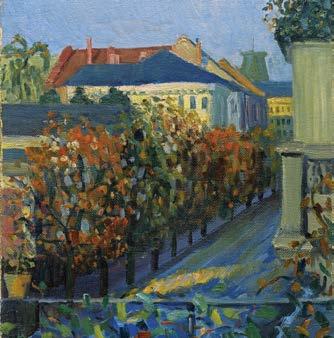
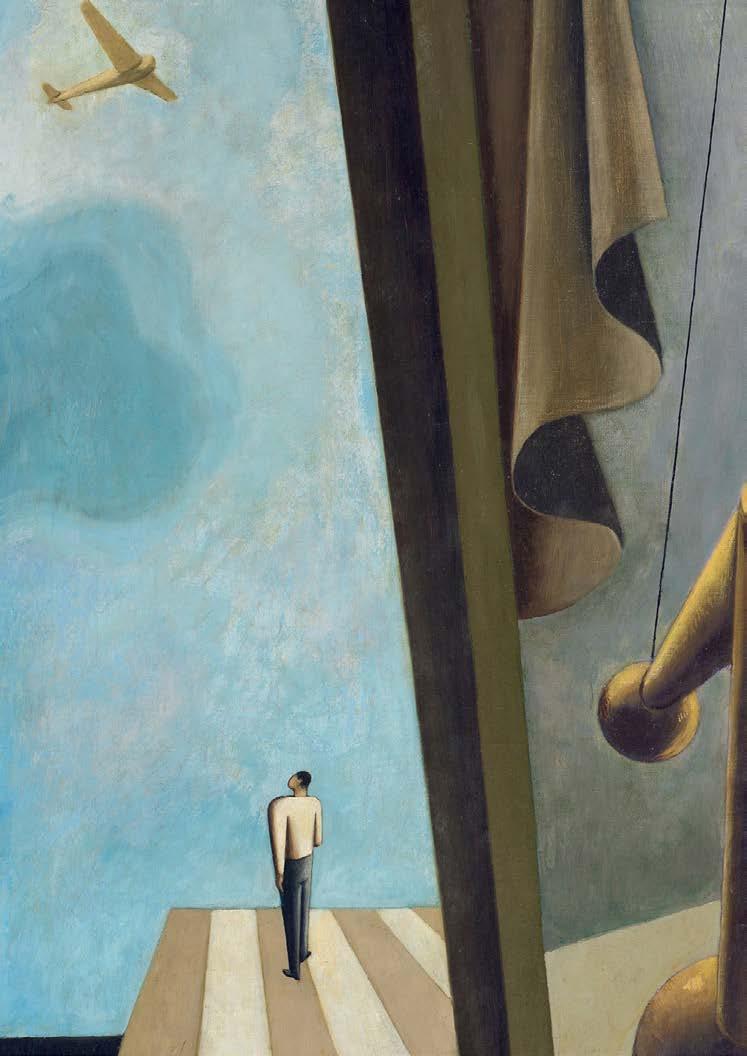


People management at the Museum is geared towards the overall well-being and professional and personal development of the entire team. The Museum strives to create a working environment where every employee has the opportunity to develop and grow, while at the same time fostering a sense of belonging that also helps to achieve the Museum’s strategic objectives. All of this is based on the values of trust, respect, participation, encouraging initiative, creativity and teamwork.
Registration of the 2nd Equality Plan

Renewal of the EFR certificate
(Proactive+ company in the B+ category)
Renewal of the Universal Accessibility certificate
Renewal of the Q for Quality
Tourism seal
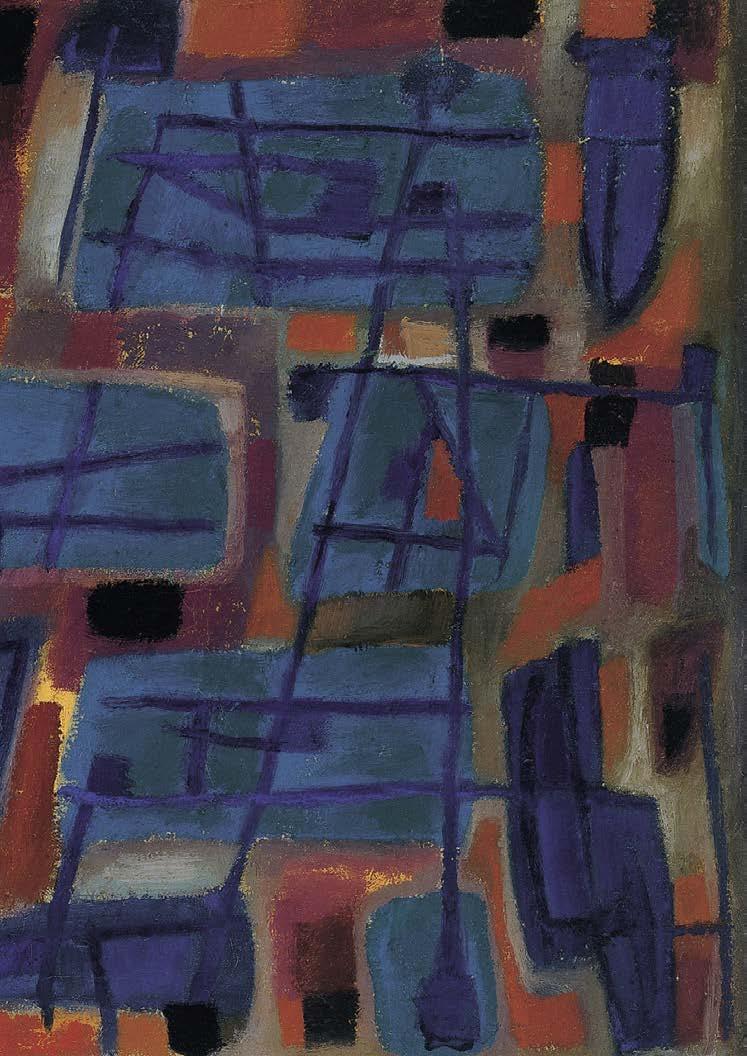
First Work Experience in Public Administrations programme
More than 60 training actions 90% permanent contracts
People management is key for the museum
Continuation of Thyssen Saludable, Thyssen Solidario and Thyssen ECO
61% women in the workforce
44 students on internships
Zero accidents
146 people Average number of staff 62% women 38% men 92% with a permanent contract 68% full-time 82% between 30 and 60 years old

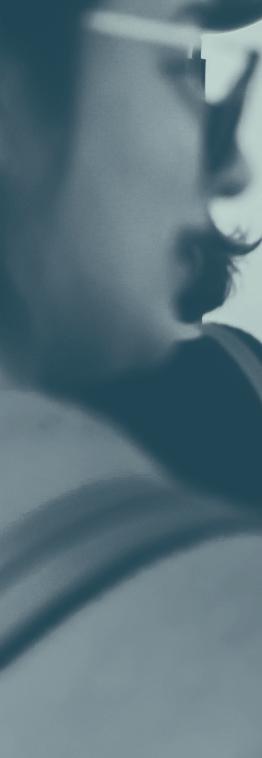
Thanks to collaborations with secondary schools, universities and education centres, we are contributing to the education of young people.

The Museum’s staff is characterised by the fact that it is stable. Recruitment processes are opened when there is a need to fill certain positions, absences and/or substitutions.
A major milestone of the year was the award of a public grant under the Recovery, Transformation and Resilience Plan (Next Generation EU funds) to finance the “First Work Experience in Public Administrations” programme for the recruitment of young unemployed people who have completed their formal education. The aim of the programme is for them to acquire, within the services provided by public administrations, their first experiences in employment, as well as social and professional competences and skills.





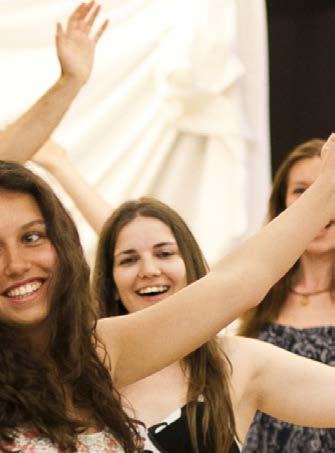
The Museum maintains educational cooperation programmes signed with universities and education centres, as well as agreements with schools and higher education centres in relation to postgraduate programmes aimed at graduates and professionals, thanks to which some students can carry out their internships in different departments of the Museum: Old Masters Painting, Modern Painting, Registration, Marketing, Sponsorship, Promotion, Shop/Bookshop, Library, Restoration, etc.

We also continue to collaborate with secondary schools in the 4th ESO+ EMPRESA programme aimed at students who are studying compulsory secondary education in publicly-funded schools.
Finally, through a collaboration agreement with the Argadini Association, four students with intellectual and/or developmental disabilities have carried out inclusive non-work placements at the Museum.
This year internship agreement was signed with the Universitá IULM (Italy) in 2023 An
44 students carried out their internships at the Museum
The Museum invests in the training of its staff so that they are prepared to face the current and future challenges of the Museum in a constantly changing environment.
Given that digital convergence is a fundamental strategic axis, it requires training, investment and an understanding of how to use new technologies. To this end, the Human Resources Department continues to support the implementation of digital culture through the training plan.
+4% training hours vs. 2022
In 2023, more than 6,000 hours of training were provided in 63 training actions.
*Calculated using the average number of employees.
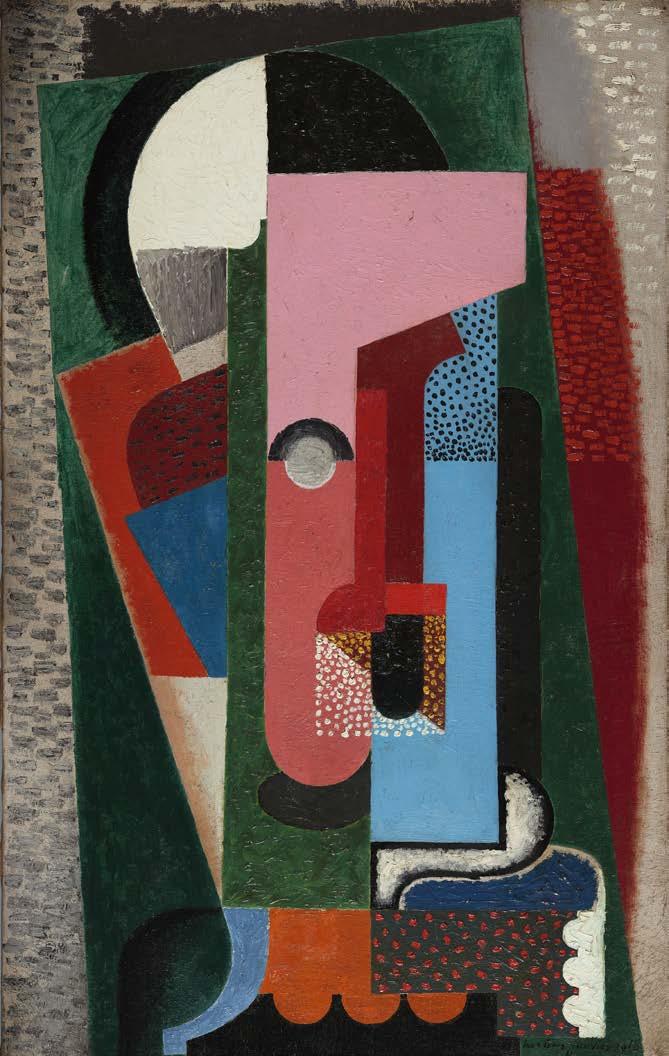
The Museum continues to consolidate its commitment to non-discrimination, gender equality and equal opportunities, adopting the necessary measures to guarantee accessibility and the removal of barriers, and promoting measures aimed at balancing work and family life.
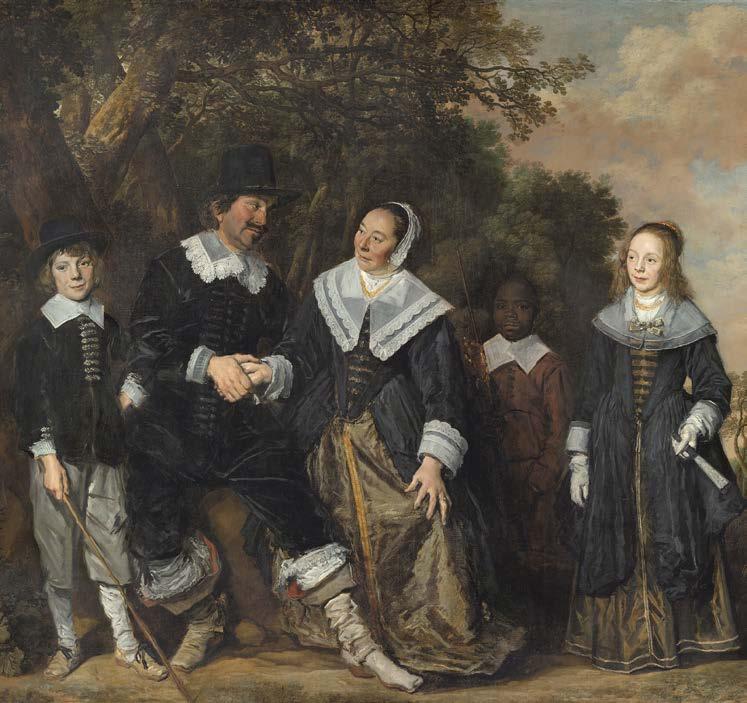
84 work-life balance measures

100% of employees surveyed in 2023 said they were satisfied with the work-life balance measures
The Museum hosted the Remote Work and Flexibility Charter signing event, attended by 66 companies
We have certified our commitment to work-life balance since 2008
Work-life balance is a fundamental pillar of the Museum and a distinctive feature that has defined it since 2008, when, for the first time, it certified its commitment to work-life balance in accordance with the EFR standard.
Today, the Museum has 84 worklife balance measures included

in the Concilia Thyssen Plan in areas such as job quality, time and space flexibility, support for employees’ families, personal and professional development and equal opportunities. On an ongoing basis, the Museum implements new measures or improves existing measures to adapt them to the needs of our staff, which they can express through different communication channels.

In 2023, the Museum renewed the As a further step towards work-life EFR certificate awarded by the balance, it is worth highlighting the MásFamilia Foundation, maintaining signing of the Digital Disconnection the classification as a Proactive+ Protocol, which guarantees the company in the B+ category, as staff’s right to disconnect outside well as its commitment to remote working hours. work and flexibility, in line with the Remote Work and Flexibility Charter.
Within the framework of the Concilia Plan, initiatives related to sustainability, health and solidarity via Thyssen Saludable, Thyssen Solidario and Thyssen ECO stand out.
• Red Cross Blood Donation Campaign.
• Collection of clothes and food for victims of the earthquakes in Turkey and Syria. The blankets were given to the SOS Refugiados NGO and the clothes to Cáritas.
• We collaborated with the Tirando del Hilo green employment training programme through the collection of clothes for workshops aimed at young people at risk of social exclusion.
• Madrina Foundation Christmas Campaign: Collection of second-hand toys for the children of the Madrina Foundation to celebrate the Three Wise Men.
• Distribution of fresh fruit once a week.
• Sanitas Healthy Cities campaign: The Museum joins the challenge to walk 6,000 steps a day from 1 May to 30 June and leave the car at home one day a week. For each participant who achieves this, Sanitas plants a tree.
• Weekly meditation videos: Work continues on the practice of mindfulness.
• “Skin Is Not a Fashion” talk, given by a specialist dermatologist to raise awareness of the importance of skin care.
• “How to Work Successfully and Happily” talk on cognitivebehavioural psychology as a form of therapy to improve emotional management.


• Participation in the Sanitas Healthy Cities campaign, where physical movement is promoted among the staff with the aim of planting trees and reforesting urban areas.
• Collection of clothes from Museum employees for the Opción 3 Iniciativa Social NGO, for the Tirando del Hilo training programme, on recycling and textile transformation for young people at risk of social exclusion.
• Measurement of the Museo Thyssen’s carbon footprint.
The Museo Nacional Thyssen-Bornemisza is an accessible museum, which guarantees that everyone who visits the Museum can enjoy its facilities, programmes and collections. Our commitment to inclusion and equal opportunities is confirmed by the renewal, for the seventh consecutive year, of the Universal Accessibility certificate based on the UNE 170001 and UNE 170002 standards.
The maturity and degree of implementation of the accessibility management system on a daily basis.
Numerous awards and recognitions in the field of accessibility, including the Queen Letizia National Disability Award in the Inclusive Culture category, for placing people with disabilities at the centre of the cultural experience.
Committed to people with different abilities.
The projects launched by EducaThyssen, highlighting:
- Made to Measure, designed to develop a visit as adapted as possible to the specific needs of participants.
- Dynamo/Alternator, a space for dialogue, reflection and training with social, community and health professionals to rethink and expand the possibilities of the Museum as a setting and generate work tools for vulnerable groups.
- Easy Museum, cognitive accessibility project and collaborative initiative to create and publish the first easy-to-read guide of the Thyssen-Bornemisza Collection.
The development of a new accessible tour for deaf people of 50 works in the collection, by means of videos in sign language with subtitles. There are now 35 new sign language guides to complement the 15 that already existed.
The Museum plays a key role in promoting gender equality through some of its exhibitions and educational activities, giving visibility to the contributions and achievements of women and promoting changes towards a more egalitarian society.
The state of conservation and maintenance of the facilities, as well as the management of preventive maintenance of the accessibilityrelated elements and infrastructures.
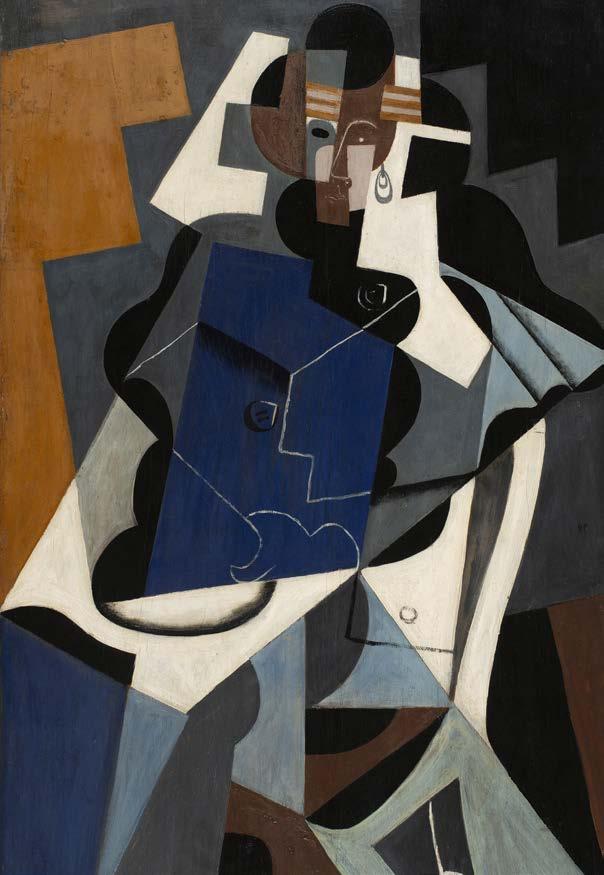
The accessibility satisfaction survey remains above 9 points.
Improvements in the level of website accessibility: improvement in the lettering size and font, text separated from images, more space between contents and greater ease in placing the cursor on interactive areas.
The Museum has registered its 2nd Equality Plan, renewing its commitment to the development of measures that integrate equal treatment and opportunities between women and men, without discriminating directly or indirectly on the basis of gender, as well as its mission to achieve real equality within the institution.
Simulation of the evacuation of a person with reduced mobility in collaboration with the Madrid Fire Brigade and Civil Protection.
Actions related to accessibility for both inhouse staff and external workers.
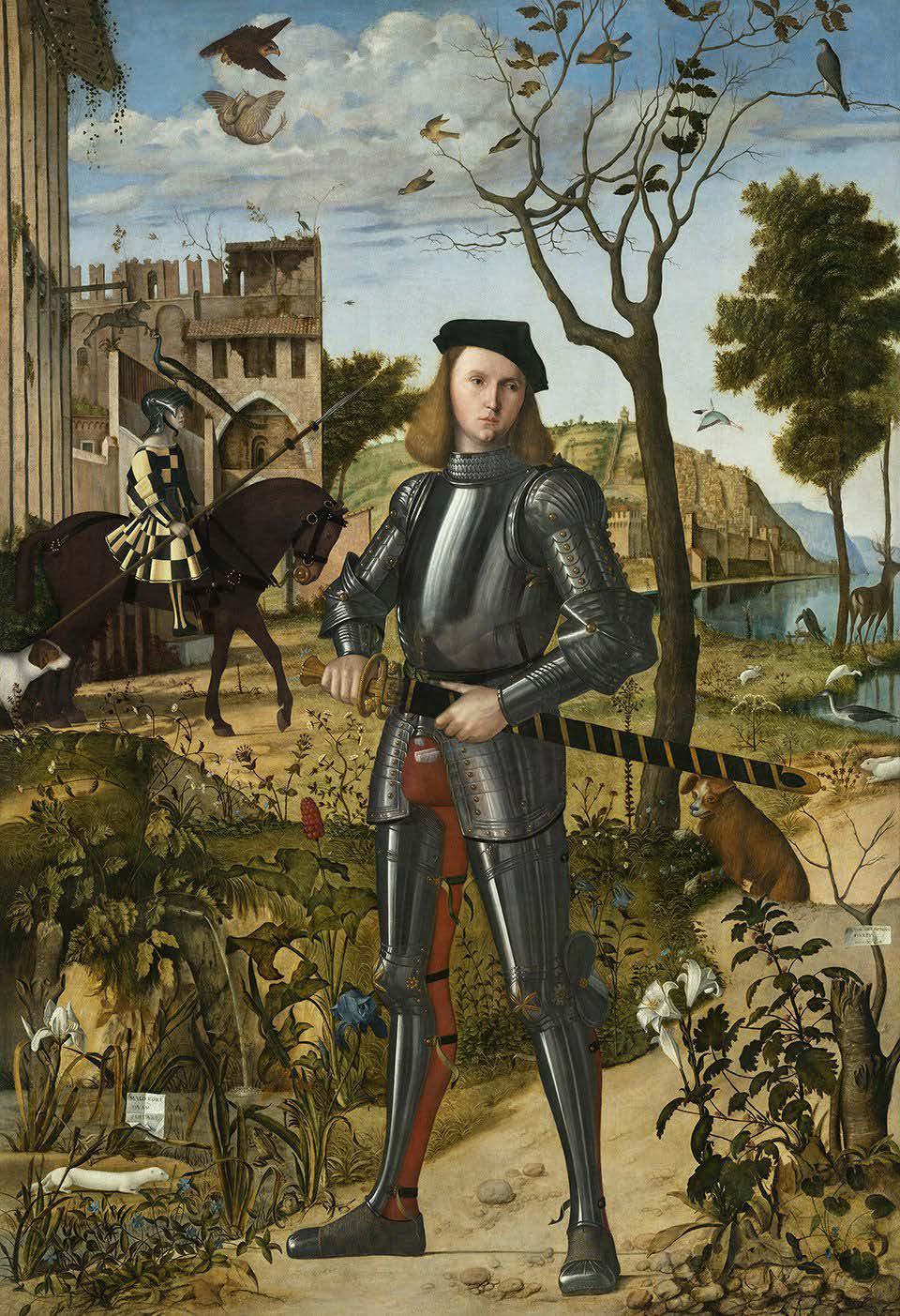
In 2023, we continued to implement the annual health care and occupational risk prevention activities, key to ensuring a safe and healthy working environment for all our employees.
Preventive action planning.
Updating the coordination of business activities with the companies that carry out work in the Museum.
Mandatory medical check-ups that include, in addition to the usual tests, values such as iron levels, determination of prostate-specific antigens, and faecal occult blood tests for the prevention of colon cancer. Also included are tests for “good” (HDL) and “bad” (LDL) cholesterol, and glycosylated haemoglobin for the detection of possible diabetes.
Evaluation of occupational risks by positions.
Flu vaccination.
Gynaecological check-ups for women employees who wish to do them and urological medical check-ups for men over the age of 50. In addition, these examinations analyse assessments with the aim of preventing the pathologies with the highest rates of incidence in the population: cardiovascular risk, psycho-emotional assessment, nutritional assessment and assessment of the FIB-4 or liver fibrosis index.
Telephone consultations with a doctor to resolve doubts related to the results of medical examinations.
The Museum promotes a culture of safety
Informing new personnel of the risks associated with their position via an official document.
Purchase of PPE.
Digital convergence in the Museum is a process that involves the integration of traditional media and digital technologies. This contributes to fostering communication, optimising management and creating new forms of interaction and experiences for our visitors.
The Digital Convergence Model seeks to promote the use of technology in all its activities and in a cross-cutting way in all its departments, with the participation of all the Museum’s employees. The proposed ideas and projects are evaluated and supervised by a Digital Committee.
The Technology Department leads the digitisation of processes. The Museum has a multidisciplinary team that addresses its digital transformation, strategy and positioning in the digital ecosystem through a solid and orderly strategy.
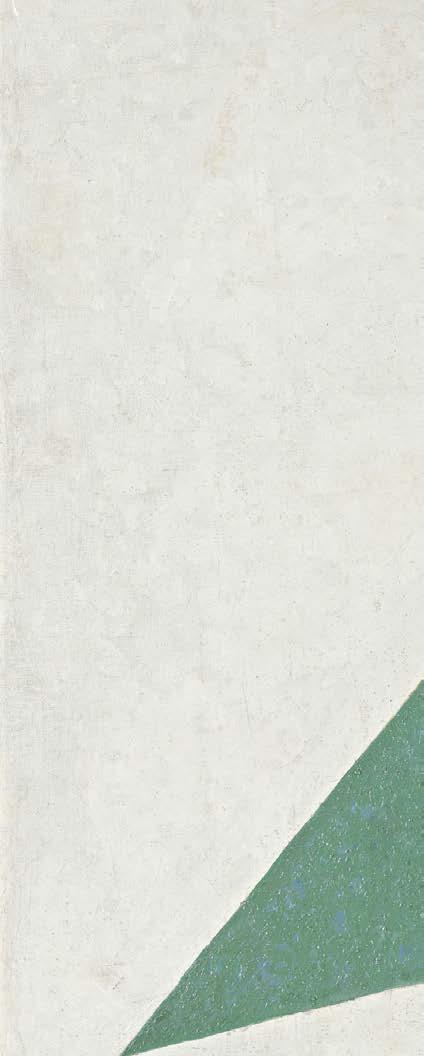
The main projects undertaken in 2023 are detailed here:
Aimed at automating the invoicing process through the implementation of software such as Document Capture, which captures invoices from a mailbox, analyses and extracts the necessary data and finally initiates the approval process in Business Central.
Management, maintenance and support of the computer applications that support the Museum’s daily activities.

Virtual Museum Platform
Enhancements aimed at providing visitors with automated or guided virtual tour experiences with a museum guide.
Progress has been made in the implementation of the TMS Gallery Systems solution and the migration of data from other applications.
Microsoft Sharepoint
Data strategy
A study of technical, functional and human requirements, as well as contract specifications, were carried out.
Enhancing the improvement of the intranet and the creation of specific sites such as the following: Museum branding, employee channel, video centre, cybersecurity awareness and digital convergence and innovation.
Analysis of LMS (Learning Management Systems) cloud services that allow the Museum to provide online training to its employees.
Whistleblowing channel
A new online shop has been contracted on the Shopify cloud platform, with the aim of renewing the online shop.
In compliance with Law 2/2023, dated 20 February, regulating the protection of people who report regulatory infringements in the fight against corruption, a whistleblowing channel was created that guarantees the confidentiality of the reports received and maintains the privacy of the information and anonymity of the whistleblower.
Storage, virtualisation and backup infrastructure
The storage, virtualisation and backup infrastructure has been renewed, as well as the management of a backup service.
Activities related to the IT and telecommunications equipment and services currently available at the Museum.
Hosting of web services
Workstation
Replacement of virtual equipment with laptops and workstations.
Migration of websites (Museothyssen.org, Educathyssen.org and Tienda. museothyssen.org) to the Microsoft Azure cloud platform, for greater storage and security capacity.
1,614 incidents/ requests of microcomputer support managed
8,000 users/ connections per month to our open WiFi, mostly from mobile devices
451 incidents/ requests related to Microsoft Business Central resolved
Activities related to the protection of computer systems and the data they manage.
Mainly support activities, linked to computer equipment and the applications that users use on a daily basis.

service
The backup service has been renewed, moving from a tapebased service to a cloud-based service, which allows data to be encrypted and offers a shorter recovery time in the event of an incident.
iSOC service
Agreement for contracting a Comprehensive Cybersecurity Operations Centre (iSOC) service for 2024, which provides visibility and coordination of cybersecurity and cyber-resilience activities.
Awareness raising
Carrying out a phishing campaign aimed at training the Museum’s employees on this type of risk, as well as analysing their overall awareness. Based on the results obtained, it became clear that there has been a large decrease in the number of users who entered their credentials in the phishing attack.
CCN-STI guidelines
Following the recommendations of the CCN (National Cryptologic Centre), progress has been made in the application of the CCN-STI guidelines, standards, instructions and recommendations developed by the CCN aimed at improving institutions’ degrees of cybersecurity.
In order to guarantee the protection of people and property, ensure the normal functioning of services and safeguard and protect the Museum’s works of art along with those loaned for temporary exhibitions, the security department has developed a Comprehensive Security System.
During 2023, various actions were carried out, such as:
Continuation of the special security measures to prevent and reinforce security in the event of possible attacks by environmental activists, such as those that have occurred in other museums around the world.
General maintenance and, where necessary, the repair and/or replacement of cameras, motion sensors, electronic components, alarm centres, power supplies, etc.
Updating and modernisation of access controls, replacing electronic door cylinders and testing the viability of the mobile app for its implementation.
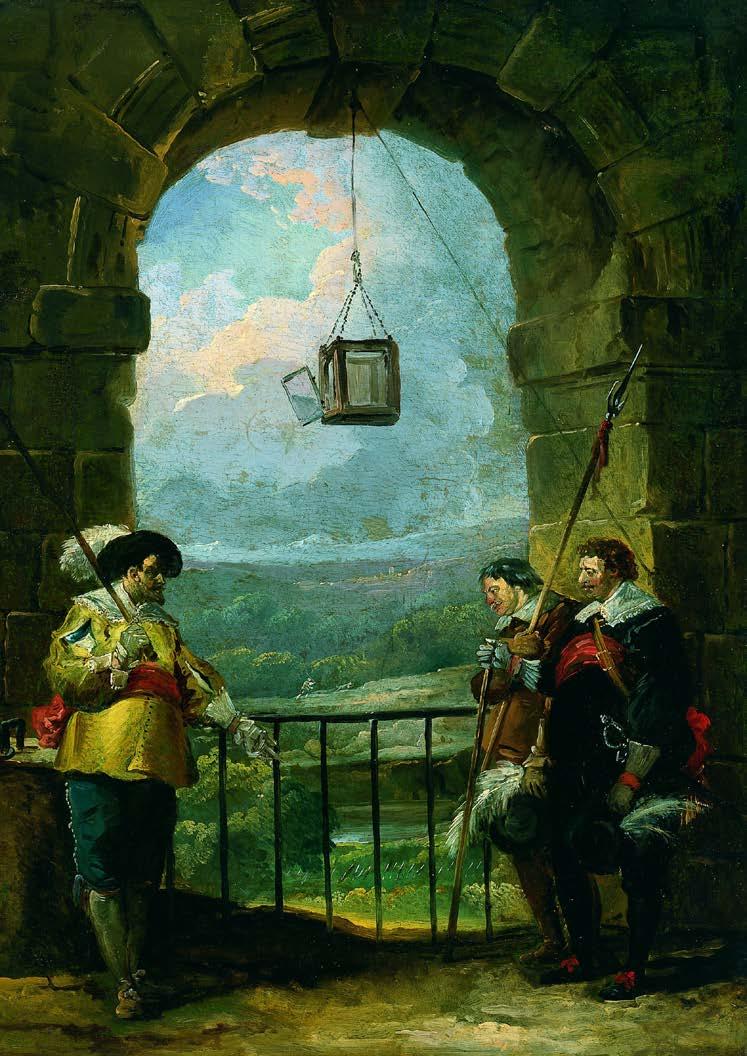
Analysis of controls to assess the state of the Museum’s cybersecurity in order to identify possible attacks, unauthorised access or any event that could pose a physical or logical threat.

www.museothyssen.org